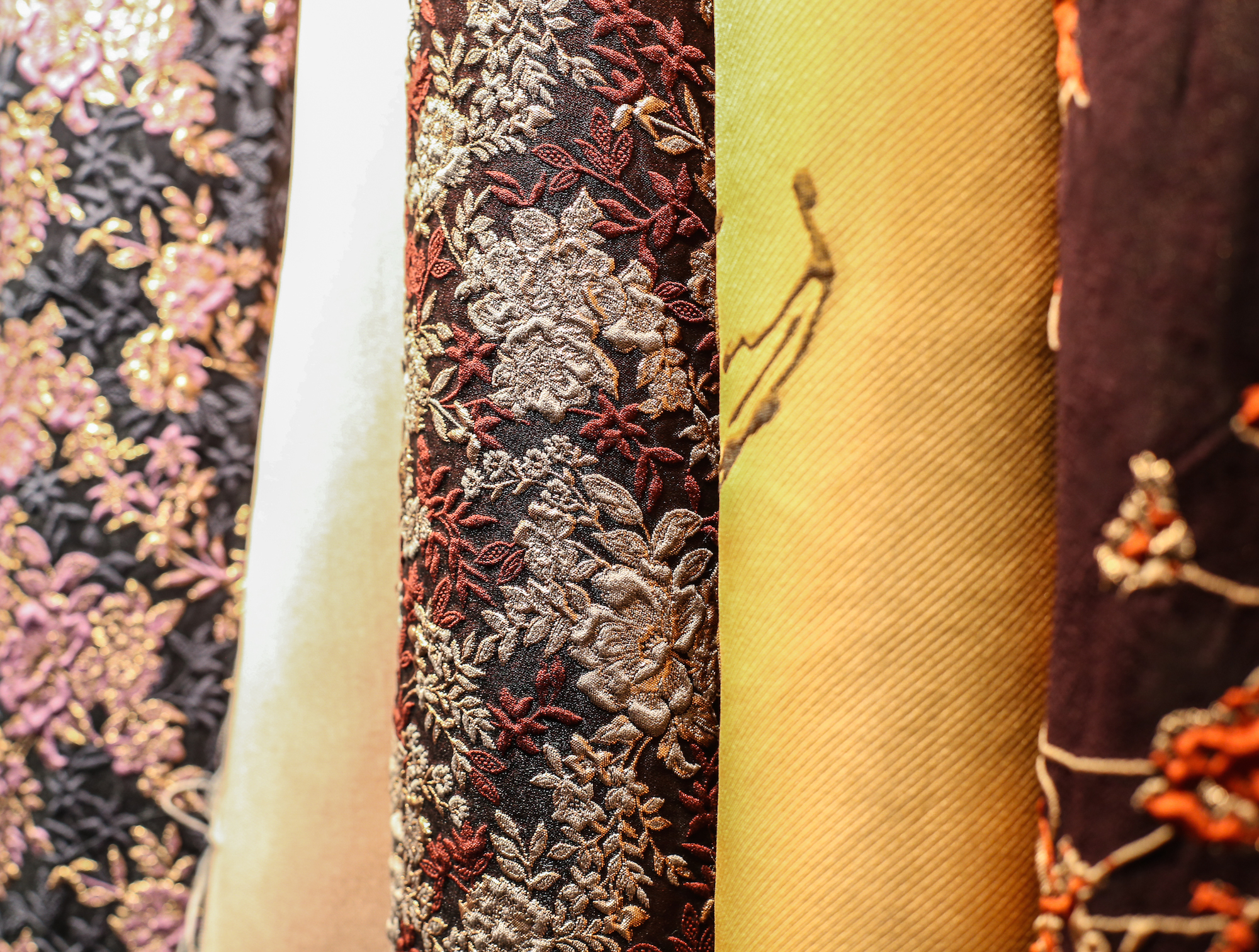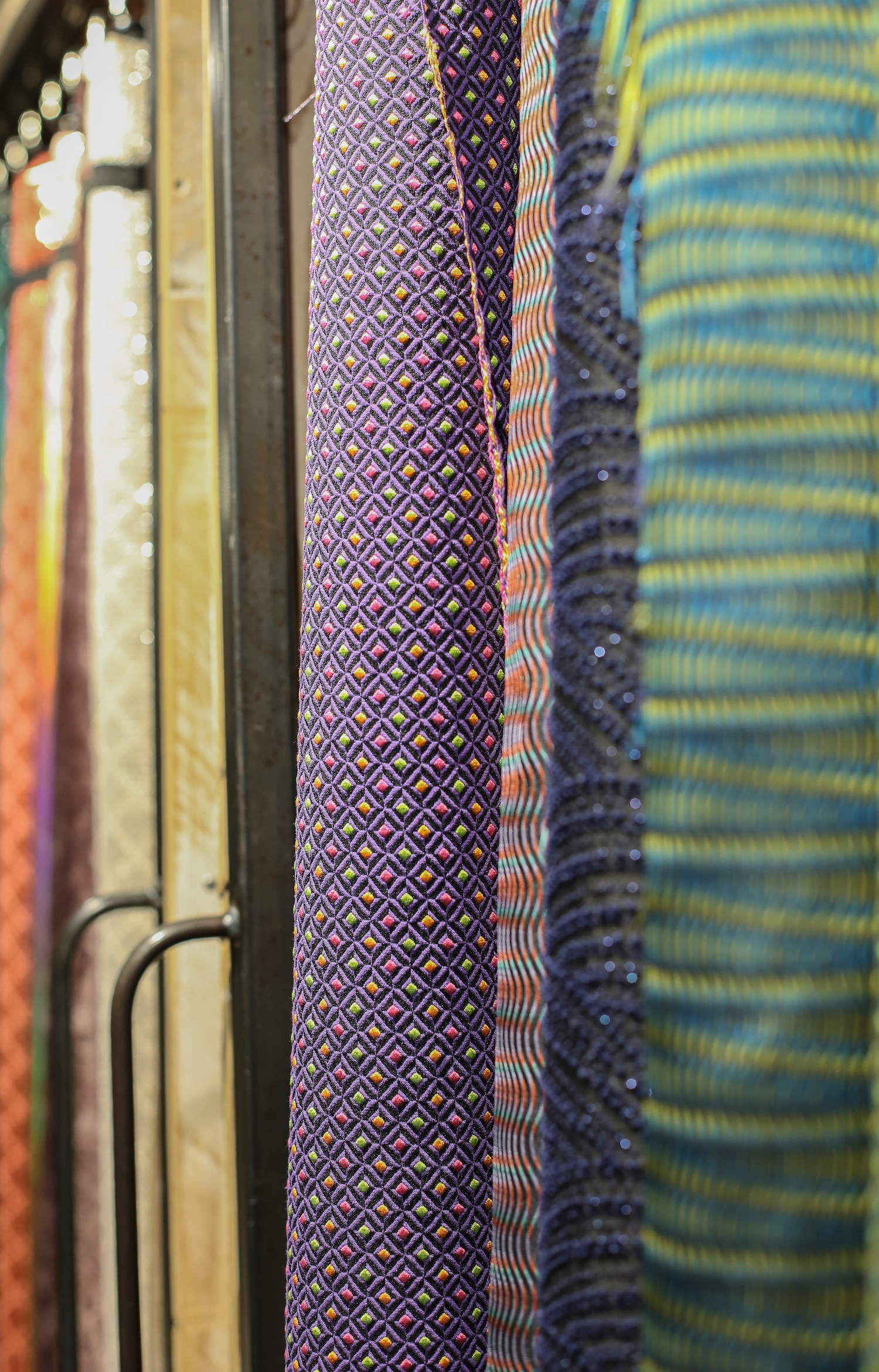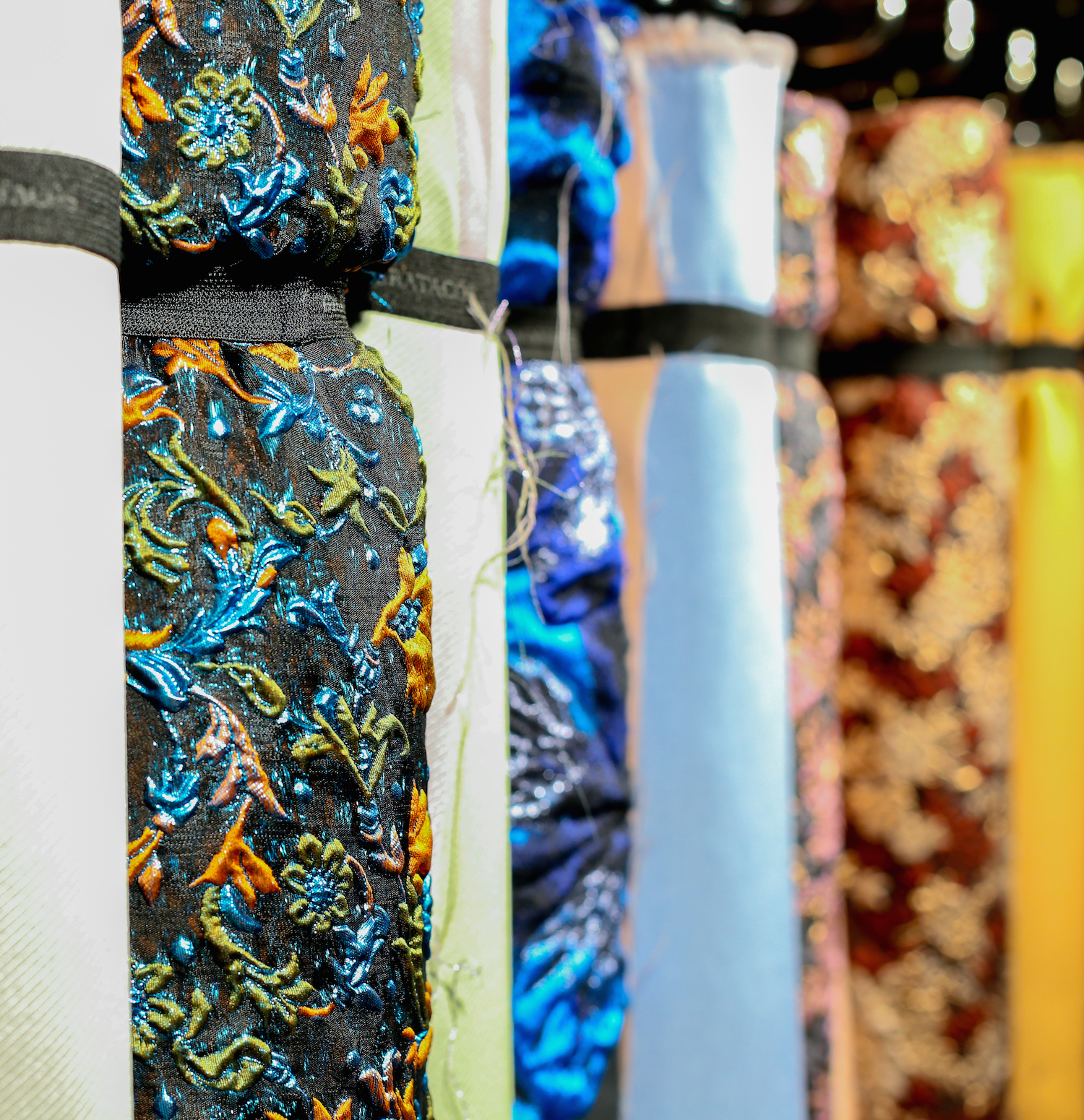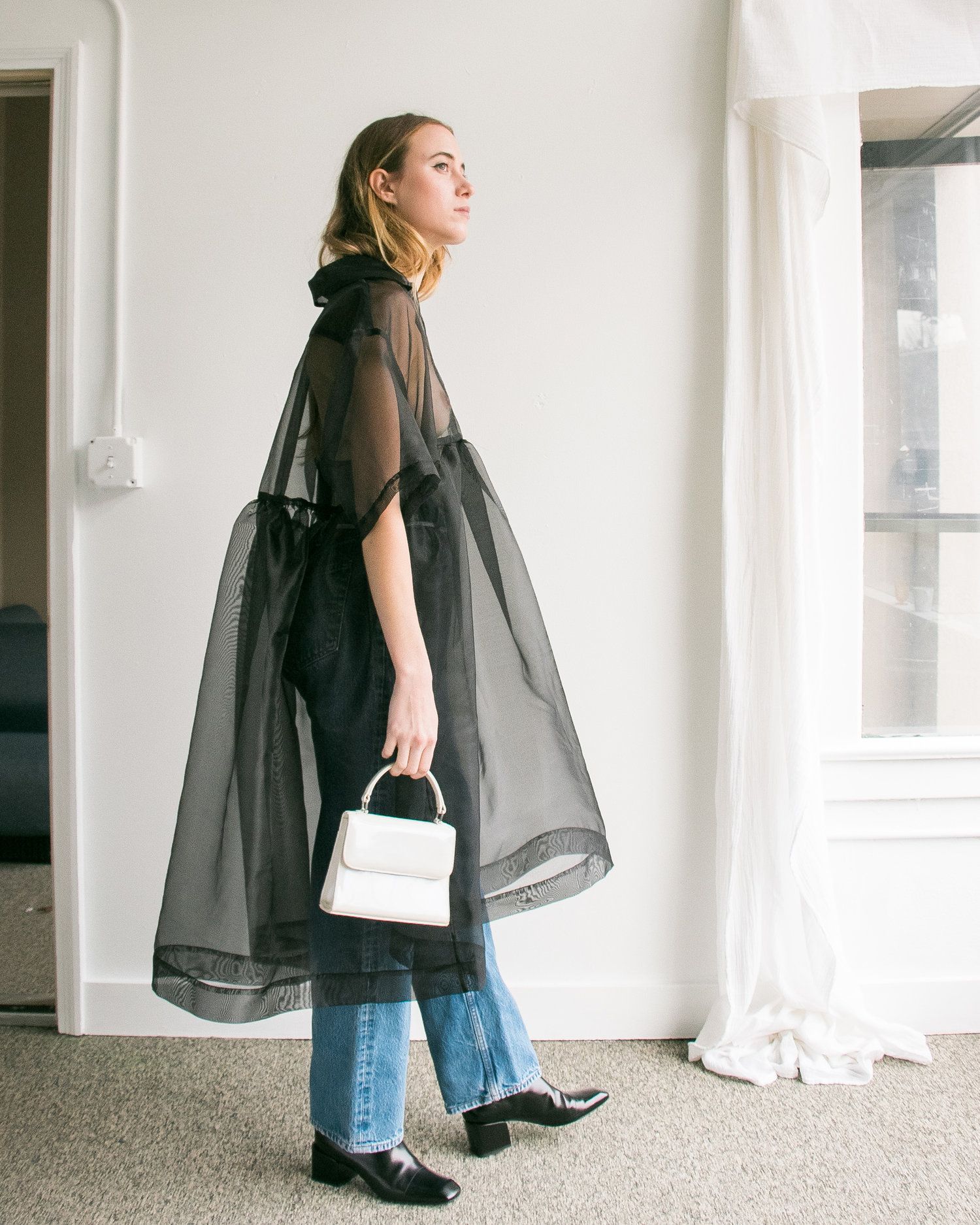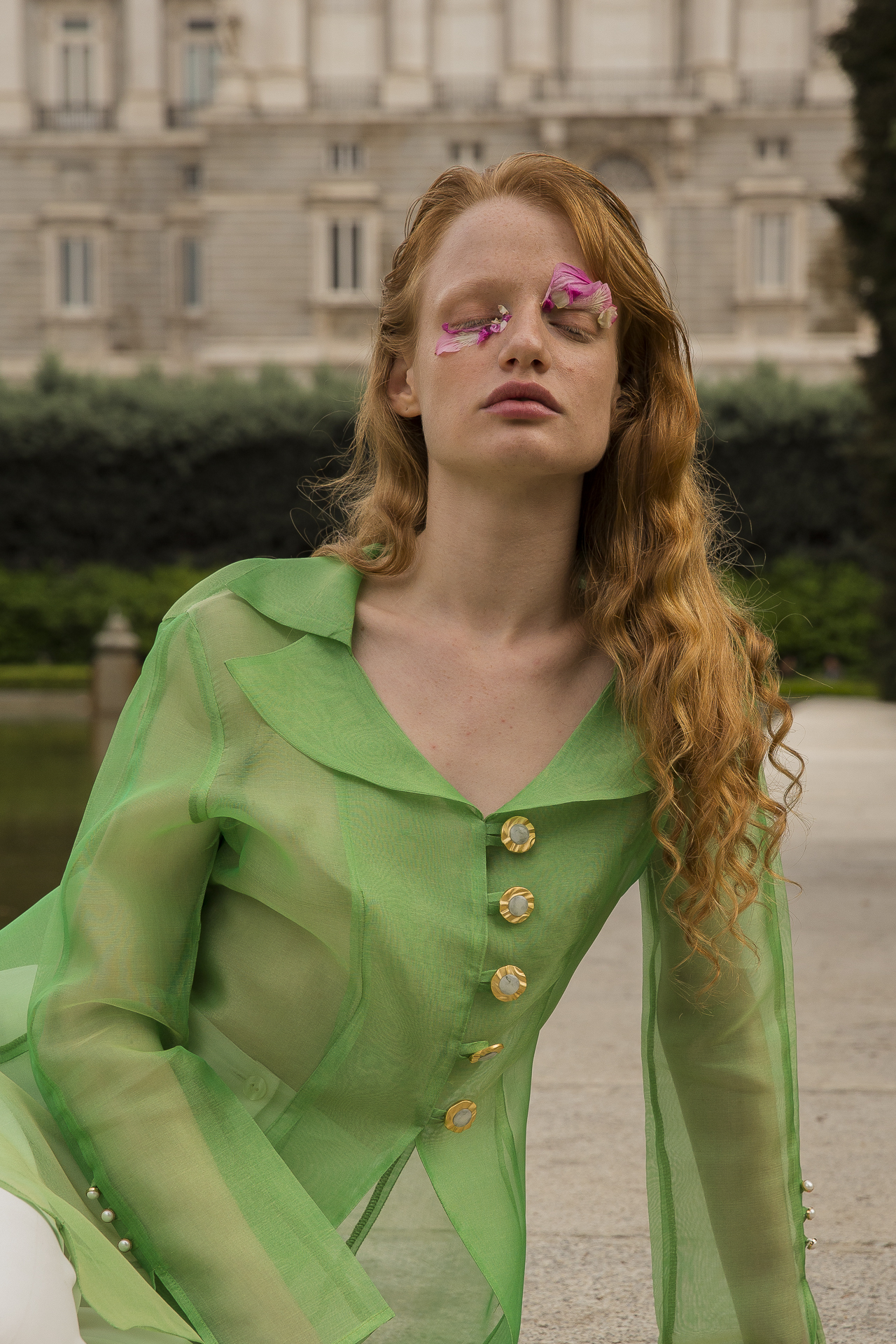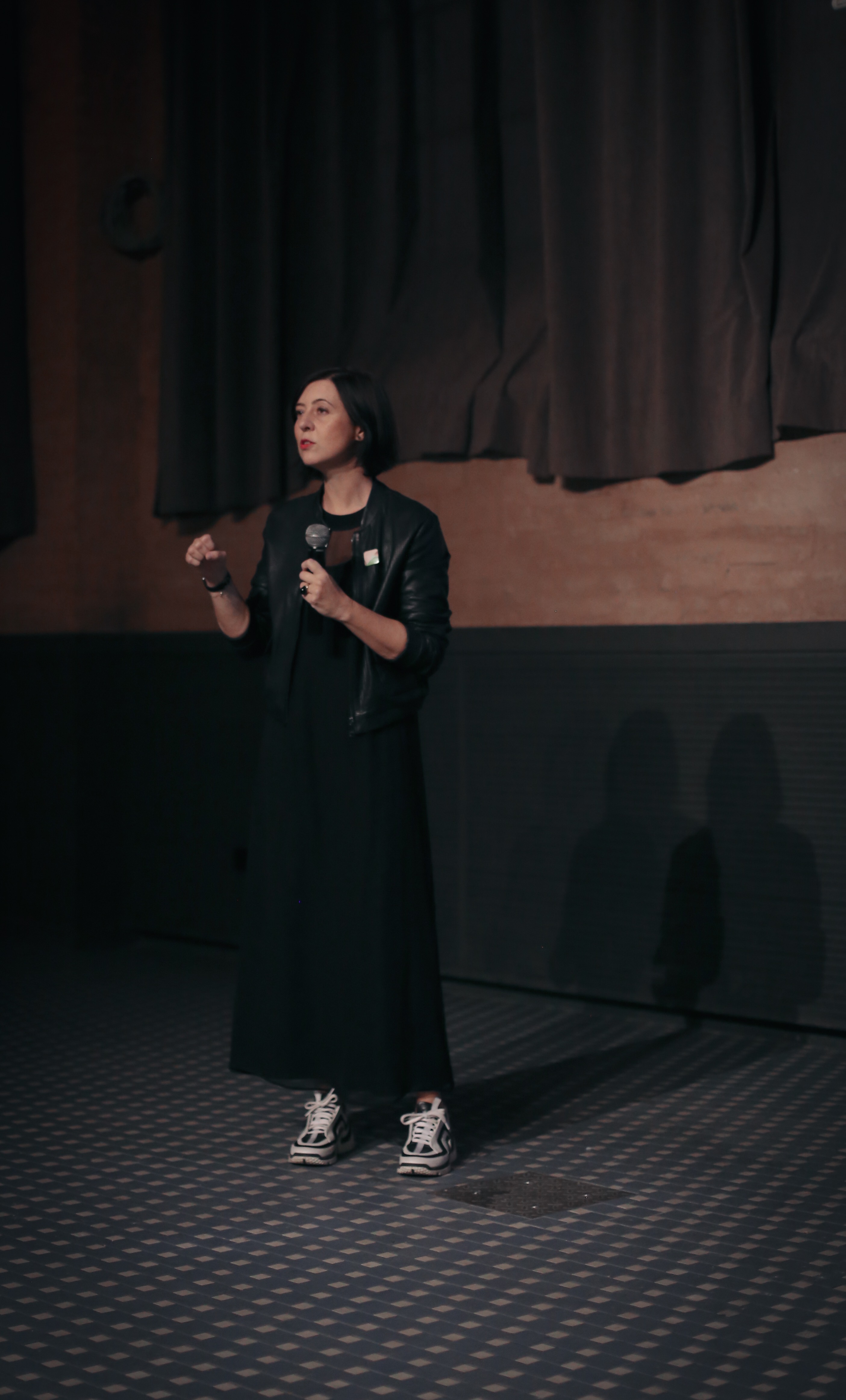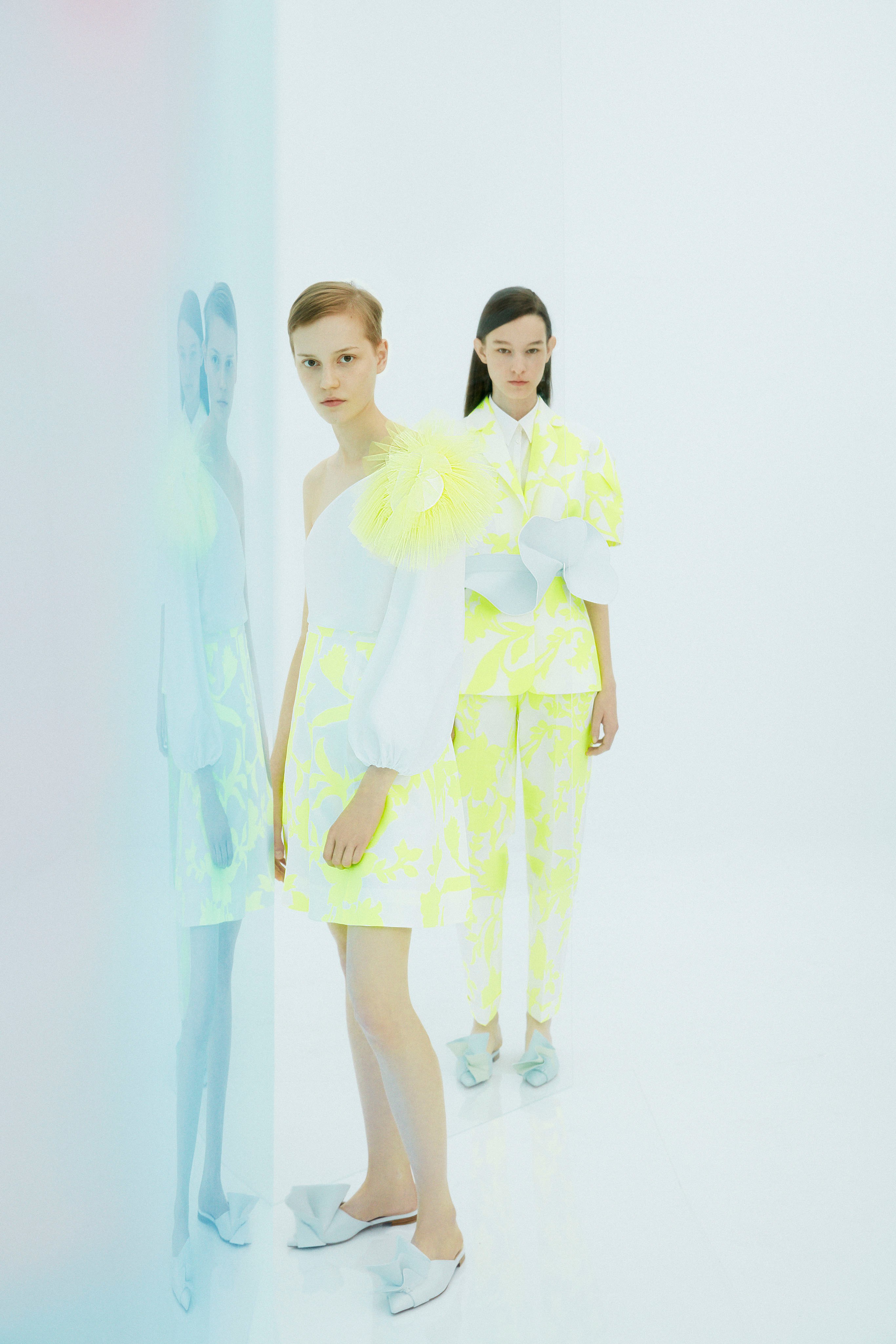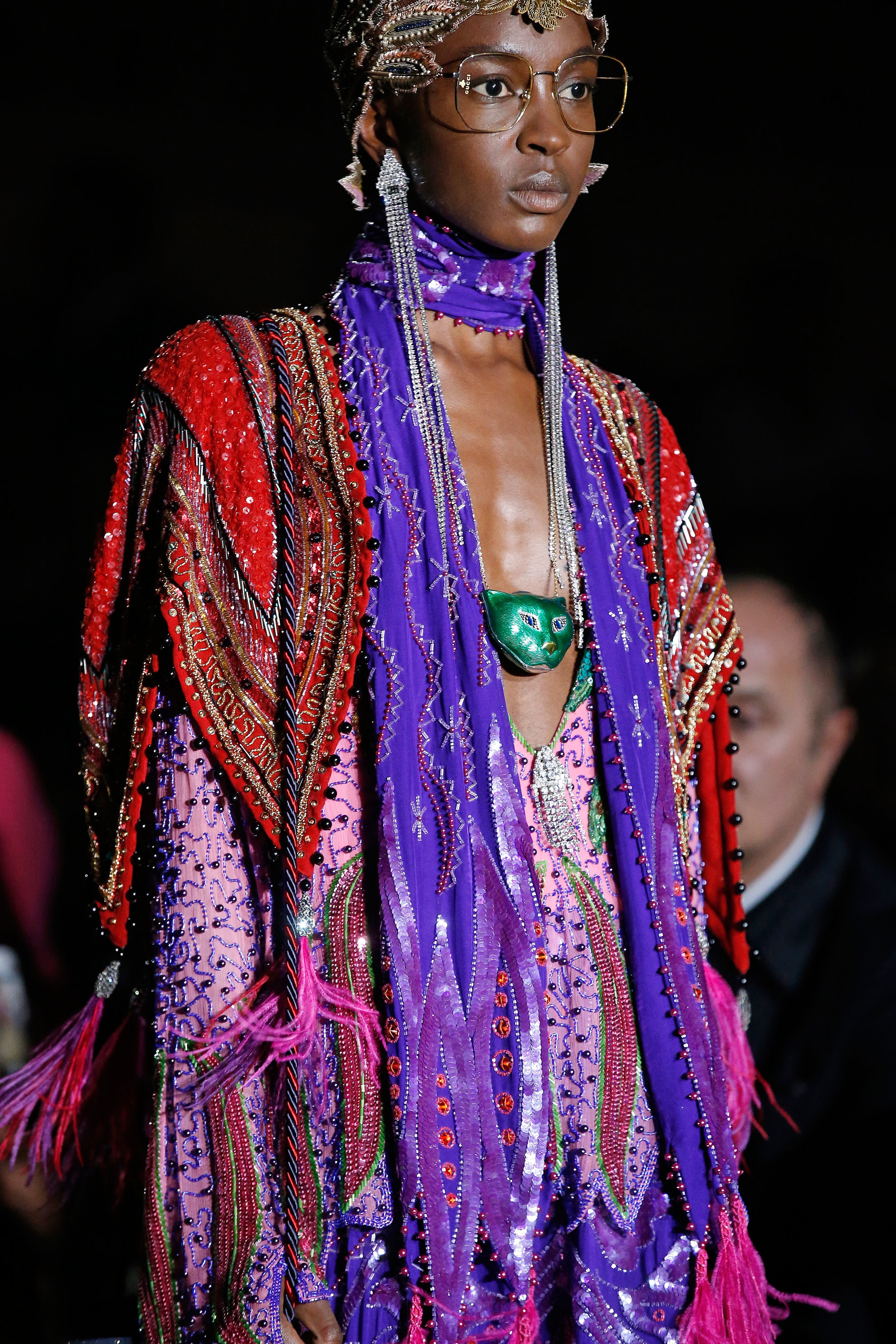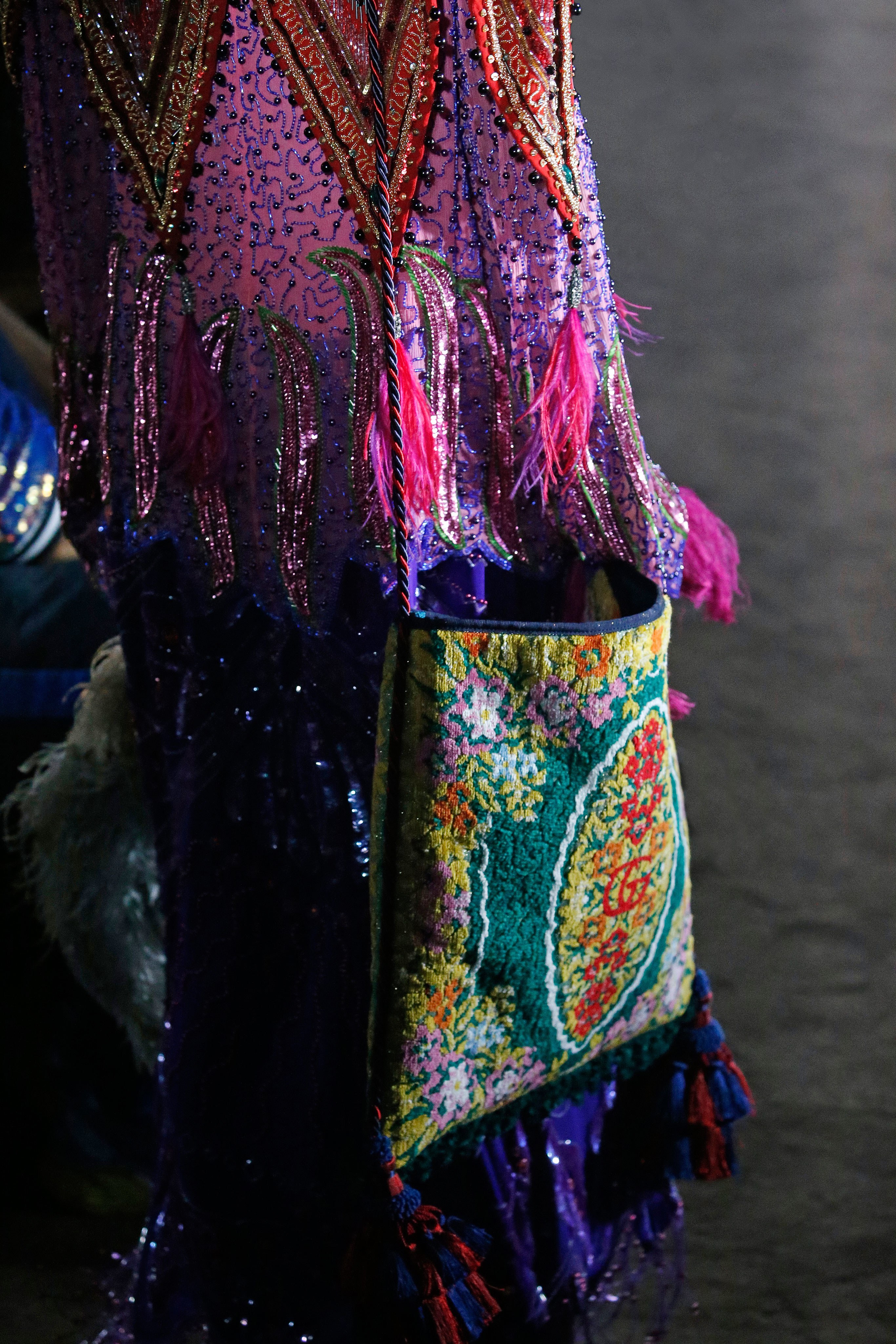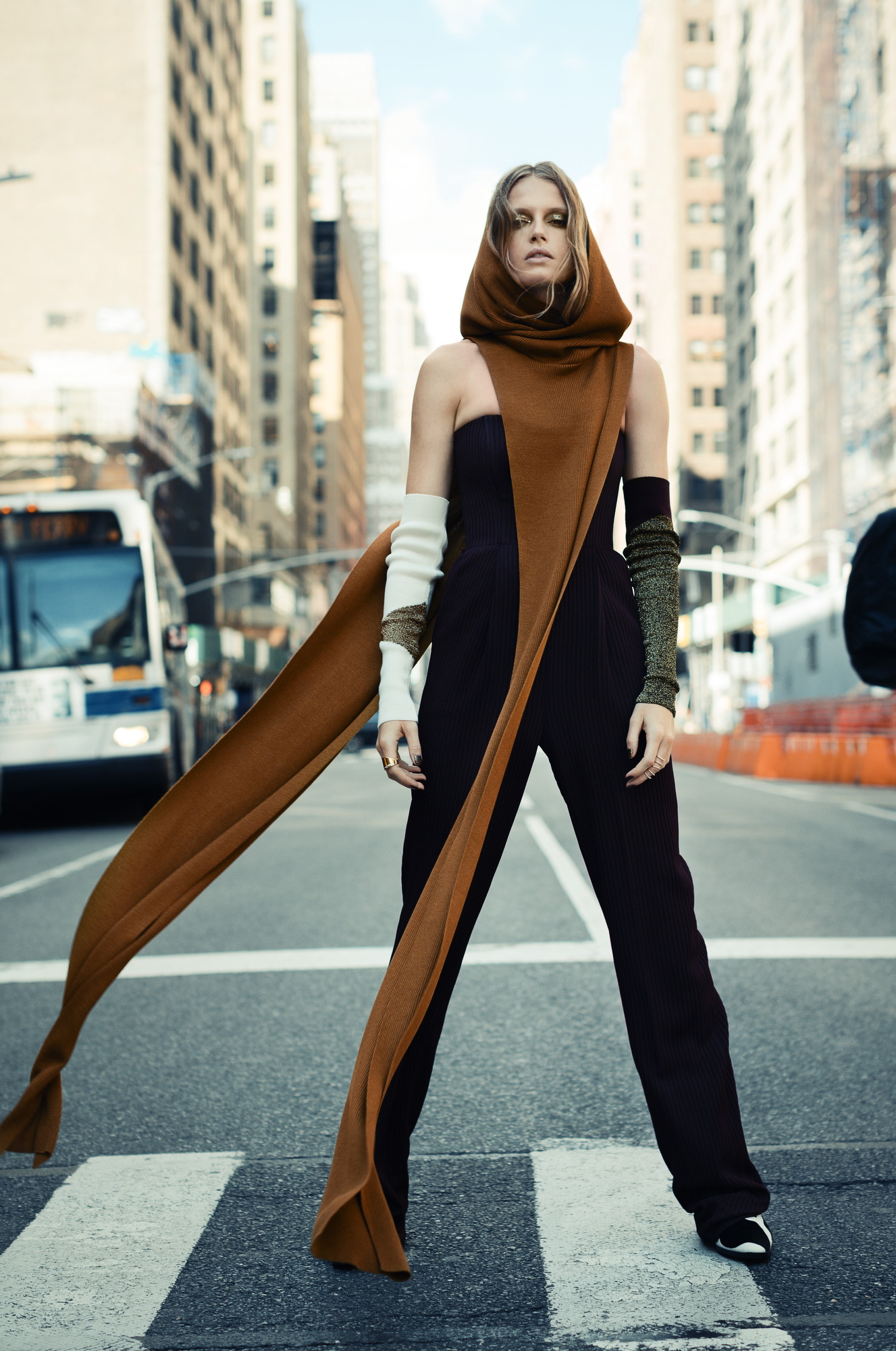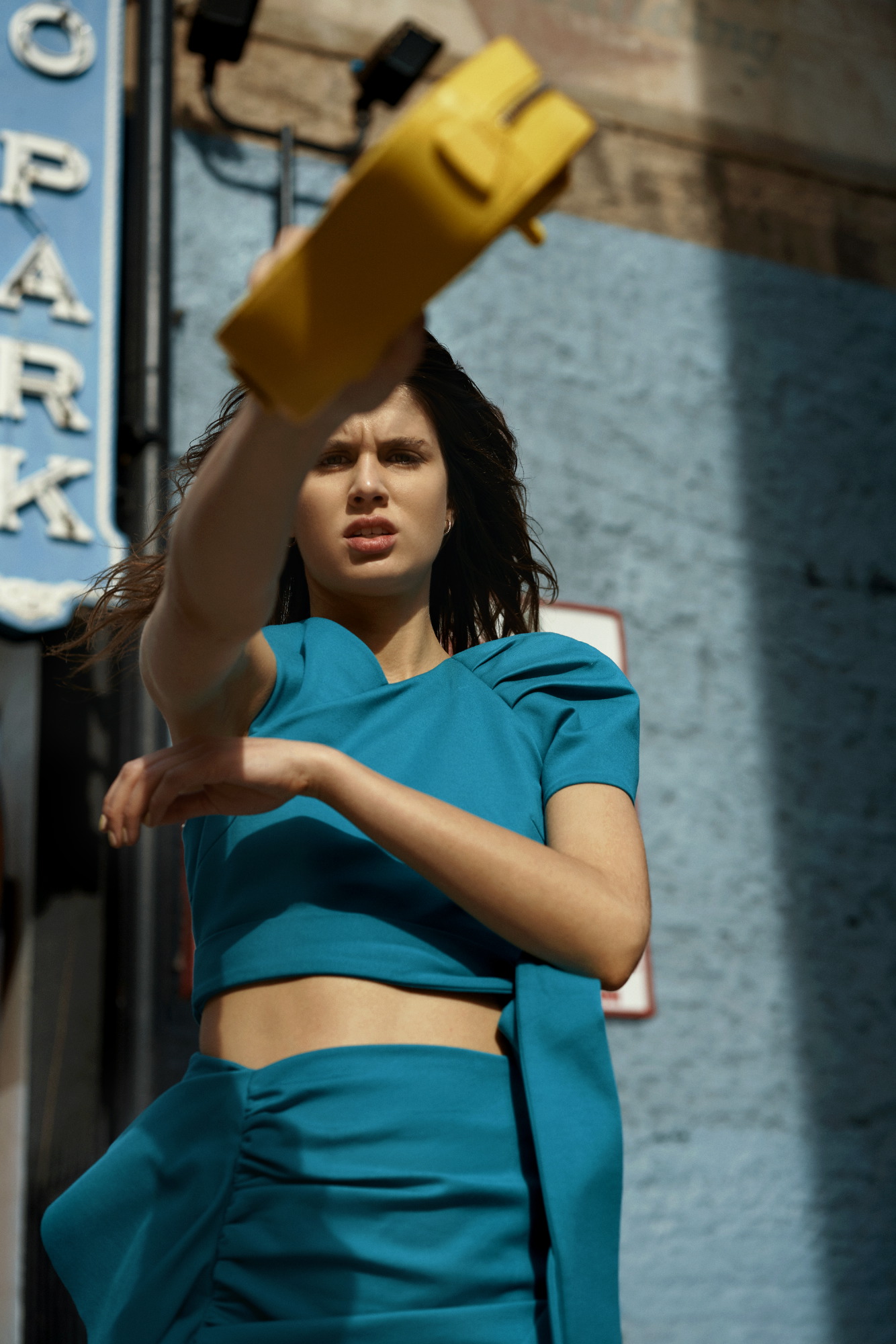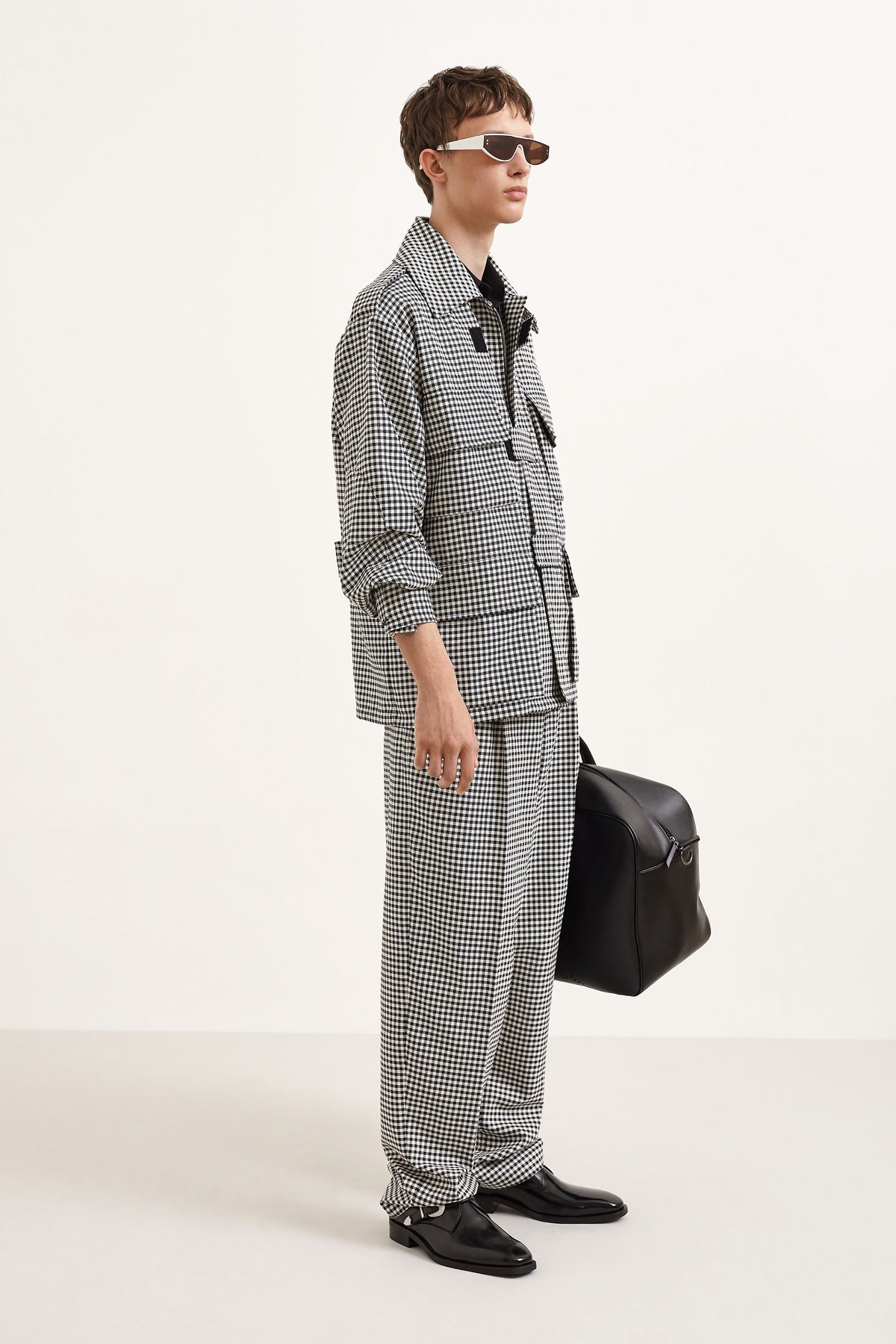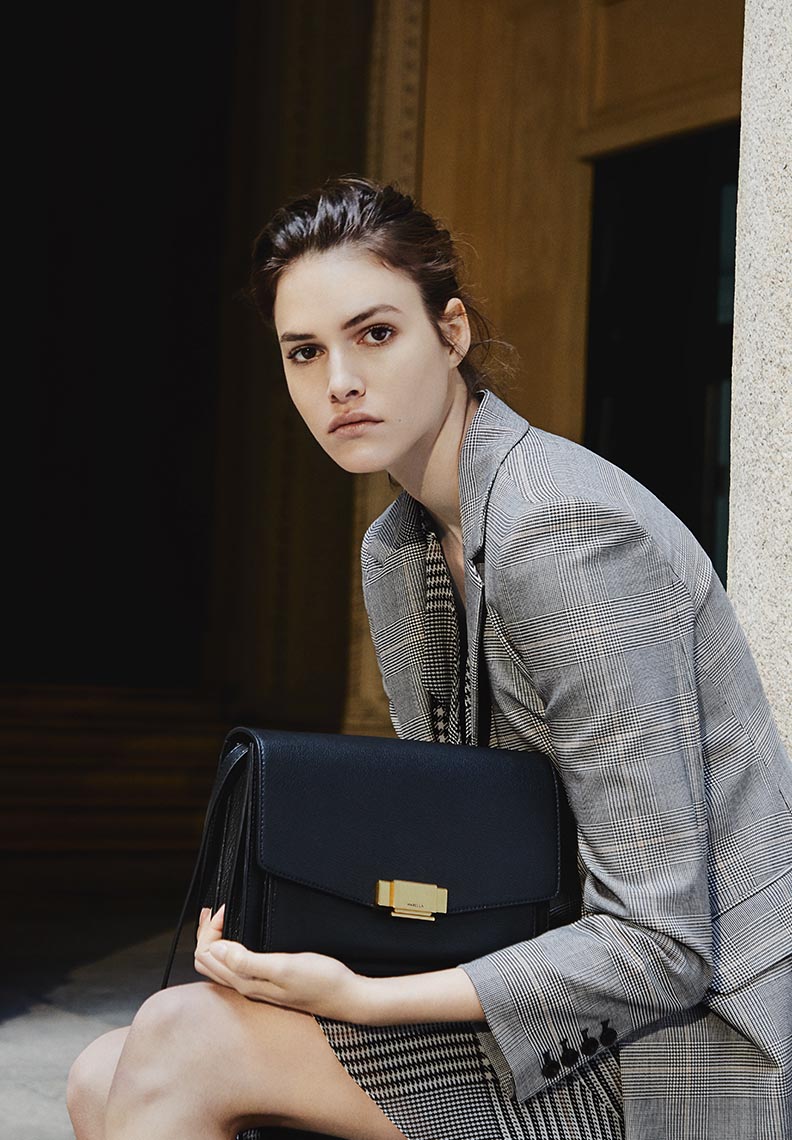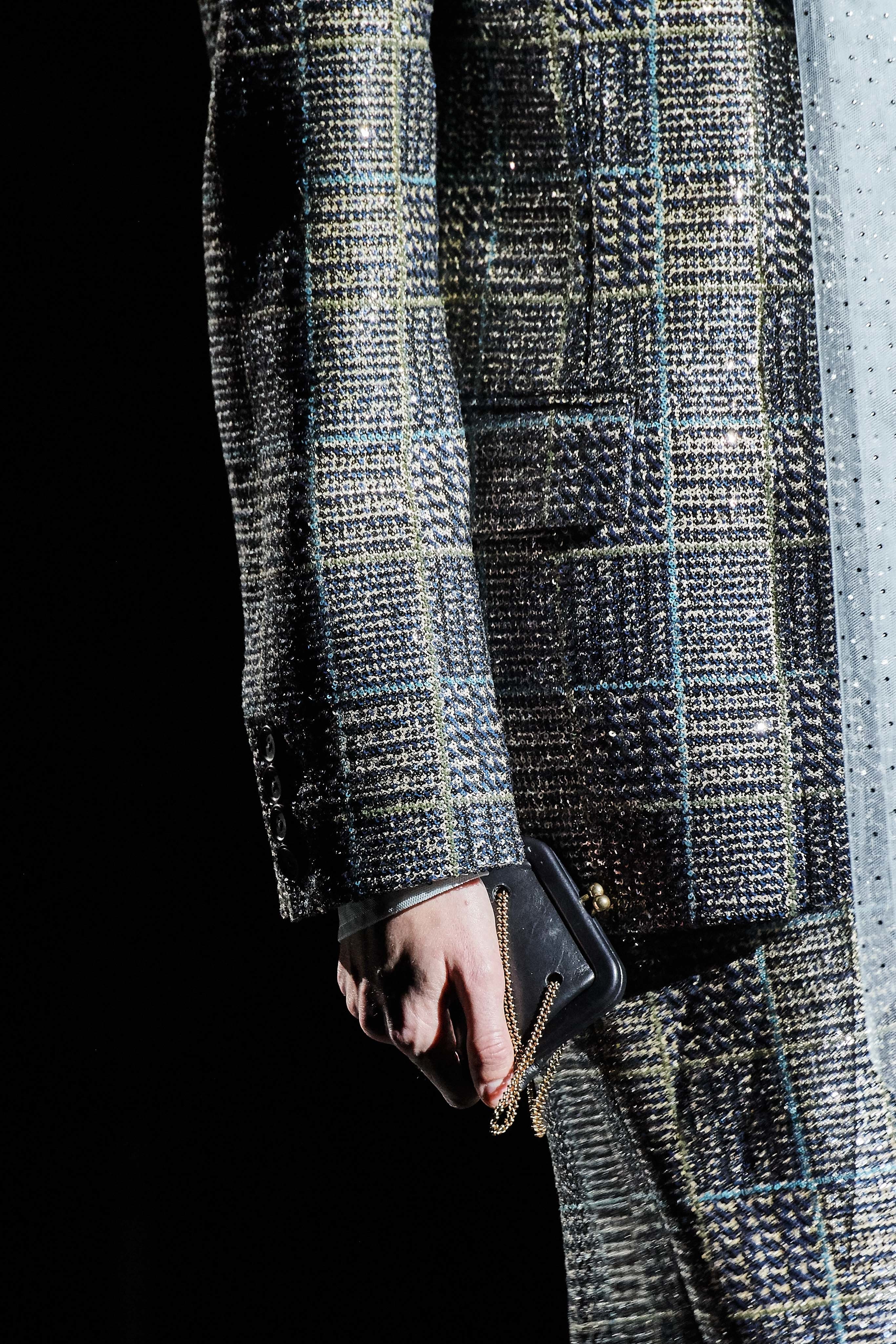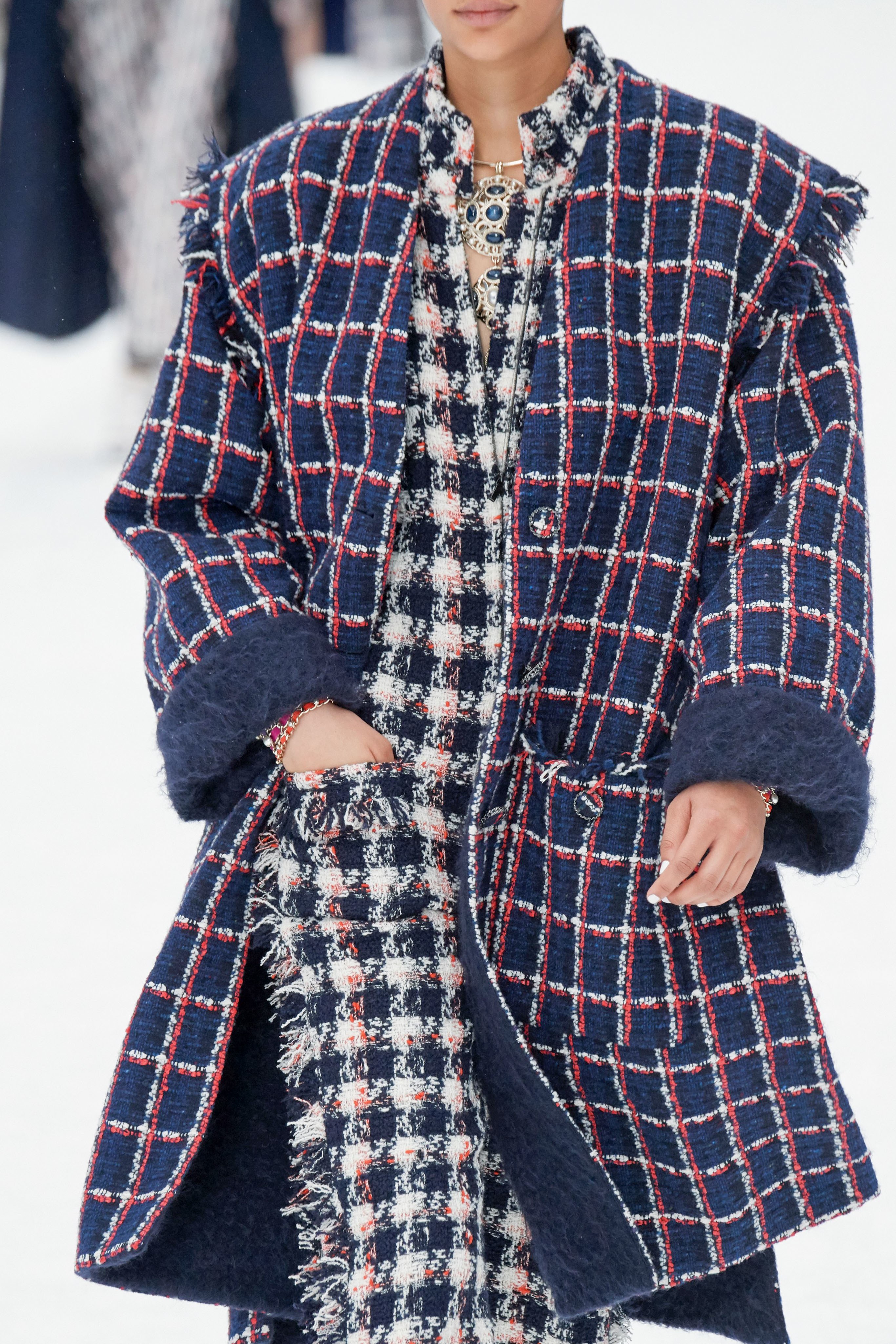Miércoles 27 noviembre 2019
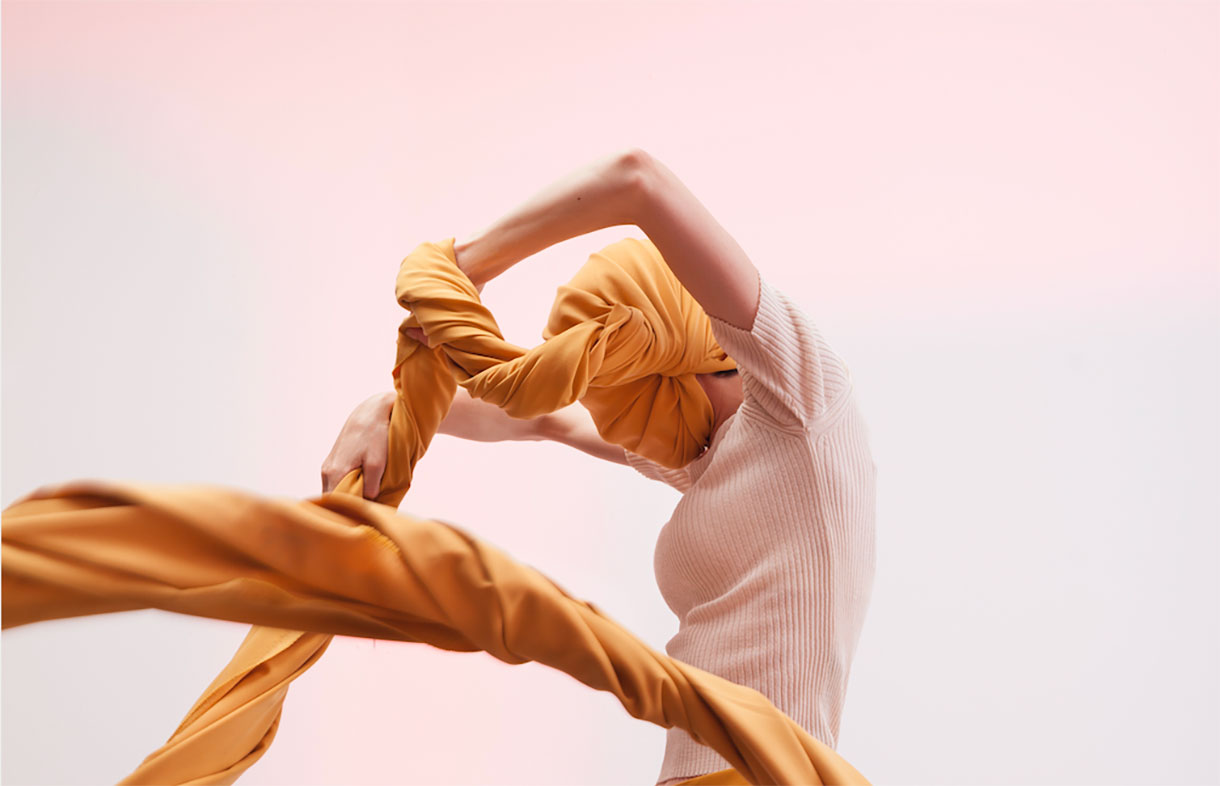
Barcelona is emerging, step by step, as a sustainable city in all its facets, including fashion. In this area the city will become this weekend (29th/30th November) the epicentre of the debate on sustainable and ethical fashion in southern Europe with the celebration of the first edition of the Re-Barcelona Sustainable Fashion Global Event: it is an international meeting point where sustainability in the fashion sector will be the protagonist and where the growing need to reimagine the fashion industry and rethink our consumption habits will be discussed. This unique event, co-organized by the Asociación Moda Sostenible Barcelona (MSBCN) and Seed & Click, and promoted by Barcelona City Council, has the vocation of becoming the voice and discussion forum of the best practices and initiatives in creation, production, sales and use of sustainable fashion among Mediterranean countries.
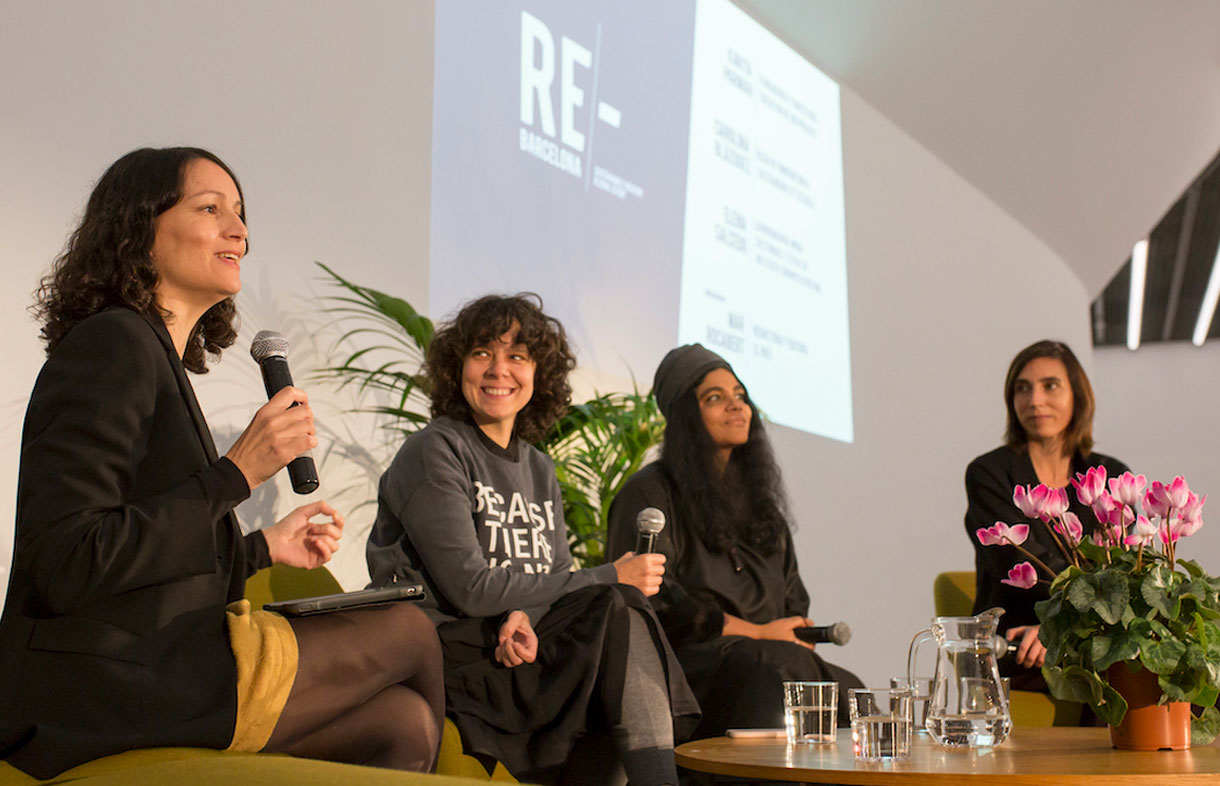
Presentations in sustainable key
Re-Barcelona will bring together more than 30 international professionals in sustainable fashion at the Disseny Hub Barcelona. The first day is aimed at professionals in the fashion industry and the second day will be open to the public, seeking to make consumers aware and point them towards more responsible consumption habits via fashion exhibitions, workshops, projections and masterclasses .
Thus on Friday 29th the Summit Sustainable Fashion and Beyond will take place, which for professionals will address the realities and challenges of the fashion sector in order to to bring about a more sustainable industry. During this day session prominent international names such as Rossana Orlandi , one of the most influential personalities in the world of design, will participate and among others Marie-Claire Daveu , director of sustainability at Kering, Sara K Arnold, founder of Higher Studio, Aldo Sollazzo, CEO of Noumena, Manel Subirats, general director of Greendyes Research Lab of Nextil, Mar Isla, Director of the Chair of Circular Economy, TecnoCampus, Kavita Parmar, founder of IOU Project and Marilyn Martinez, senior analyst at Make Fashion Circular at Ellen MacArthur Foundation.
In addition the meeting will feature four round table fora: the first, to discuss the capacity of fabric recycling and reflect on innovative and sustainable materials for the future; the second, to discuss new business models; the third, on the consumer mindset ; the last one, on sustainability in its entirety, incorporated into retail of the future. Prominent spokespeople from the sector will participate, such as, among others, Manuel Martos , Group Managing Director of Nextil, François-Ghislain Morillion , founder and CEO of Veja, Elena Foguet, Business Director Spain of Value Retail, Mariona Sanz , director of Girbau LAB in Girbau, Carolina Álvarez-Osorio , director of marketing and communication of Ecoalf, Carlos Lahoz , Global Brand Innovation Strategist for Textile Printing Business, of HP Inc ., Franco Ghiringhelli , general director, of Ezio Ghiringhelli Spa, Pau Solanilla , president, of Reputation Republik and Tamsin Lejeune , CEO of Common Objective. Iria Pérez, editor in chief of Modaes.es will be a moderator, as will David Allo, director of sustainability at Texfor. This summit for professionals is a paid event and tickets are on sale on the official website.
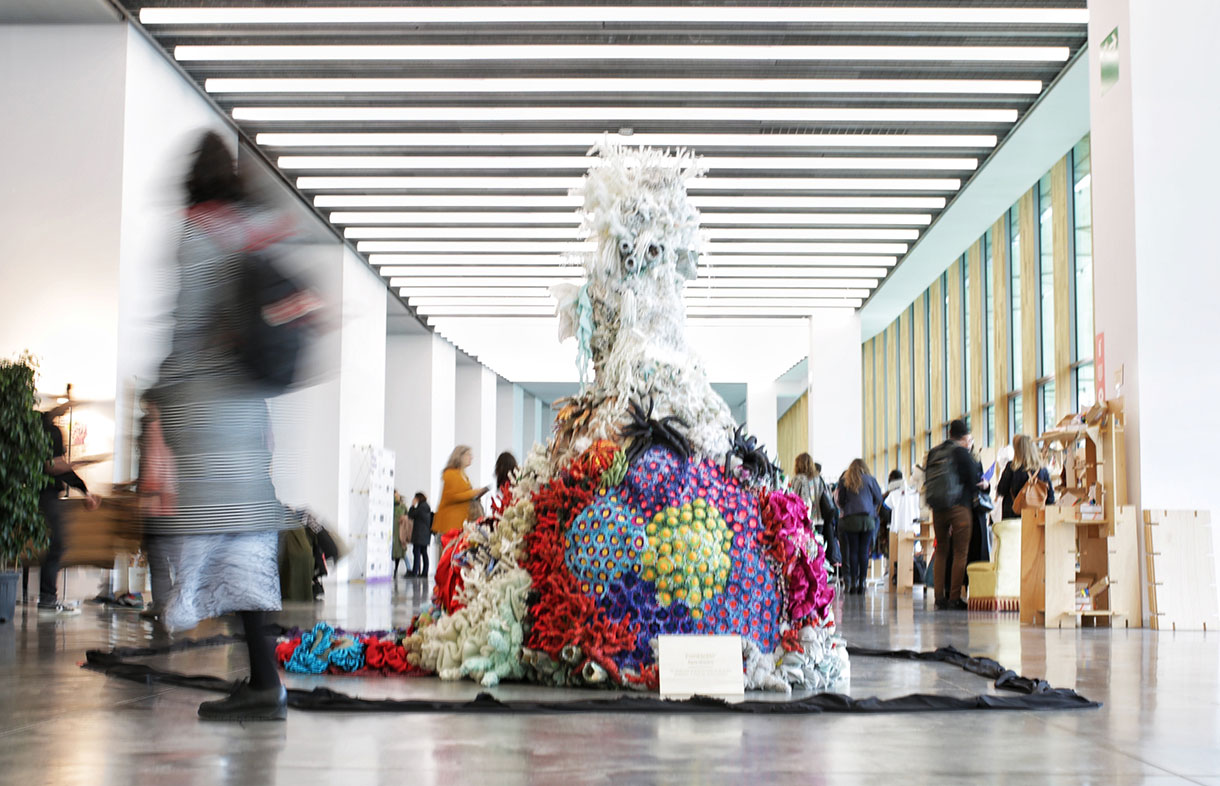
In addition the meeting will feature four round table fora: the first, to discuss the capacity of fabric recycling and reflect on innovative and sustainable materials for the future; the second, to discuss new business models; the third, on the consumer mindset ; the last one, on sustainability in its entirety, incorporated into retail of the future. Prominent spokespeople from the sector will participate, such as, among others, Manuel Martos , Group Managing Director of Nextil, François-Ghislain Morillion , founder and CEO of Veja, Elena Foguet, Business Director Spain of Value Retail, Mariona Sanz , director of Girbau LAB in Girbau, Carolina Álvarez-Osorio , director of marketing and communication of Ecoalf, Carlos Lahoz , Global Brand Innovation Strategist for Textile Printing Business, of HP Inc ., Franco Ghiringhelli , general director, of Ezio Ghiringhelli Spa, Pau Solanilla , president, of Reputation Republik and Tamsin Lejeune , CEO of Common Objective. Iria Pérez, editor in chief of Modaes.es will be a moderator, as will David Allo, director of sustainability at Texfor. This summit for professionals is a paid event and tickets are on sale on the official website.
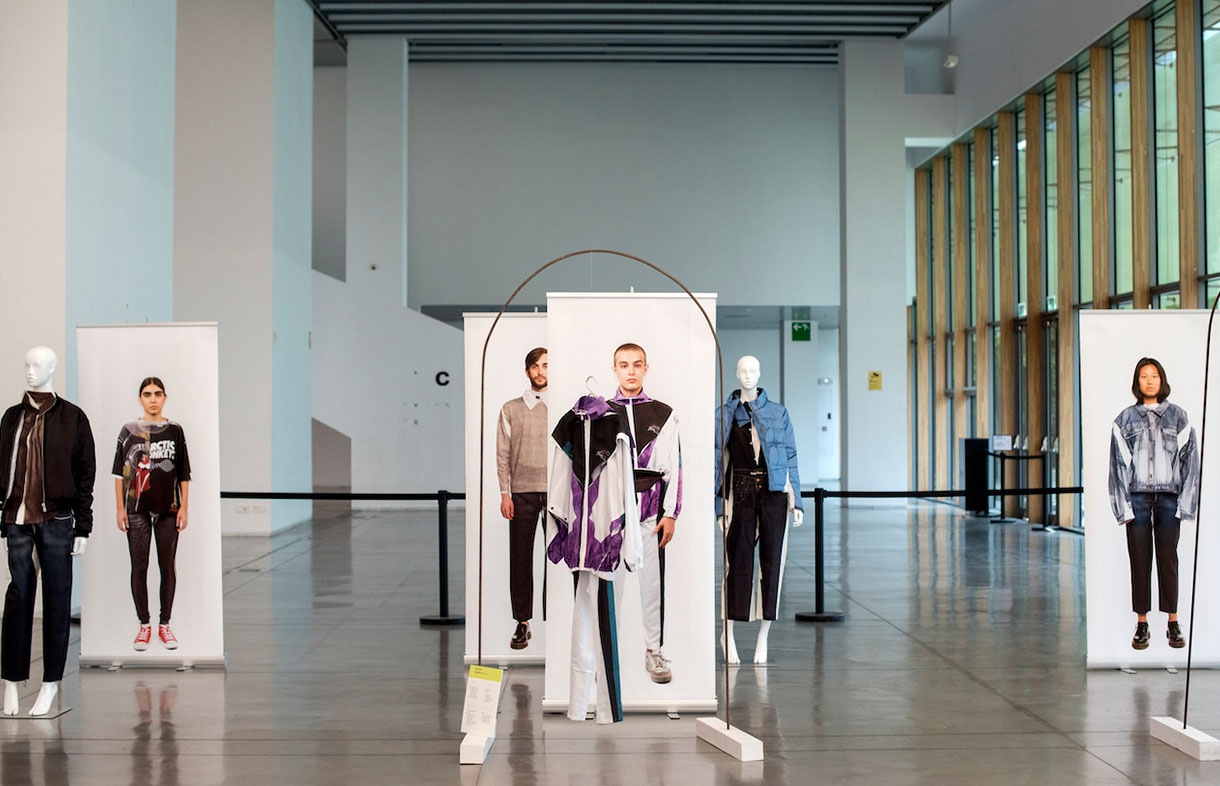
An area open to the public
Additionally Re-Barcelona will feature an area open to the public that during the two days of the event will be the scene of presentations, round tables, activities, workshops and screenings of fashion films . The Open Space, entitled ‘ Conscious Space Beyond’, will include an exhibition area with stands of entrepreneurs, companies and entities related to sustainable fashion.
Among the exhibitors are the entities resident in Disseny Hub Barcelona: BCD Barcelona Design Centre, which will promote “Hula Hoop: the experience in circular design” to raise environmental awareness via workshops; and MODA-FAD, which will celebrate the “MODA-FAD Sustainable Challenge”, a design marathon where 30 students will create new pieces from textile waste.
Attendees can also enjoy the show ‘Victor Papanek: the design policy of the Museu del Disseny’, the first major retrospective focused on one of the precursors of social activism and sustainability in design. ‘Reimagine Textile’ will also be exhibited, an entrepreneur programme in which TecnoCampus participates and will present start-ups with innovative projects also Reshape, which will show the winners of its annual competition on smart products and wearable technology, thanks to the support of the Italian Consulate General in Barcelona.
Finally, in the Open Space, Girbau will offer a masterclass on “wet cleaning” or water washing system, the green alternative to perchlorethylene for dry cleaners. In this same area there will be presentations of several projects, and as part of the Re-Talks, round table discussions will be held. Finally, fashion films will also be screened , in collaboration with the British Council and the Italian Consulate General in Barcelona.
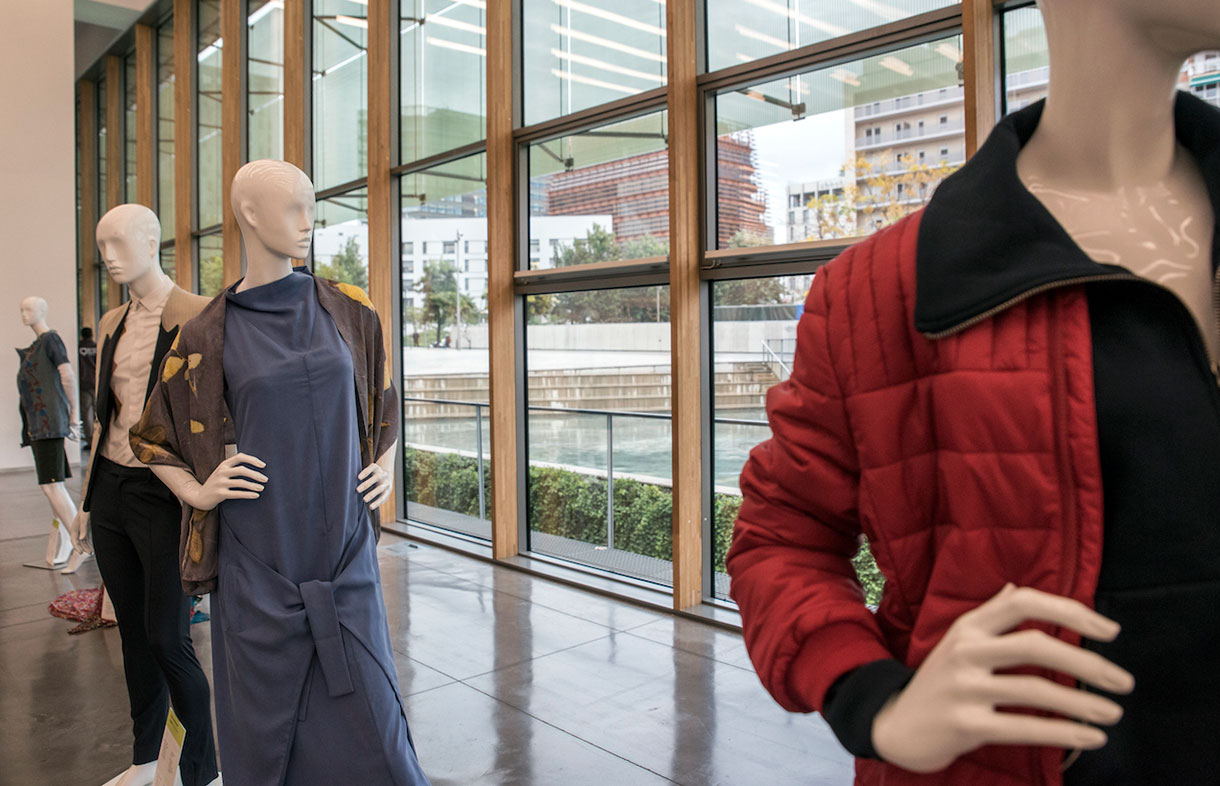
Miércoles 20 noviembre 2019
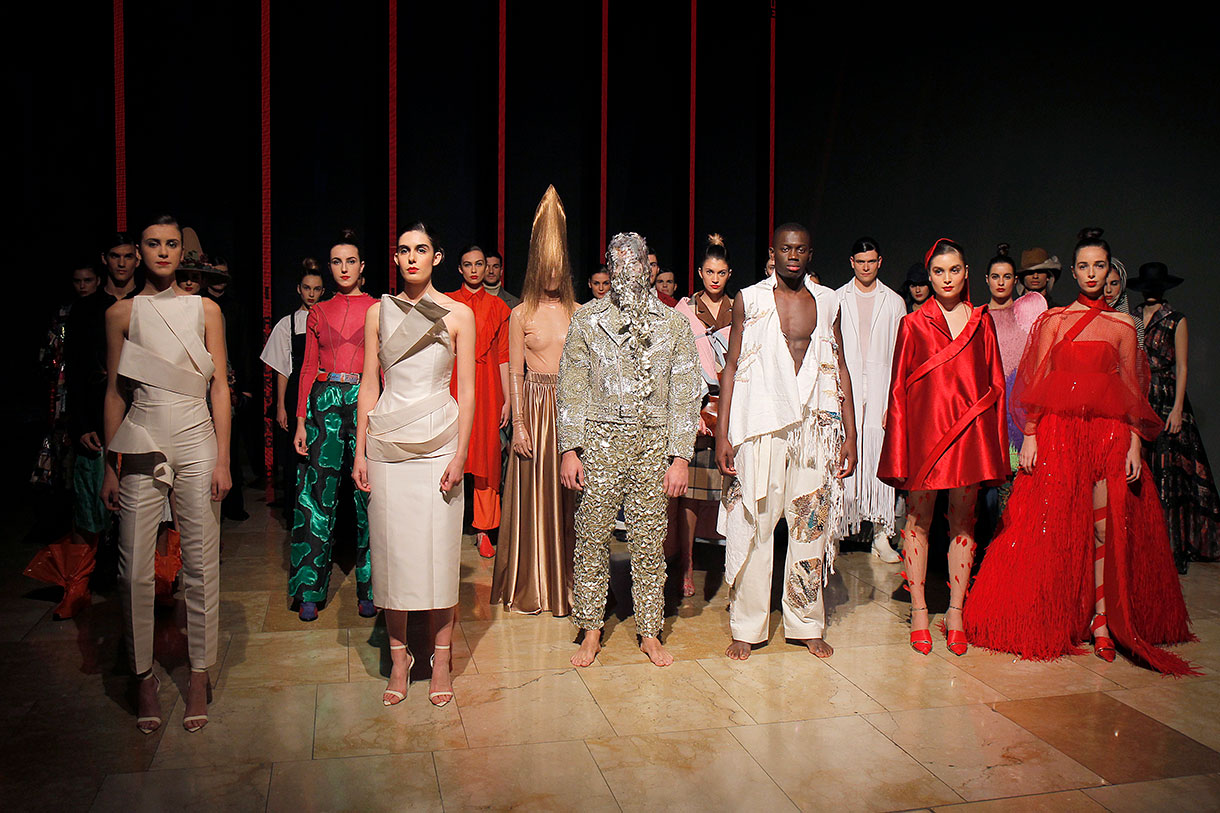
A tribute to design, creativity and emerging talent. That is exactly what was celebrated this week at the Guggenheim Museum Bilbao with the 25th anniversary of IED (Higher School of Design) in Spain. Among other activities the renowned fashion and design school wanted to record the event with an impressive fashion show in which national and international designers who have trained in the classrooms of IED Madrid and IED Barcelona participated, since the institution was founded in Madrid in 1994. Gratacós also participated in this exhibition of young designers collaborating through fabrics that took the form of lush garments on the catwalk. It is indeed part of our commitment as a company to support schools that help instruct future designers.
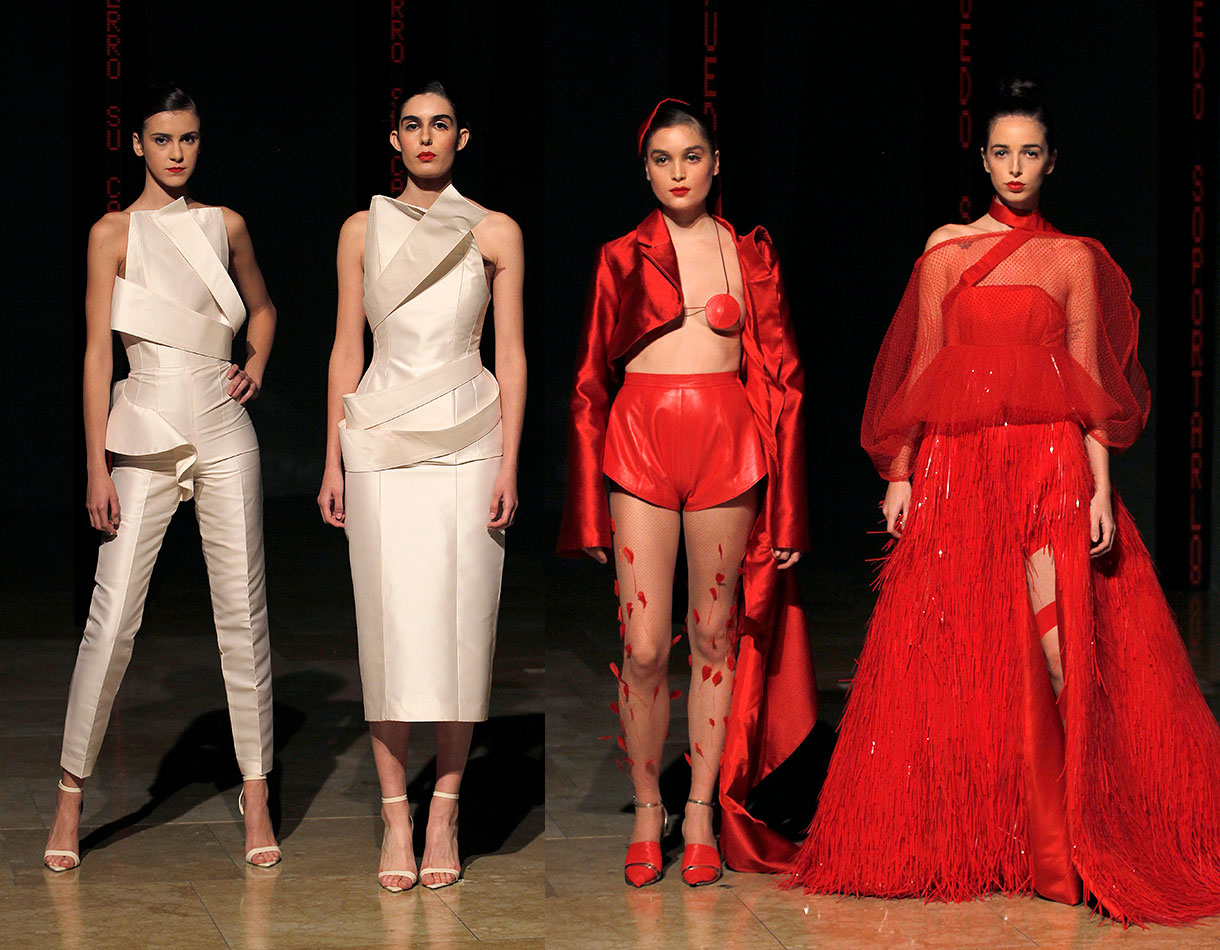
A parade of promising young designers of Spanish fashion
Under the name “25 designing the future”, the IED school grouped in the same parade 25 different collections signed by ex-alumni of IED Madrid and IED Barcelona who were responsible for capturing the past, present and future of the school. This event was part of the TopArte programme of the Guggenheim Museum Bilbao, on the occasion of the celebration of Bilbao Bizkaia Design Week. Recognized names that regularly participate on the main Spanish cat-walks such as Moisés Nieto, Carlota Barrera or Cristina Tamborero paraded together with other emerging brands in an eclectic exhibition of garments and visions that highlight the individuality of designers from different parts of Spain and also from countries such as Italy, Brazil, Romania, Israel, Mexico or the United Kingdom, among others. “Fashion is the most powerful means of expressing the identity of human beings. It is the connector and collector of dreams, urges, worries and personal inspirations …, therefore, we want to show a mosaic representative of IED talent of the last 25 years” declared Alessandro Manetti, CEO of the IED in Spain in justification of this powerful parade.
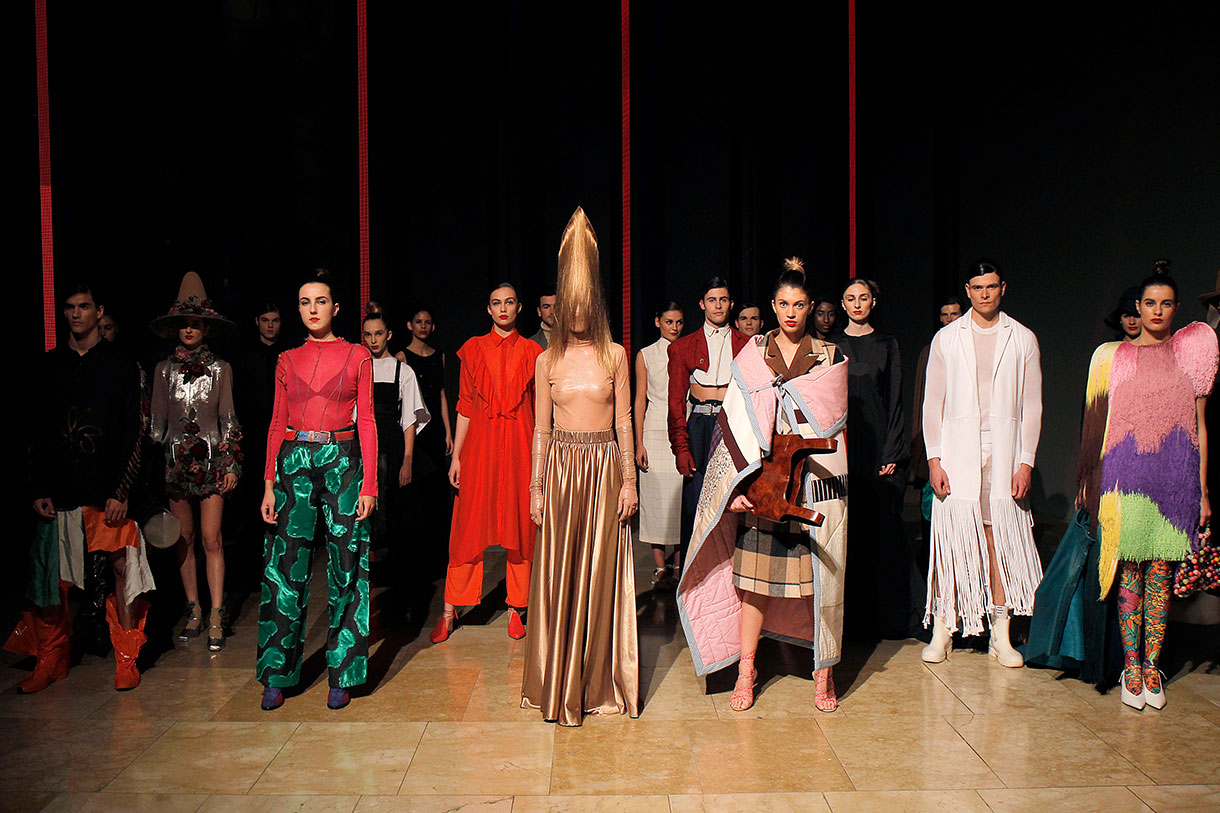
“The IED has left as inheritance an important generation of designers that promote the culture
and sensitivity of design worldwide” – Alessandro Manetti
The chosen looks of each participating designer were intended to define the future of fashion and reflect the challenges that the sector currently presents with creations designed for a sustainable look, conceptual and avant-garde designs, delicate handmade items produced locally or party dresses for large celebrations which follow haute couture techniques. “The IED has left as inheritance an important generation of designers that promote the culture and the sensitivity of the design worldwide”, added Manetti. In addition, for the occasion a former student of IED Madrid, one from IED Barcelona and another from IED Milan each created two looks for the event in honour of the 60th anniversary of the construction of the Guggenheim Museum in New York, designed by the architect Frank Lloyd Wright . The curved spiral shapes, the delicacy of the pieces of art exhibited in it and the opulence of the building’s architecture have inspired the designs, some of which have been manufactured with our fabrics that we offered for this celebratory event.
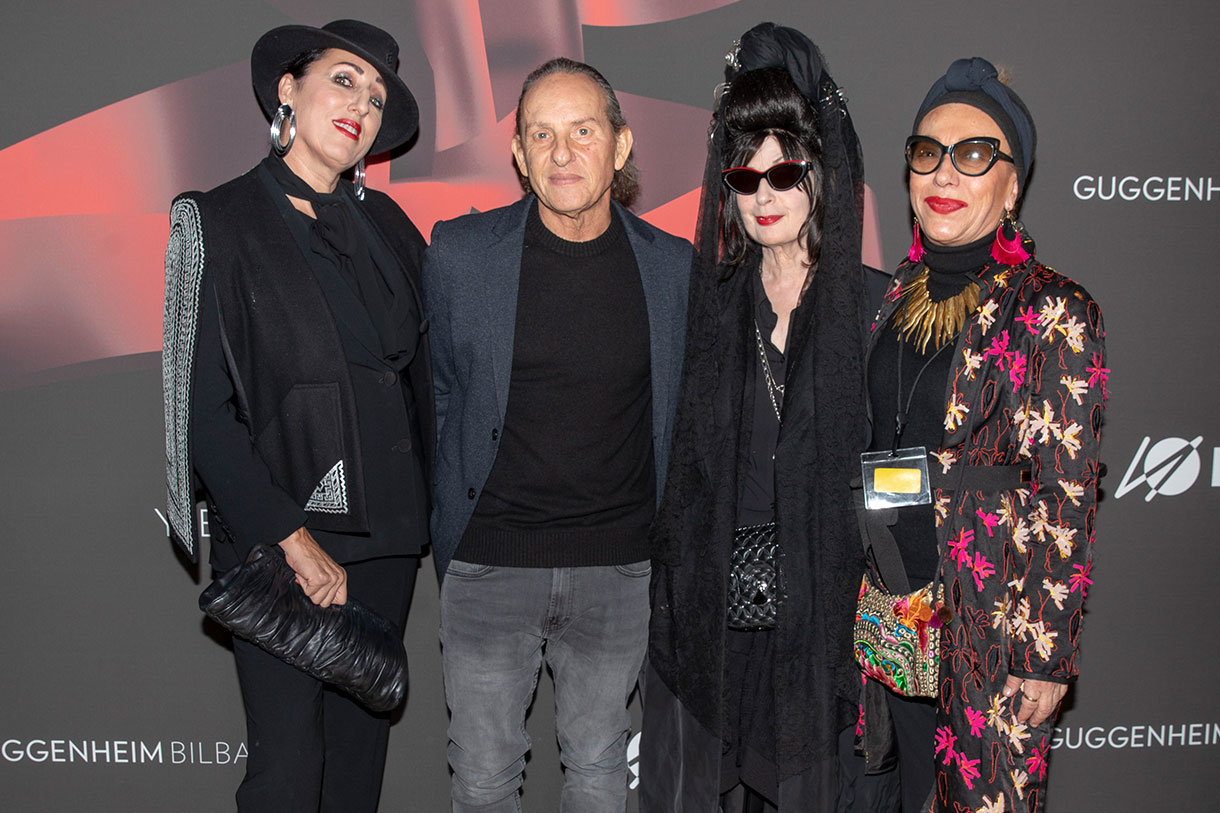
An event full of familiar faces
This parade commemorating the 25 years of IED also counted on the support and assistance of important celebrities linked to the fashion world such as actress Rosy de Palma, the American international critic Diane Pernet, the Belgian fashion expert Francine Pairon or the designer Custo Dalmau, who accompanied Pilar Pasamontes, IED scientific director of Fashion and Julia Weems and Mosiés Nieto, directors of the fashion area of IED Barcelona and Madrid respectively. Among the casting of models was Palito Dominguín, sister of Bimba Bosé and daughter of Lucía Dominguín, and the model Bet Callieri, all of whom participated in the closing parade.
It was a pleasure to collaborate in this unique event of celebration of the IED and at Gratacós we are eager to see everything planned for the future. Here’s to 25 more years!
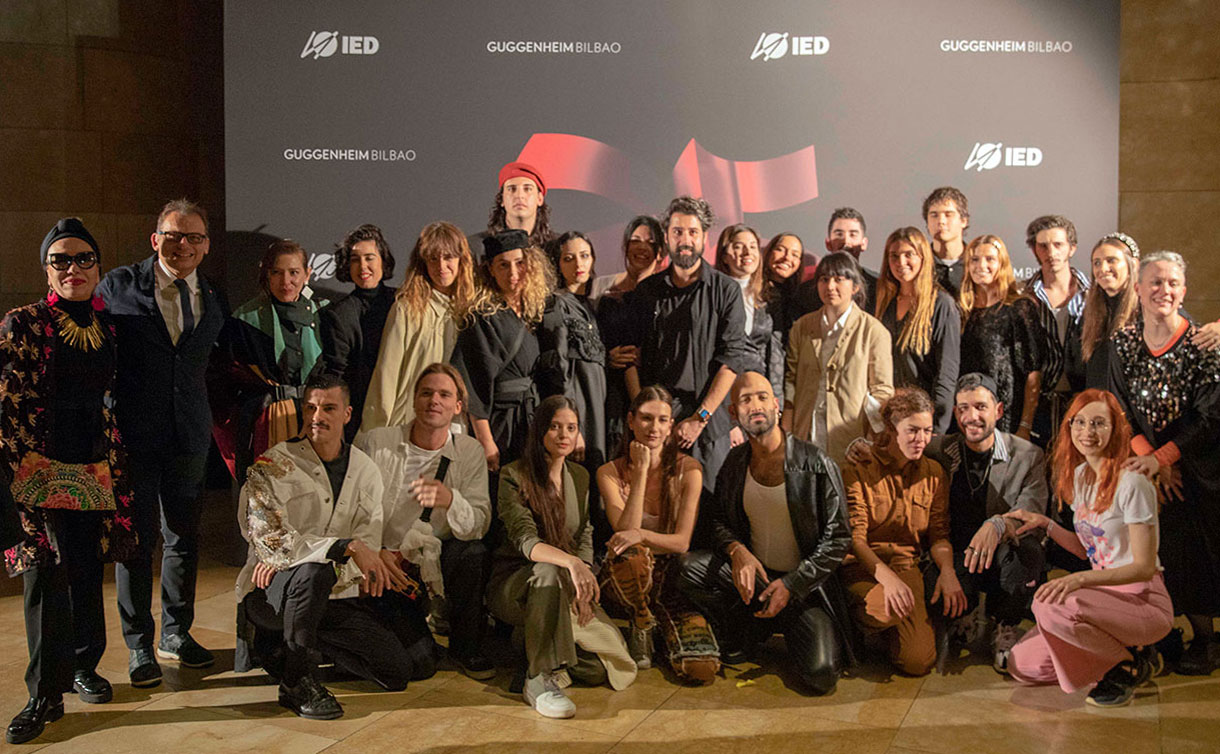
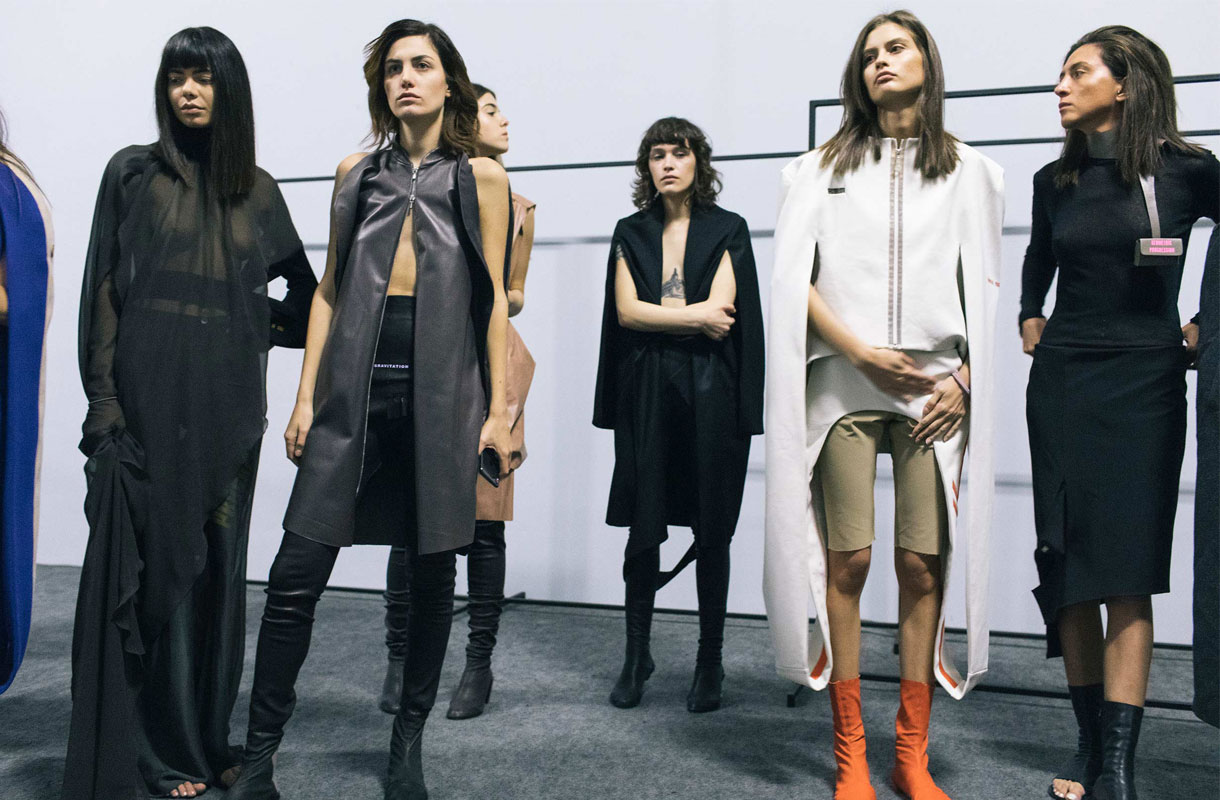
Something is cooking in Georgia that is catching the spotlight of the fashion industry. In the last decade this Caucasian country has been in full creative ferment, influencing various disciplines such as art, design and of course also fashion. Its capital, Tbilisi, is an authentic breeding ground for emerging designers who through their creativity are setting a hallmark for the industry, eager for novelties and ready to always hunt new talents. Among the most relevant creative designers at international level, for example, is Demna Gvasalia, who has revolutionized the landscape with her ironic and impractical designs for Vetements and her success has led her to become the creative director of Balenciaga. Another outstanding influencer is David Koma,who heads the company Thierry Mugler and his own eponymous brand based in London. Gvasalia and Koma represent the two most visible leaders of a new group of designers who are making waves in the Caucasian region.
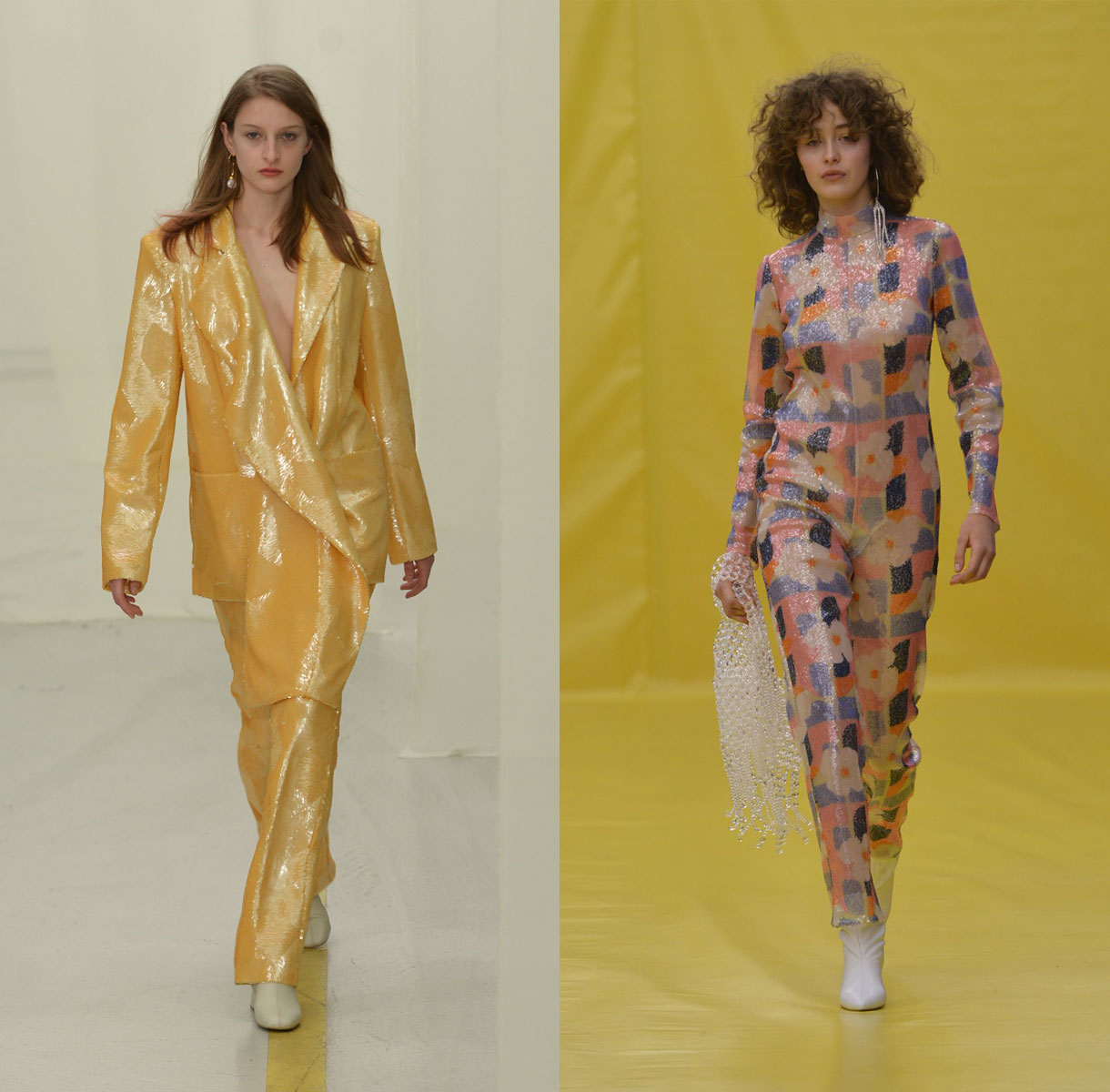
Obviously Tbilisi still cannot compete with Paris, London, Milan or New York, but little by little, the Tbilisi Mercedes-Benz Fashion Week is gaining prestige and relevance within the international scene. Among all the independent designers who have presented the latest collections on the cat-walk we are following closely the designs of Anouki Areshidze with her own brand Anouki , the creations of Gvantsa Janashia, who usually relies on our fabrics to elaborate the looks of the latest collections, the Dalood firm led by its founder Maka Kvitsiani, the Gegesha brand , the luxurious creations of Ani Datukishvili and the minimal style of Keti Chkhikvadze. These designers with almost unpronounceable names habitually rely on our fabrics to develop their wild creations.
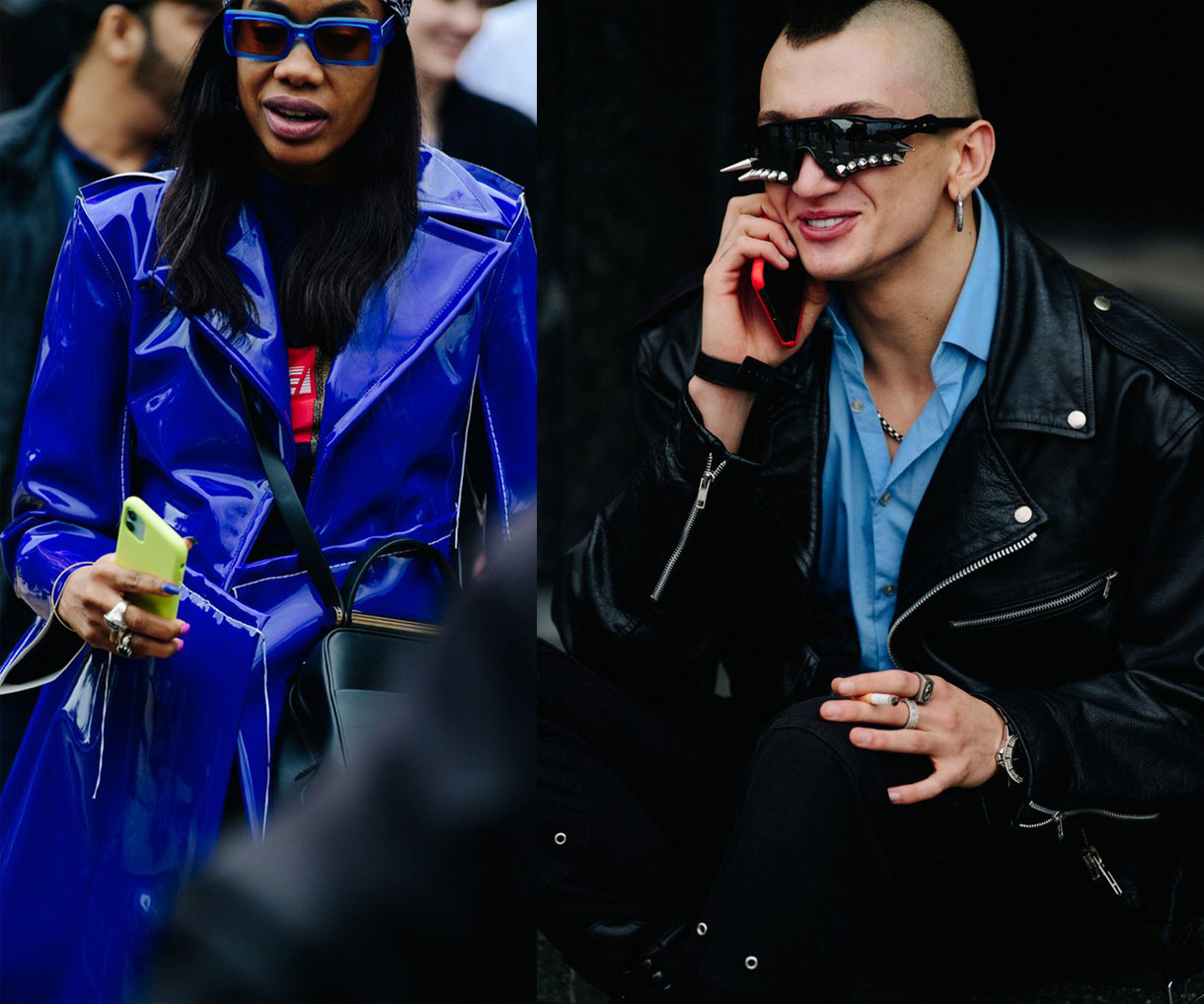
This cat-walk also generates fascination among the fashionistas who attend the parades dressed in a fresh and modern street style style and who fill dozens of photo galleries. Fashion magazines are in fact increasingly becoming aware of this effervescence that is appreciated and spread among the people at street level who dictate trends. That is why it is increasingly common to see international media photographers capturing every detail of the outfits of Georgian it-girls and it-boys.
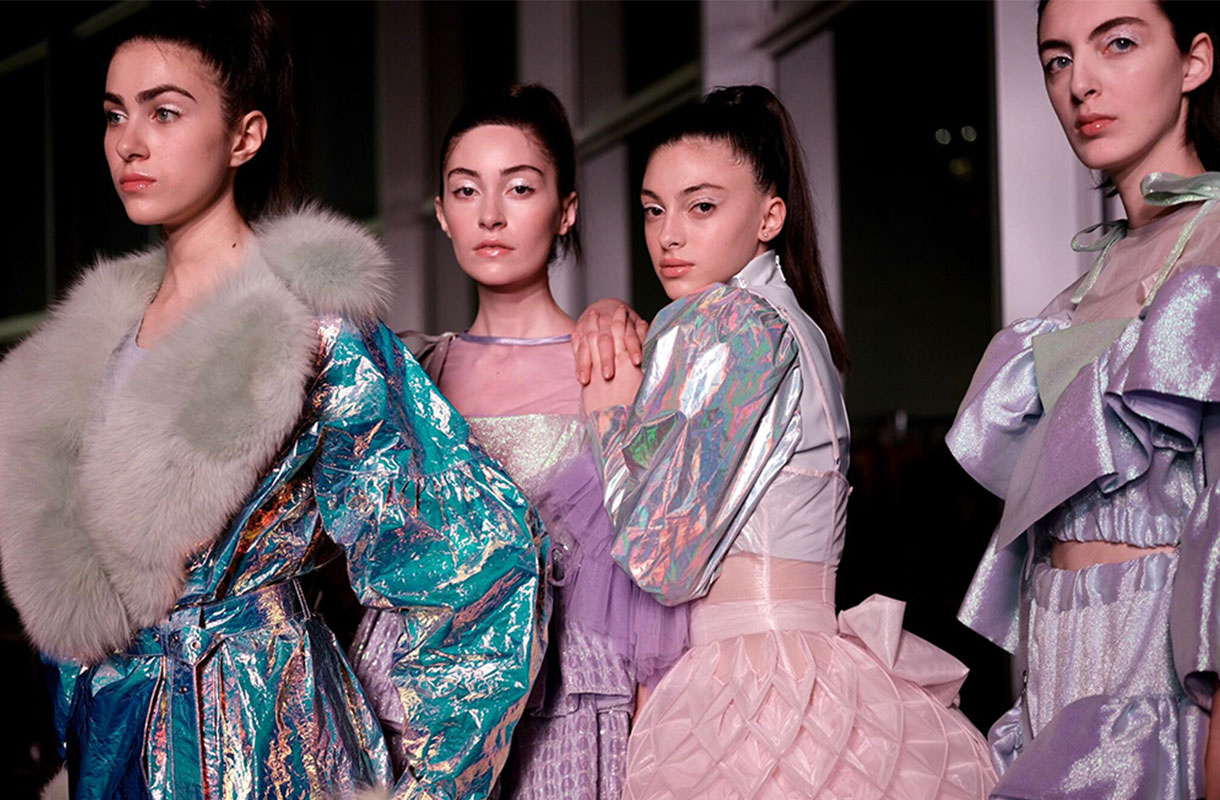
Dominnico shines at the Mercedes-Benz Fashion Week Tbilisi
One person we cannot ignore is Dominnico and his staging on the Georgian catwalk in early November, which has been the first international experience of the Alicante designer in the world of fashion. It should be remembered that Domingo Rodríguez won the Mercedes-Benz Fashion Talent award during last July’s edition of the Madrid catwalk. This award brings together young talents and promises them a tempting reward: the cat-walk at the Tblisi Mercedes-Benz Fashion Week.

Thus Dominnico has had another opportunity to present his winning collection ‘Harajuku Kids’, exhibited during the month of September in our creative area in Barcelona. The SS20 collection is inspired by the movement that is trending on the Internet and the colours chosen by artists such as Andy Dixon or Antoni Tudisco with mannequins that resemble Bratz dolls. Their characteristic designs go for tornasolado plastic, brilli-brilli fabrics, magnificent creations in fur and billowing dresses which also captivated the Georgian public.
We will be following closely the work of Domingo Rodríguez and from Gratacós we thank you for your support and trust. Thanks Dominnico!
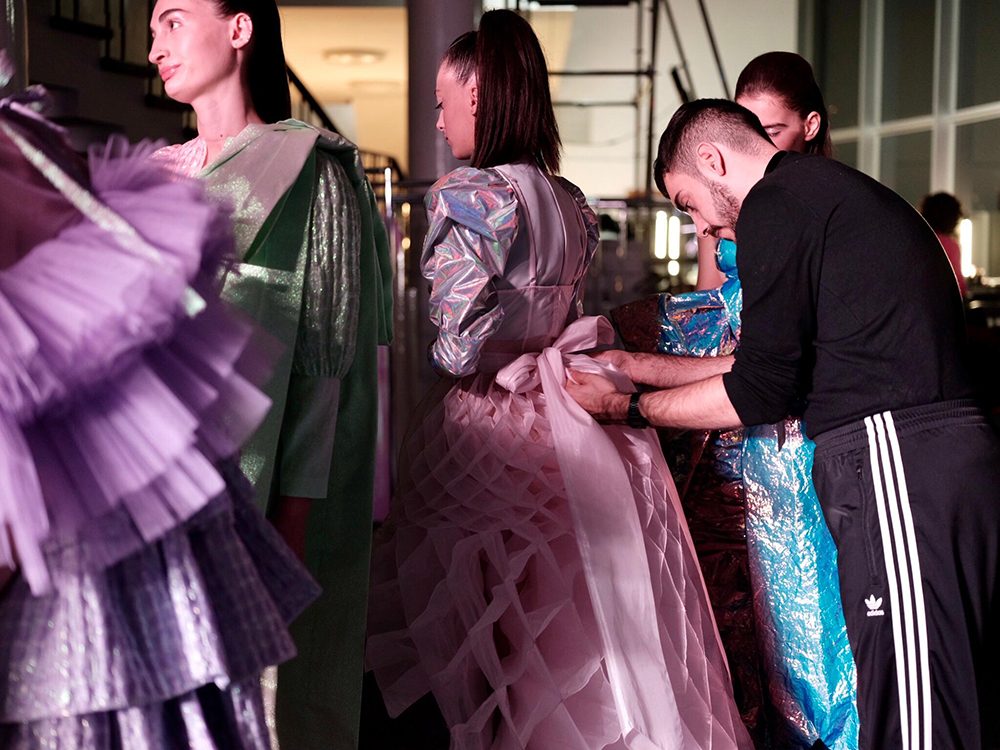
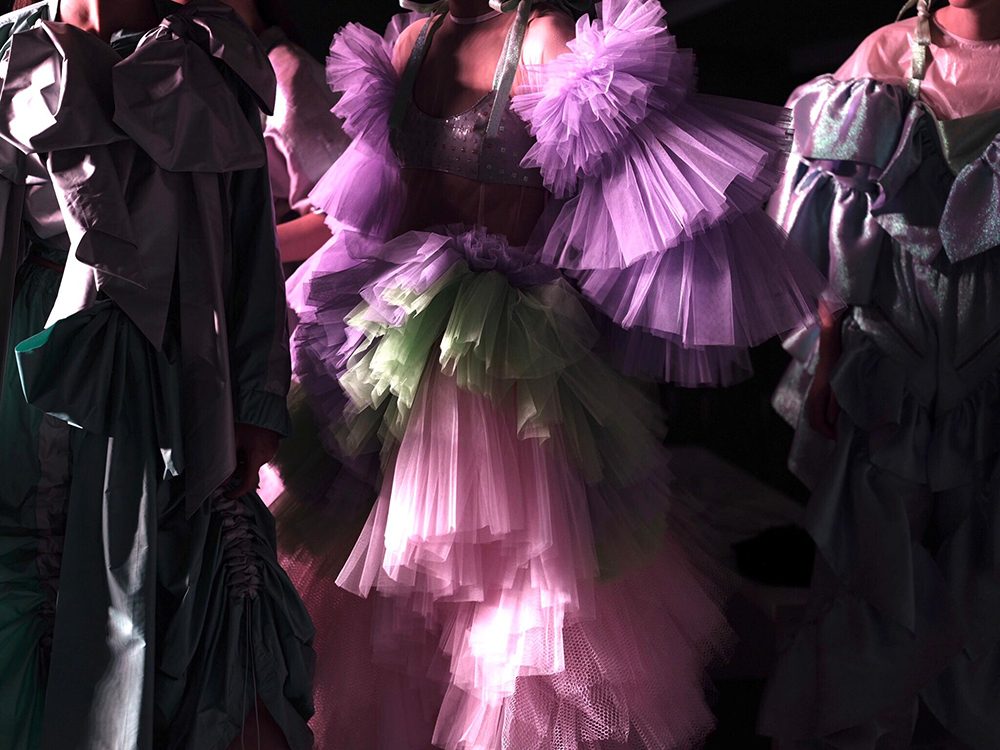
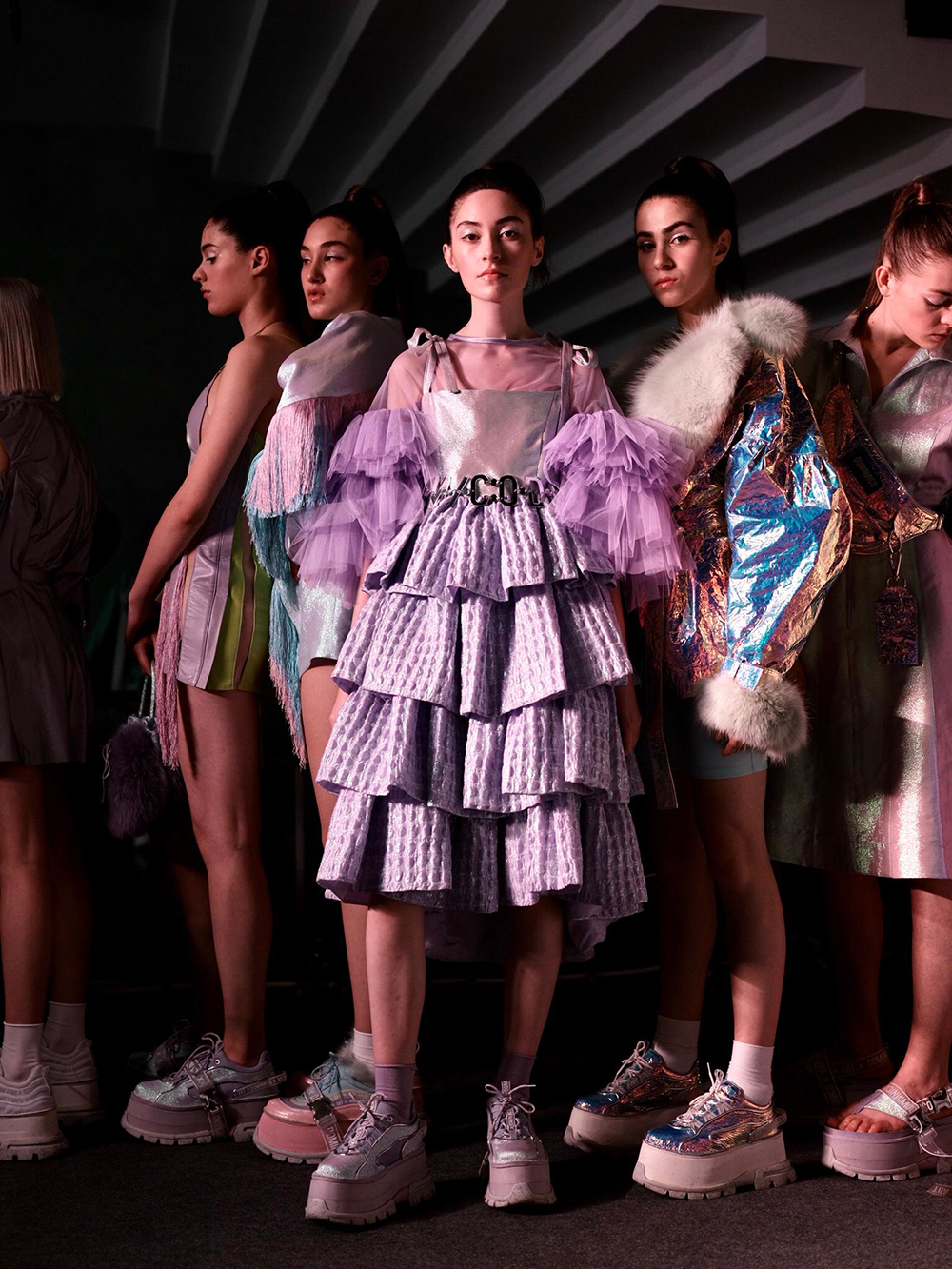
Miércoles 06 noviembre 2019

London, Berlin, Budapest, Barcelona … in the main European cities there are commercial initiatives that revolutionize – and revalue in turn – industrial areas in a situation of abandonment and that, together with other economic and social aid, become residential areas full of life that have a wide cultural and leisure offer, always maintaining the manufacturing aesthetic that characterizes them, marginal areas that become the cool neighbourhoods of the moment.
In Igualada and on a more modest scale, the Rec.0 initiative celebrates 10 years of action based on creativity, the industrial district of Rec, an authentic quarter which more than a hundred old tanneries inhabit – the majority in disuse – that testify to the textile legacy and the importance within the leather industry which this small quarter of Barcelona has had from the 18th century until today. This year specifically the organization of Rec.0 has opted for revealing the intricacies of the neighbourhood’s industrial heritage via various activities such as the uncovering of new tanneries converted into cultural equipment, workshops about the artisanal creative processing of leather and guided visits to various areas of the neighbourhood that are still in operation, among others. This set of activities not only seeks to reveal what was in this unique neighbourhood, but also bear witness to the ways in which the Rec has been transformed in the last ten years.
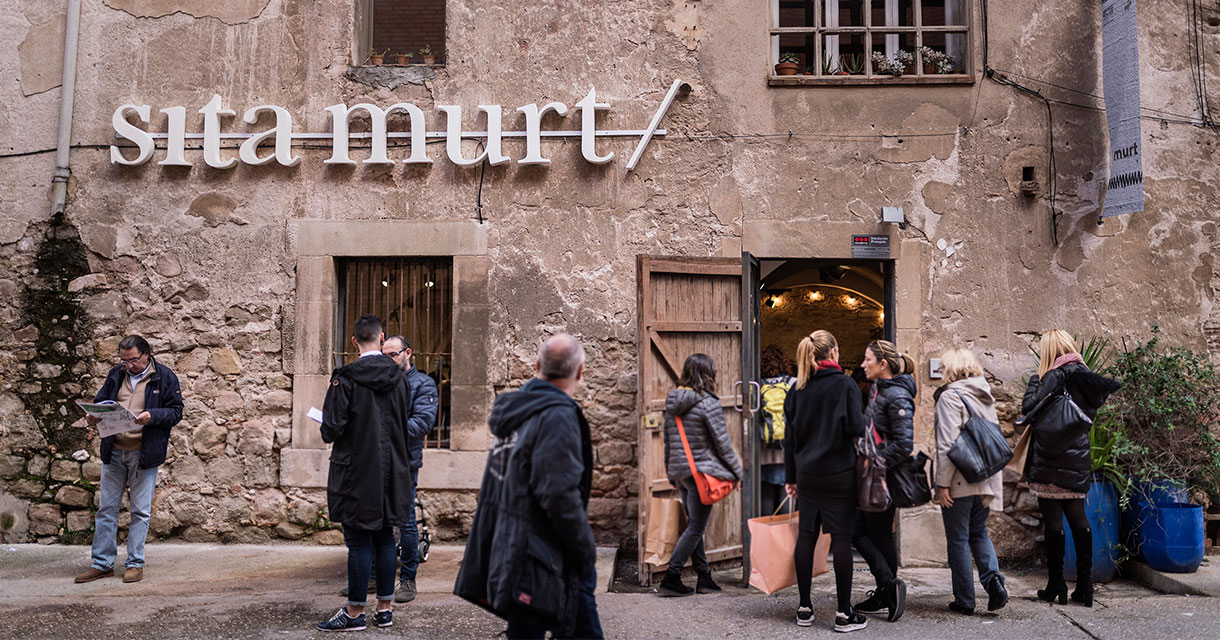
Apart from the wish to preserve and publicise heritage, Rec.0 remains the same as always: a biannual commercial festival in a one-off format that for four days revolutionizes this area of the city via pop up stores of international fashion brands and local firms, coexisting in specifically different industrial areas that are recovered and adorned for the occasion so that the participating brands can sell at special rates. With that same formula, repeated edition after edition, in the last decade it has established itself as an indispensable – and alternative –place to visit within the commercial and cultural ambit of Catalonia.

Author design guides Rec Experimental Stores
In this edition the urban tour of the Rec neighbourhood includes 60 temporary areas that will surprise the consumer and that house more than 80 brands of different formats and products for sale specifically of stocks in stores that only exist during the fashion festival. There are new products by Brownie, Vans, Pretty Ballerinas, Mascaró, or Eastpack, among others, that coexist with flagships such as Levi's, Adidas, Munich, Mango, Sita Murt, Indi & Cold, Nice Things, Ash …
What we find most interesting is that these large national and international firms are side by side with independent designer brands such as Miriam Ponsa, Txell Miras and Josep Abril which always share the same pop up store and have become the trident of Rec 0 design, to the extent that the festival is the reason why the three of them decided to join forces to boost their joint stores in Barcelona.

This year, Gorni Kramer or Who are also to be found in the designer area. Precisely in order to give more space to small-scale firms, the Rec organization has opened a new courtyard where a new brand will be installed every day. This allows it to make its way into the world of fashion and offers commercial possibilities to emerging designers. They will exchange synergies with other Catalan fashion brands such as Brava Fabrics, Woodys Barcelona or Cuirum that will coexist with the Nordic fashion of Sessún or Samsoe Samsoe. Finally, in this area dedicated to the most local design there is also the pop up store 080 with the winner of the Rec.0 competition next to the Catalan catwalk. This year the winner was IAIOS, a brand of sweaters made with recycled thread.

Leisure and family culture
To liven up shopping and visits to the industrial environment of the industrial district, Rec.0 has organized a cultural and gastronomic agenda in parallel with free activities for all audiences and tastes. In music, concerts by local groups and singer-songwriters such as Joan Colomo, Red Pèrill and Beth are the stand-out items among other performances. Discussions and reflections on issues related to the festival are also promoted. This year in the Rec meeting area Genís Roca will give a talk about digital transformation. For movie lovers Zoom, the International Audiovisual Content Festival of Catalonia, will feature the screening of short films and innovations on the small and the big screen. Finally cuisine is also a highlight, with areas set out for local producers and KM0 cuisine where chefs will offer local food in the various pop-up bars that have been expressly built for the festival.
The new edition of Rec.0 begins today and will take place until November 9 in the Rec quarter of Igualada.

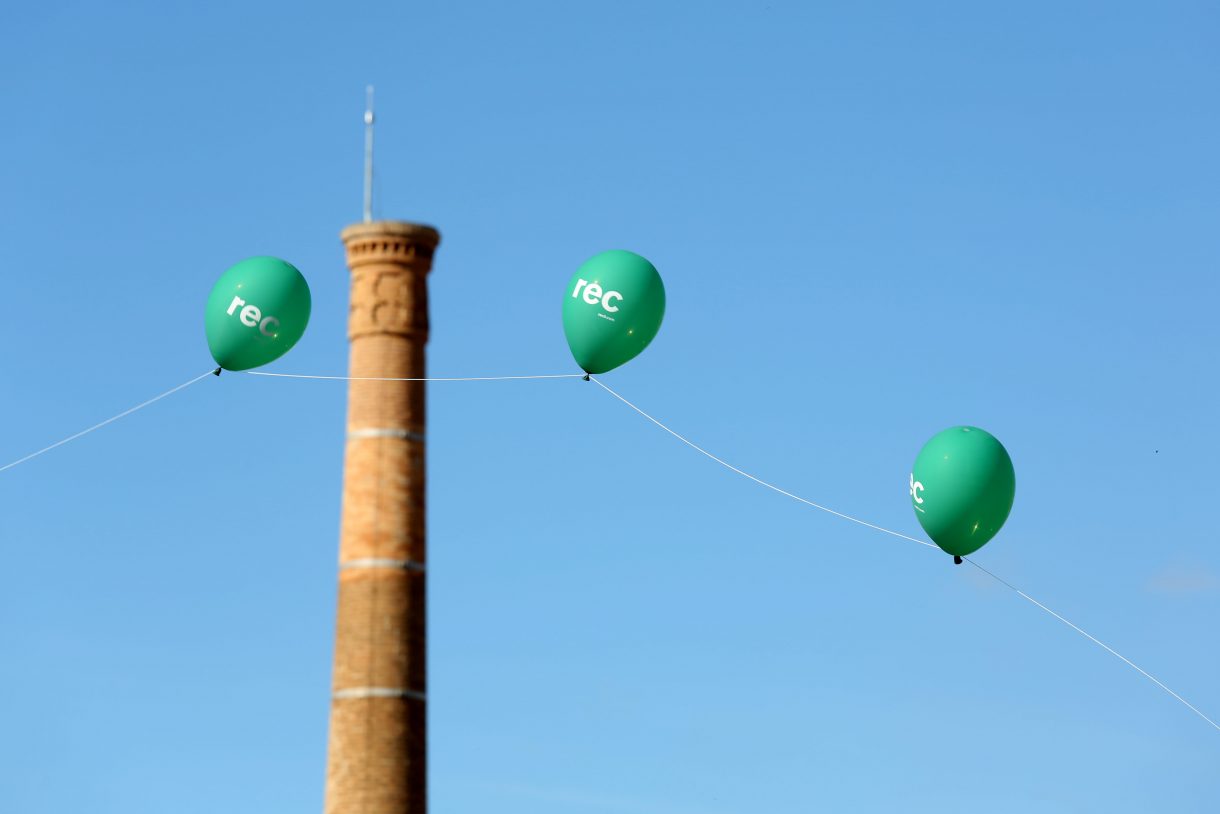
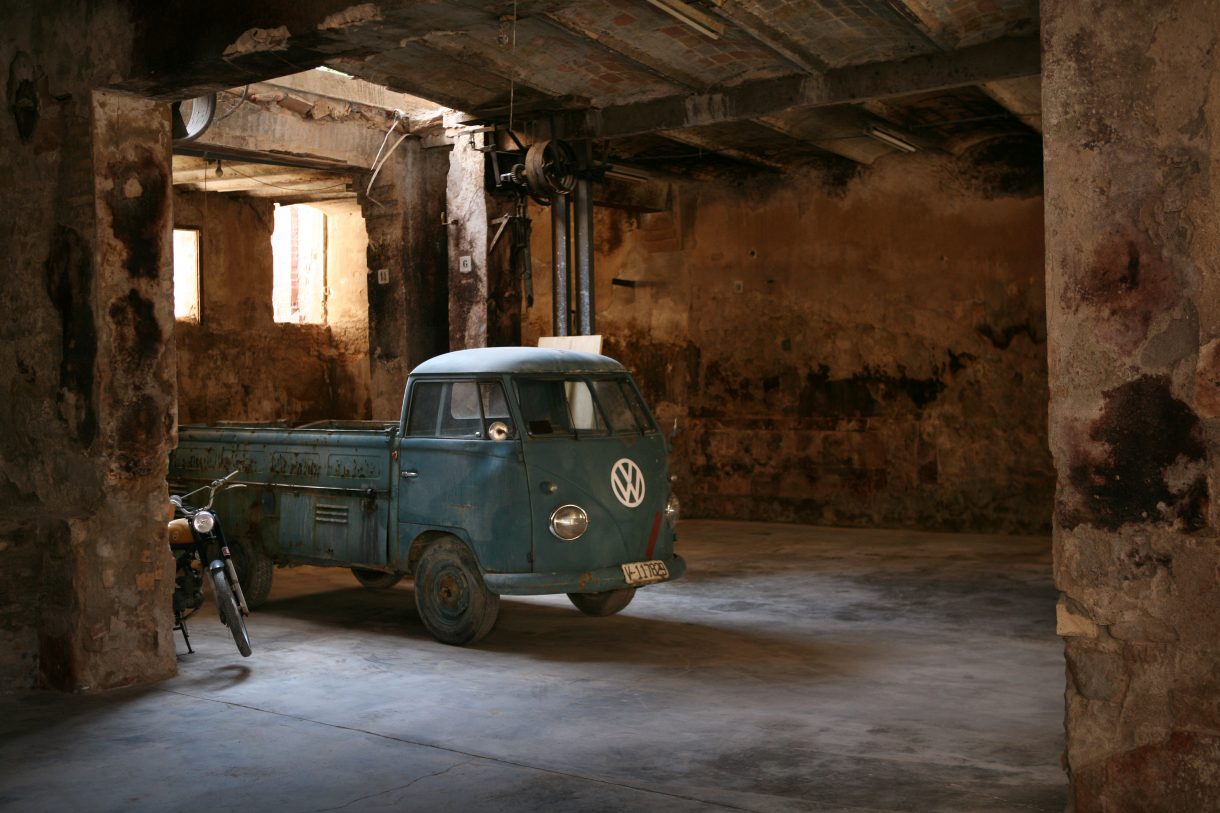
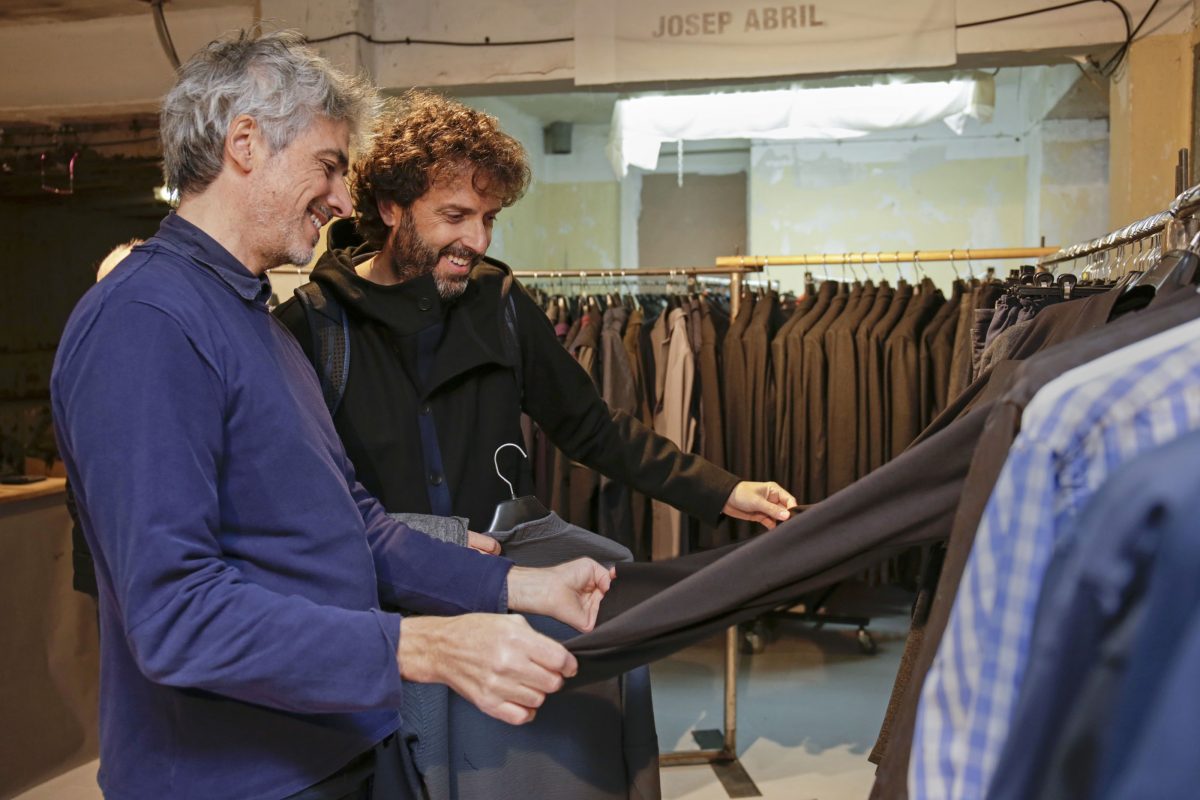
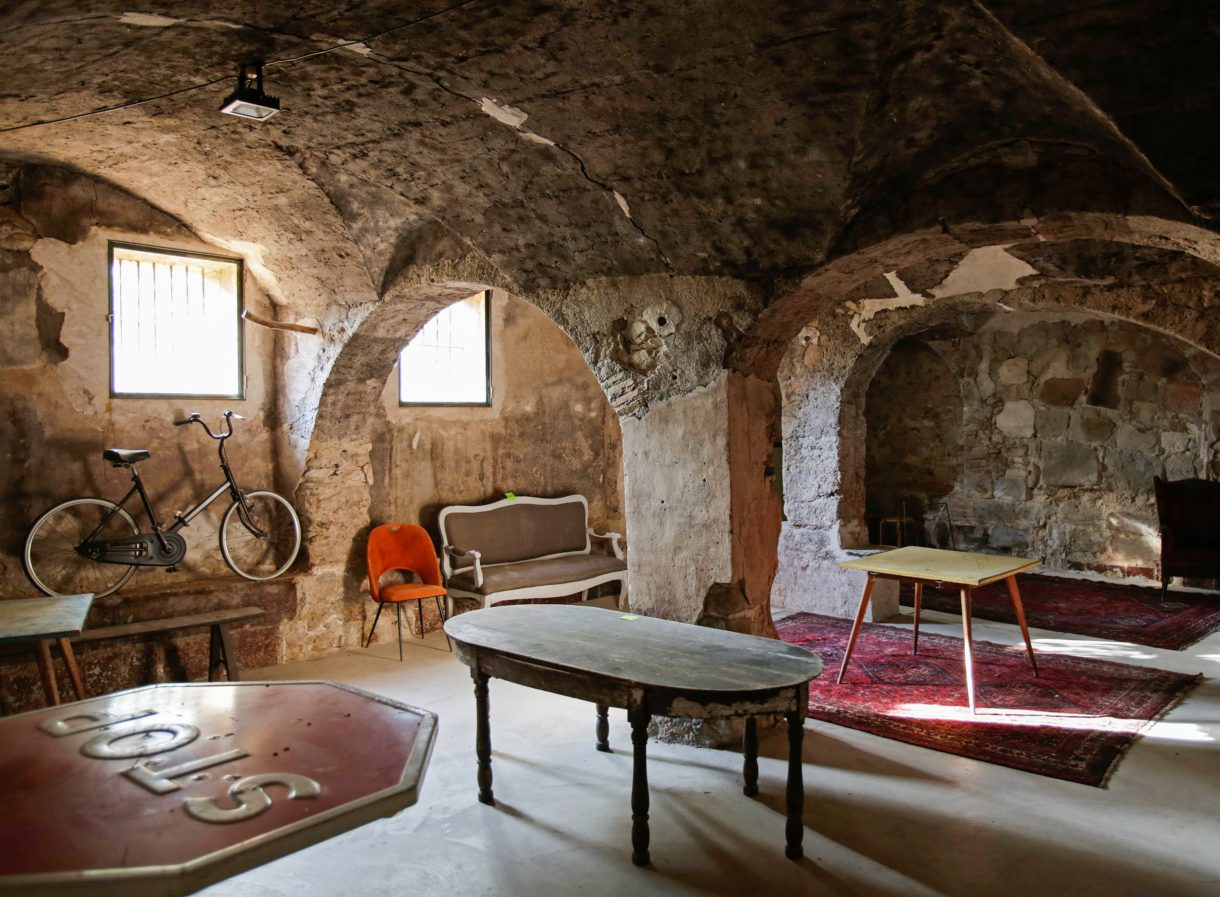
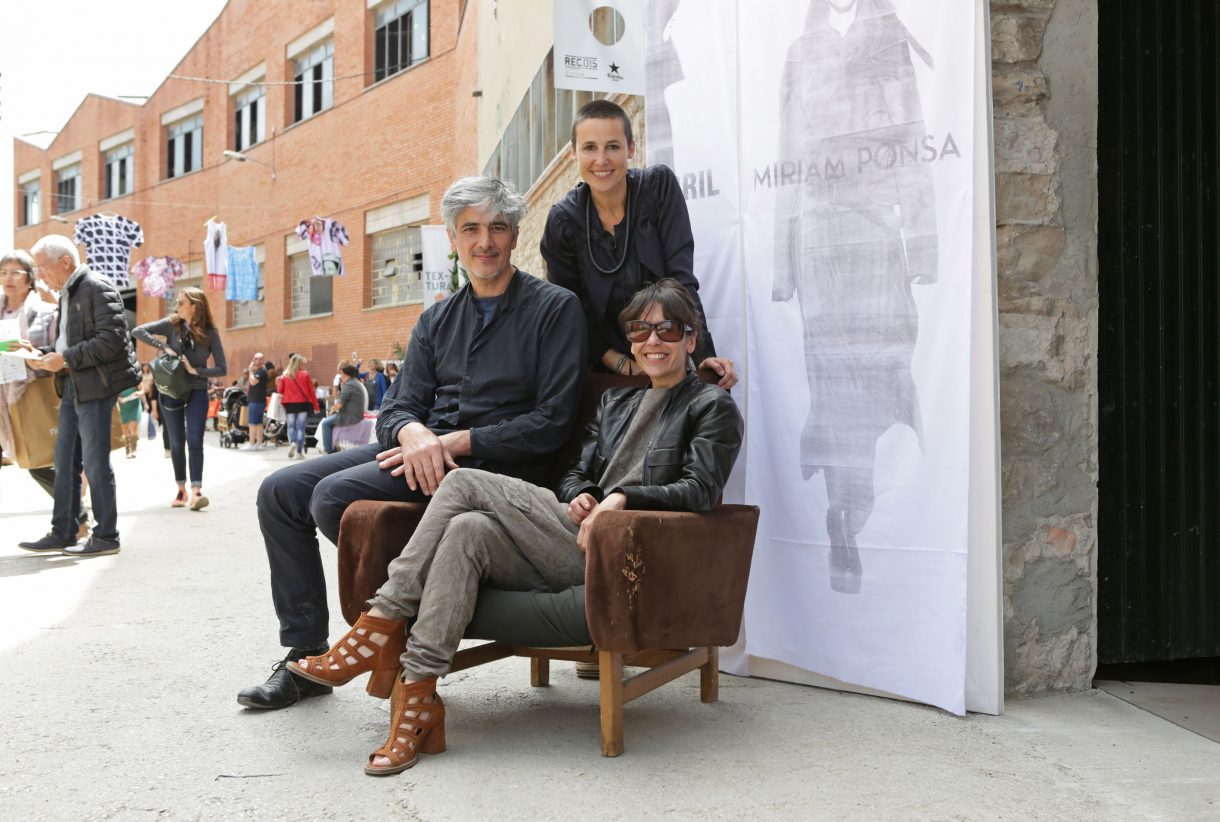
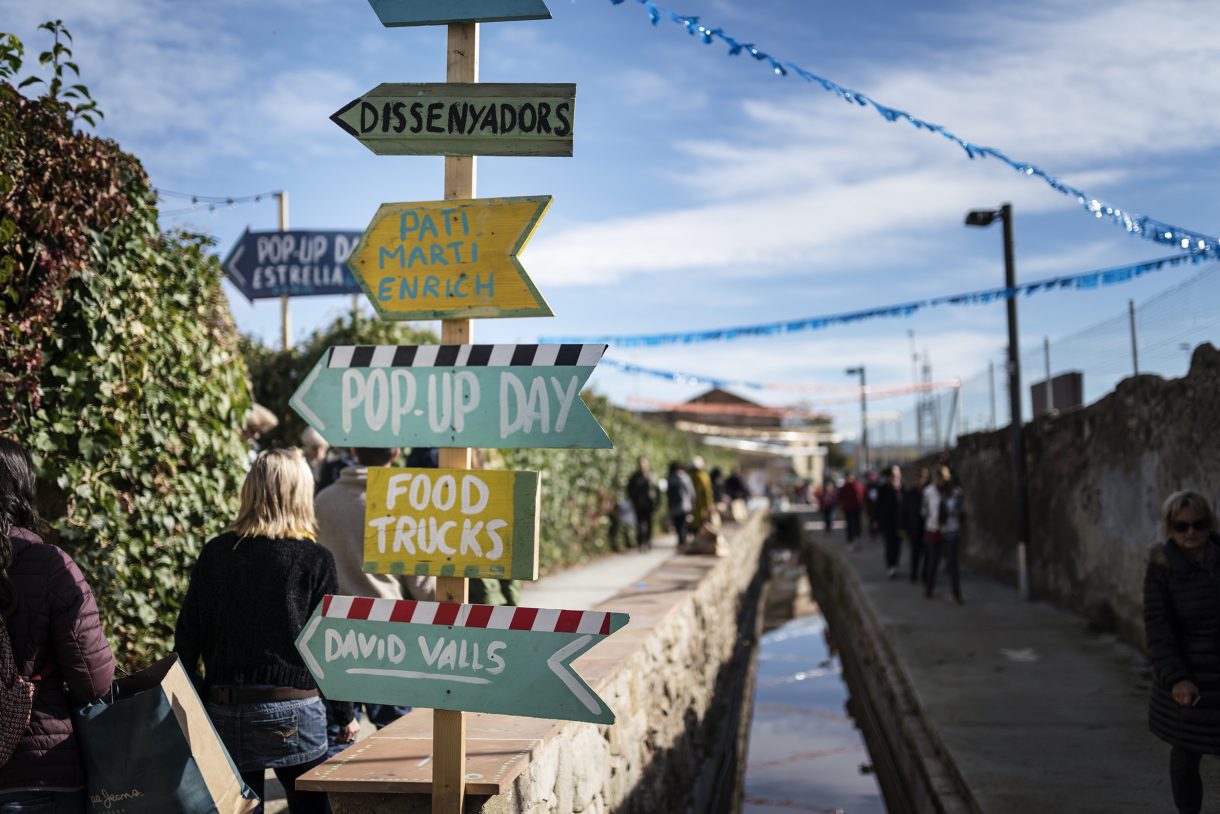
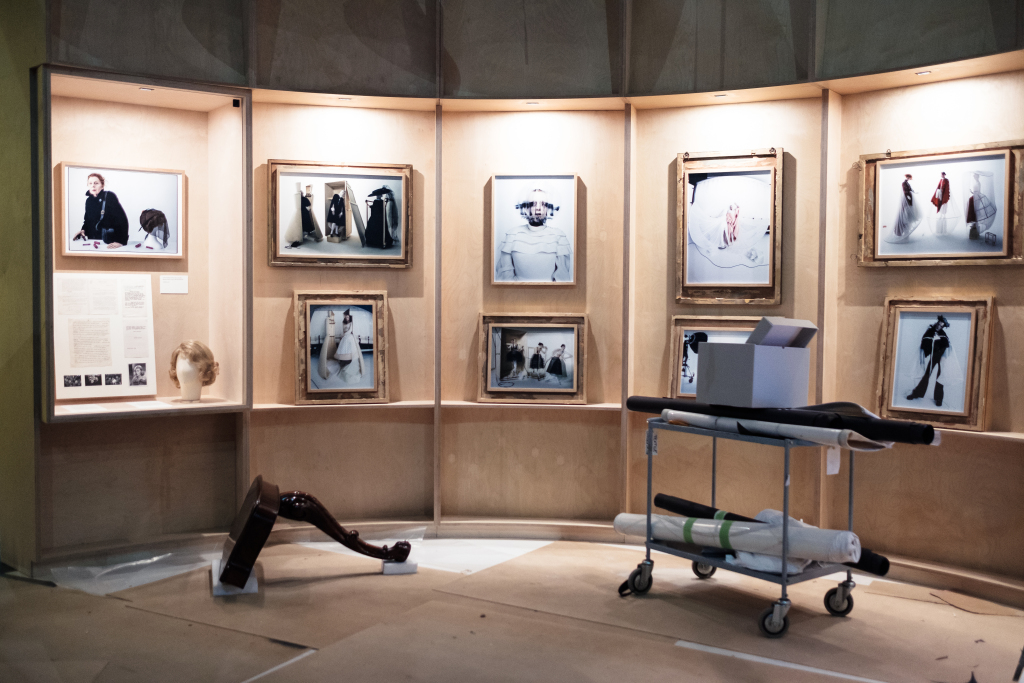
Fashion shows are appealing at any time of the year. They represent an opportunity to reflect on the sector from multiple points of view and covering topics as different as those we suggest below: the dialogue established by garments and their fabrics in migratory societies, the importance of sustainability, the history of footwear or a vision of fashion photography via one of the great contemporary artists.
On the eve of a new holiday, All Saints Day, we are offering you a new cultural route throughsome European exhibitions that we have not yet mentioned in this blog: interesting fashion shows in cultural capitals such as Antwerp, Florence, London and Paris, so that like us you can also find inspiration, knowledge and new ideas that enrich you in your respective jobs. Take note!

1. Antwerp: ‘Textile as Resistance’
The exhibition ‘Textile as Resistance’ at the MoMu (Antwerp Fashion Museum) asks interesting questions of the public: What messages and stories can the fabrics convey? What does an item of clothing say about the person wearing it? Can fabrics weave the past with the present? Can they be acts of resistance? The journalist Samira Bendadi and the photographer Mashi Mohadjerin reflect on the values that fabrics can provide (shelter, resistance, hope, happiness, tradition, beauty, spirituality and decolonisation) and try to answer all these questions through this challenging sample. It is a joint photographic project that began through stories from immigrants in the Belgian fashion capital and that soon spread to other parts of the world. Thus in ‘Textile as Resistance’ this creative couple invites you to discover clothes and textiles as an excuse to learn visual and written stories that transcend religious, cultural and national boundaries. Migration marks social, aesthetic and personal change.
Momu ‘Textile as Resistance’.Until February 16, 2020.
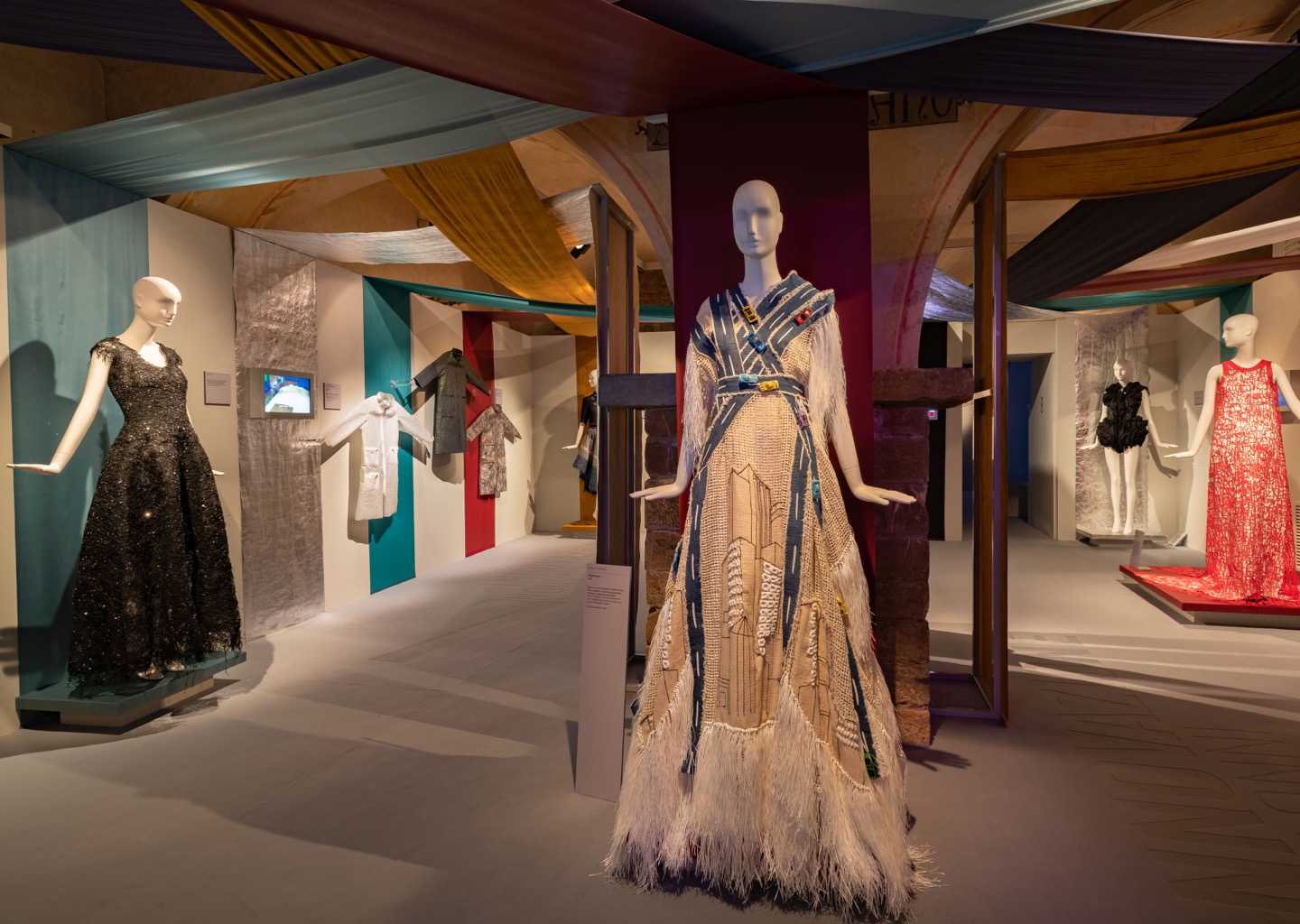
2.Florence: ‘Sustainable Thinking’
Sustainability is neither a fashion nor a trend: it is a real necessity. Aware of the move towards green issues that we are also promoting from Gratacós, we are especially interested in recommending this exhibition that houses the Salvatore Ferragamo Museum in Florence. ‘Sustainable Thinking’ invites reflection through art and fashion.
The term “sustainability” defines the human capacity to meet “the needs of the current generation without compromising the ability of future generations to meet their own needs.” It is a challenge that is not limited to production methods but also implies a greater focus on the environment in general. Balance must be restored, beginning with a more conscious and shared way of thinking that is capable of generating new development and coexistence strategies. For this reason, ‘Sustainable Thinking’ exposes the work of numerous artists who reflect on sustainability. Some projects focus on recovering the link with nature, the use of organic materials, the need for a creative reuse of materials, the connection between sustainability and technology … An opportunity for artists, fashion designers, textile and yarn manufacturers to offer a plurality of views to inspire new sustainable projects.
Salvatore Ferragamo Museum. ‘Sustainable Thinking’. Until March 8, 2020.
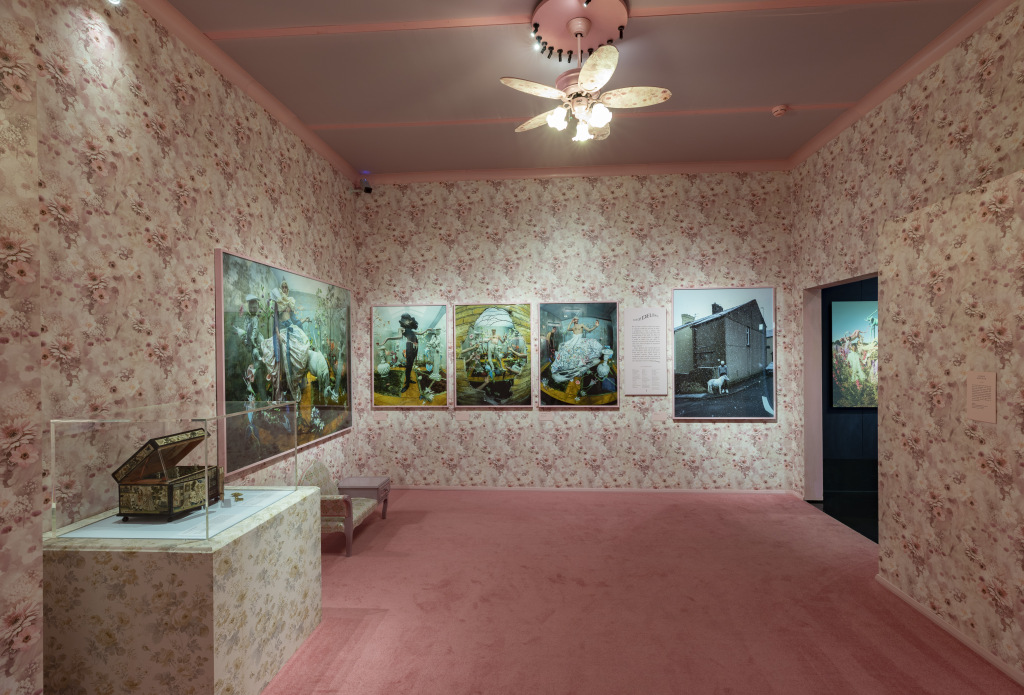
3. London. Tim walker
Coinciding with the exhibition dedicated to the talented designer Mary Quant, “the mother” of the iconic miniskirt, the Victoria & Albert Museum opens a new exhibition in parallel, this time dedicated to photography. As the name implies, ‘Tim Walker: Wonderful Things’ represents an immersive journey into the fantastic worlds created by this contemporary fashion photographer who is one of today’s most interesting profiles. Specifically the exhibition shows Tim Walker’s creative process via his pictures, films, photographic sets and special installations. The exhibition also includes an exclusive photo session made with some of the museum’s iconic garments
GOES. ‘Tim Walker: Wonderful Things’. Until March 8, 2020.
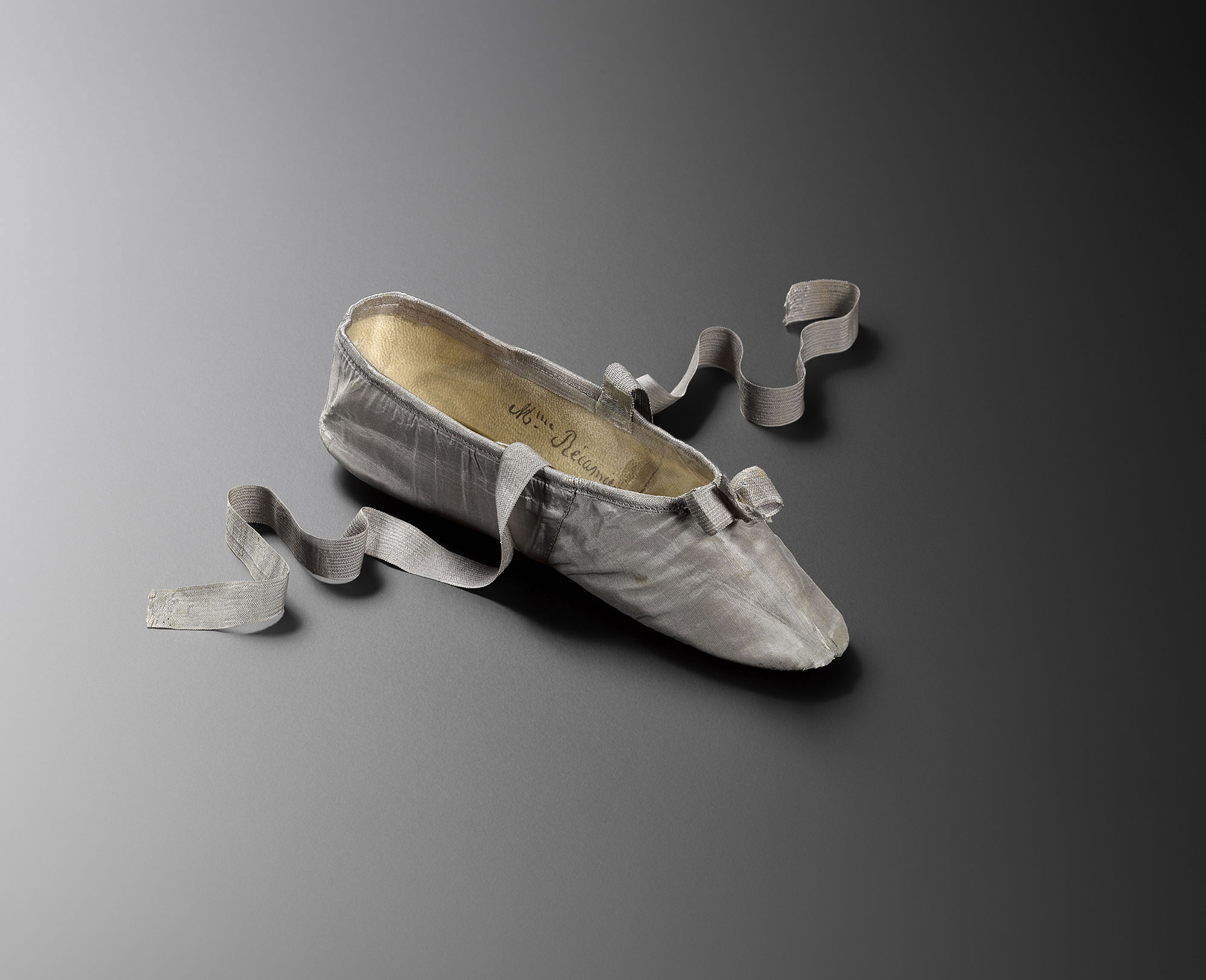
4. Paris. “Marché et Démarche: Historie de la Chaussure”
The Museum of Decorative Arts in Paris reschedules a new fashion exhibition to capture the attention of visitors. On this occasion the focus of attention is footwear and its history. From the complement itself to a reflection on the act of walking. The sample is based on a 1792 shoe attributed to Marie Antoinette which was only 21 centimeters long and then, little by little, it delves into into the history that lies behind each accessory displayed. The sample of 500 works includes shoes, paintings, photographs, works of art and films in order to reveal more about this garment which covers our feet.
Museum of Decorative Arts. “Marché et Démarche: Historie de la Chaussure”. Until February 23RD, 2020.
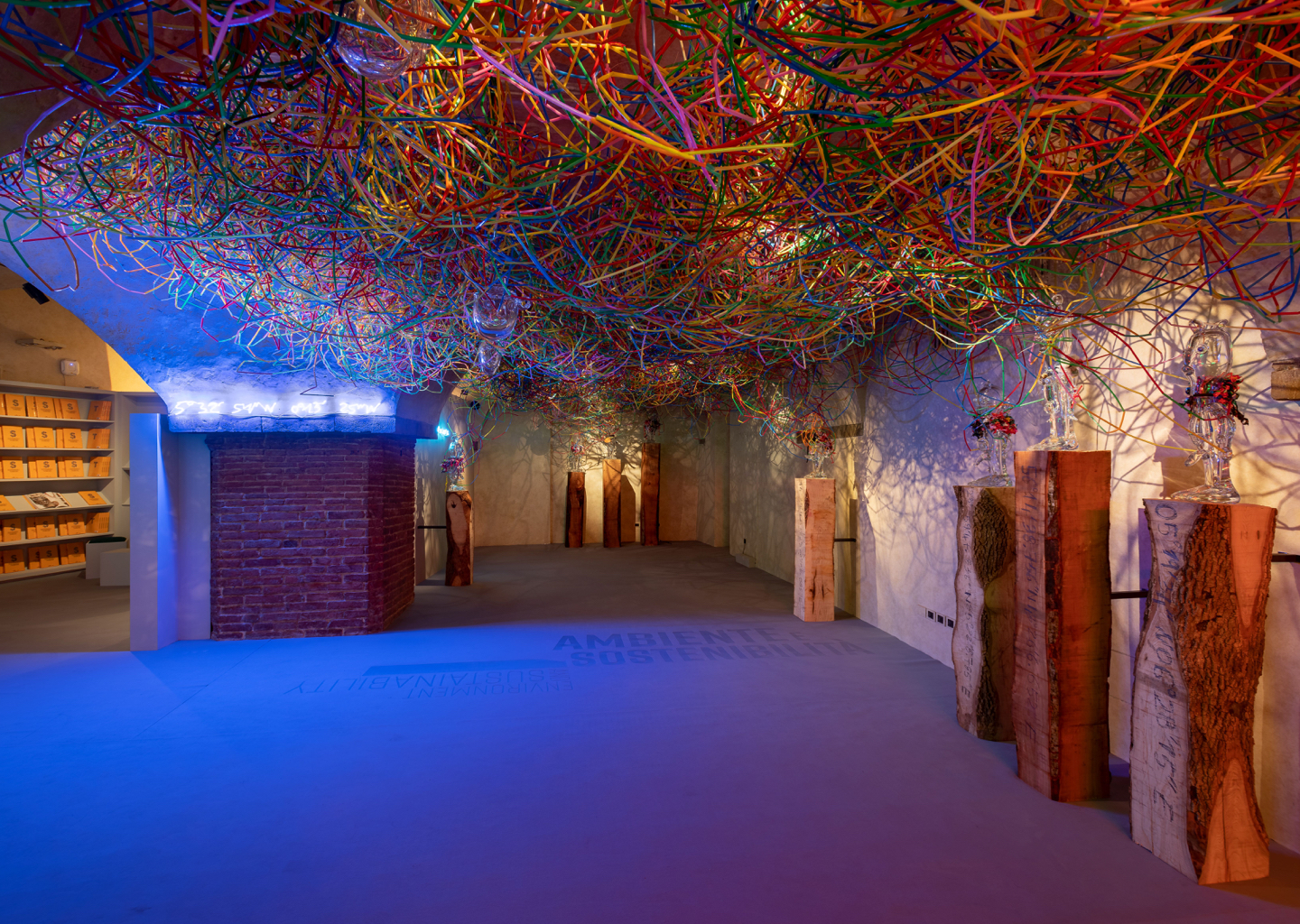
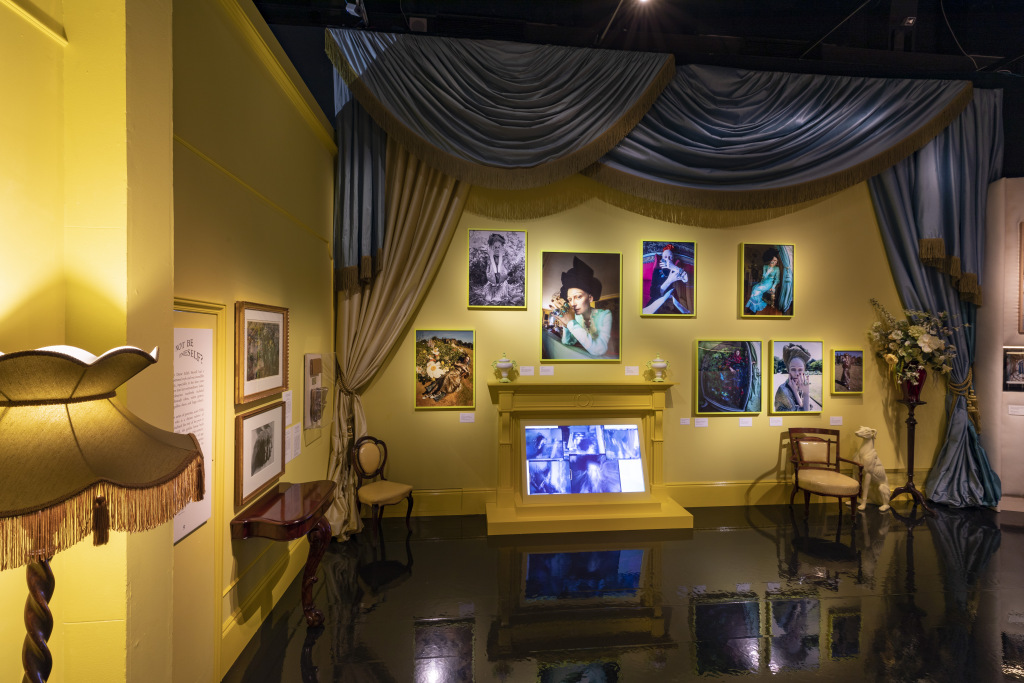
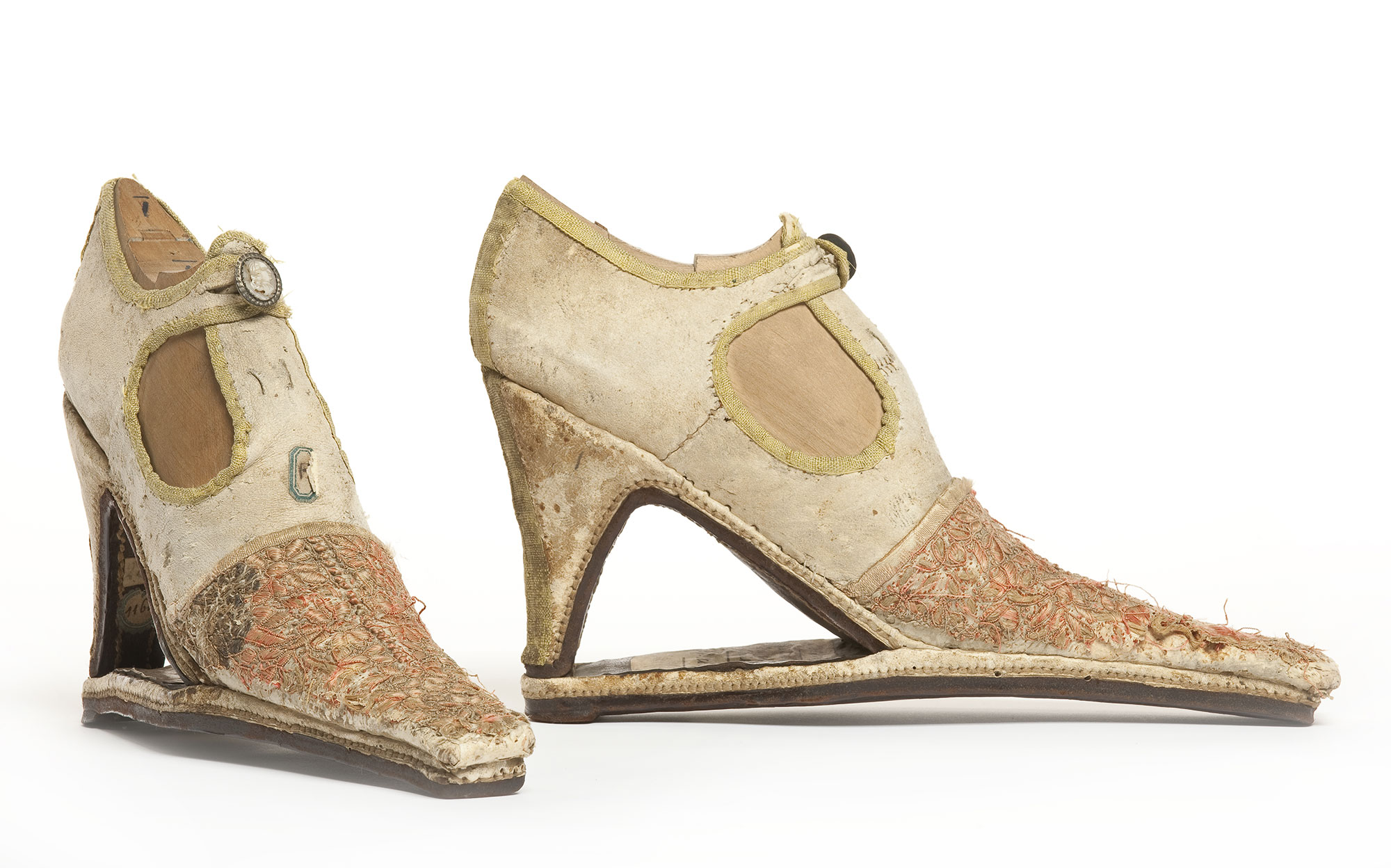
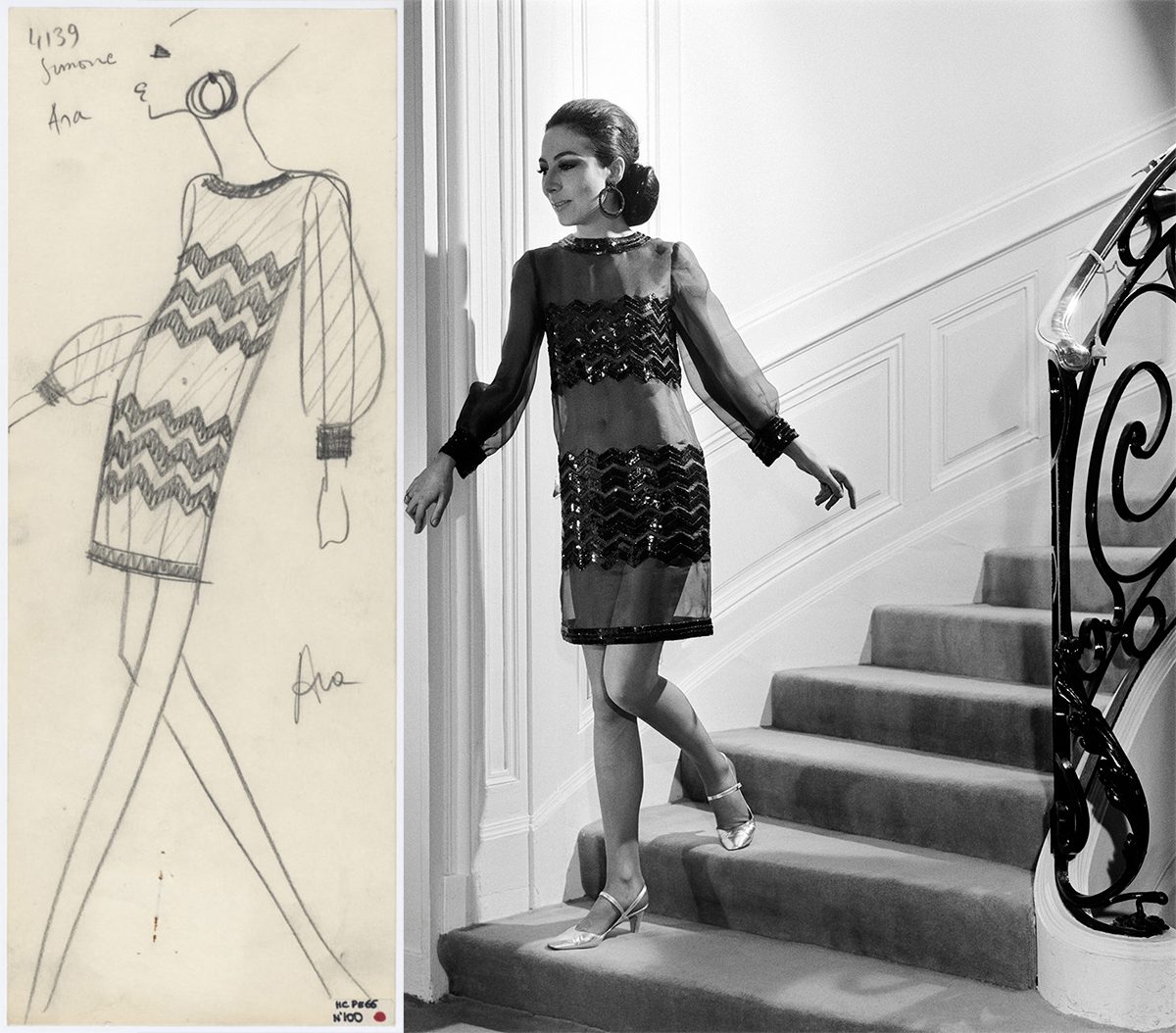
Transparencies are associated traditionally to the mild or warm months of the year, where the high temperatures justify the apparent nudity these translucent fabrics given to garments. Until now, it was the norm or accepted by a majority and obeyed, in turn, to market demands and needs of the consumers. In the end, everything applied to a simple rule: more transparent and light fabrics in summer, more thick and opaque fabrics in winter. Nowadays, transparencies have lost their usual seasonality and designers of large firms have been responsible for the public wanting them at any time of the year by gradually including them in their collections. Laces, tulles, transparent embroideries … all the fabrics that show the skin in an insightful way. However, there is one particular one that grabs the limelight so far this year: the organza.
Brief historical evolution
Organza is a very fine silk fabric that is treated to maintain a certain stiffness that gives it that starchy appearance. Its name comes from Urgenc, a city in Uzbekistan and arrived in Europe from India in the 18th century. Despite being present in the continent and after its initial links to the maids of the aristocracy, it was not until the twentieth century when this fabric became popular to all social strata. The person responsible for this was Yves Saint Laurent who placed this fabric in the altars of the trends. It was in 1966 when Yves revealed his first look with transparencies. At first, the organza subtly revealed some parts of the body, but the scandal came two years later when she designed a bold dress that completely showed the chest. In the decade of the 80s, the organza allied with frills and volumes typical of that time to make exaggerated combinations, in line with the fashion of the moment that immortalized icons such as Molly Ringwald, Liz Taylor or Ladi Di. In the 90s, the fabric came back to life again thanks to the 1997 spring-summer Prada collection that homaged transparency and the triumph of minimalism. Interestingly, the Italian firm was among the first to rescue this fabric last year, probably influenced by the new furor that organza currently relives.
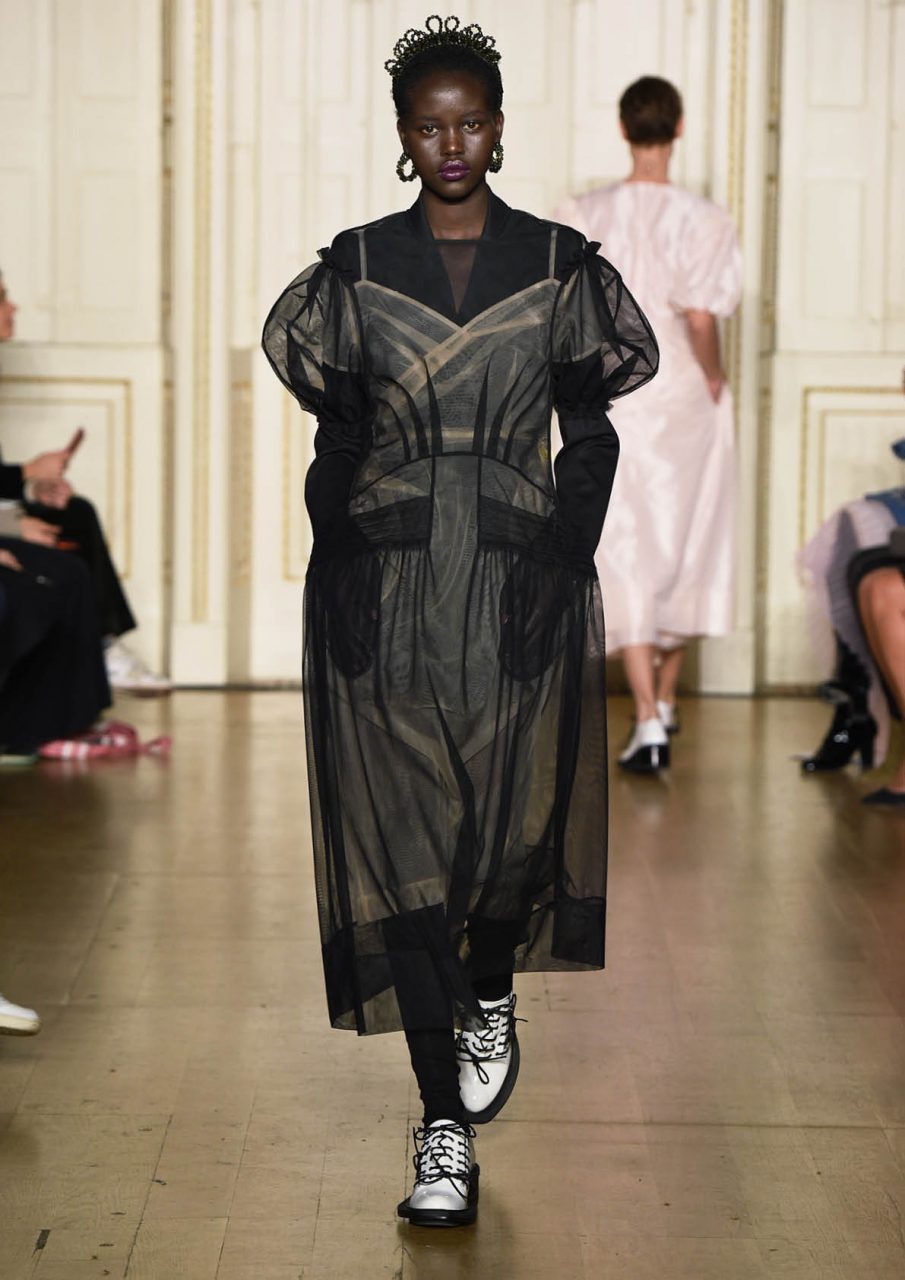 |
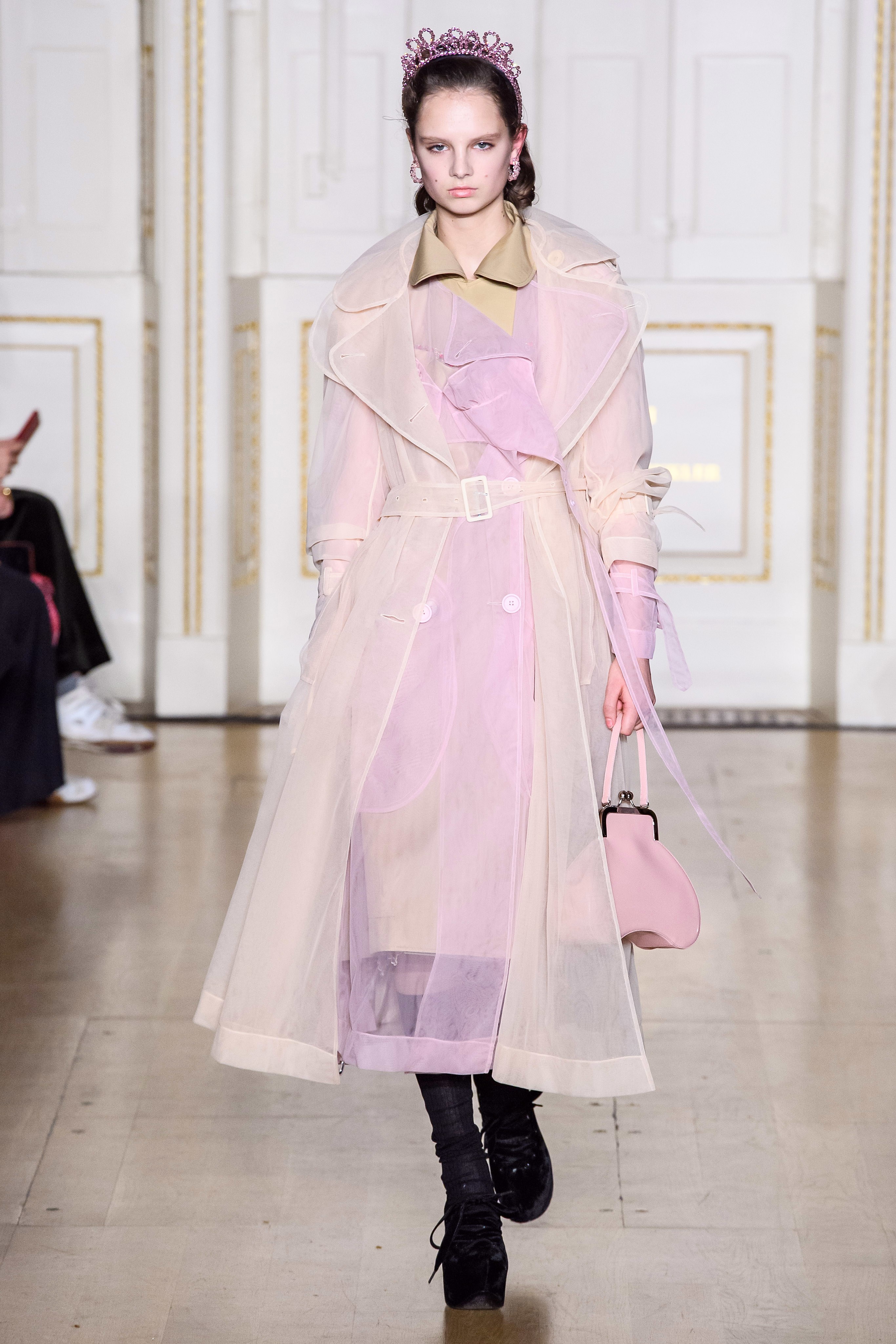 |
The revelation fabric of the season
This fine, translucent and rigid fabric has the peculiarity of adding elegance, delicacy and a certain romanticism and therefore, can boost any look with a simple garment. So far, the organza had also been linked in the exclusive field of celebrations, and although it remains there, the demand for this fabric, for other occasions, has not stopped growing.
On the catwalks today, organza has been present in the collections of Ralph Lauren, Balmain, Dolce & Gabbana Simone Rocha and Fendi, to name a few firms, but also in the chains of high street fashion that have democratized its use to make it accessible to the general public. For example, Zara presented in summer a collection of blouses, skirts and dresses made with organza that had a fulminating success, running out of stock.
From the catwalk to the high street
If a fashion is adopted in parallel by international fashion prescribers, success is more than assured and will end up arriving sooner or later to the general public. Thus, of all the pieces made with organza, the clear favourite is the blouse with puffed sleeves, being the best ally to reinvent a pair of jeans. This piece gives a romantic touch to the looks without needing other accessories. Despite the triumph of the neutrals (white, black, beige …), it also takes the colour that can range from the most vibrant palette to the pastels, our favorites. This garment works even with volume skirts or palazzo trousers.
From Gratacós we want to show you some organza from our current collection and the upcoming seasons. In our space in Barcelona you will find a good assortment of fabrics to decide if you want to use the organza on a festive occasion, or you decide to join the trend and dazzle with a garment made with this fabric for dayime wear.

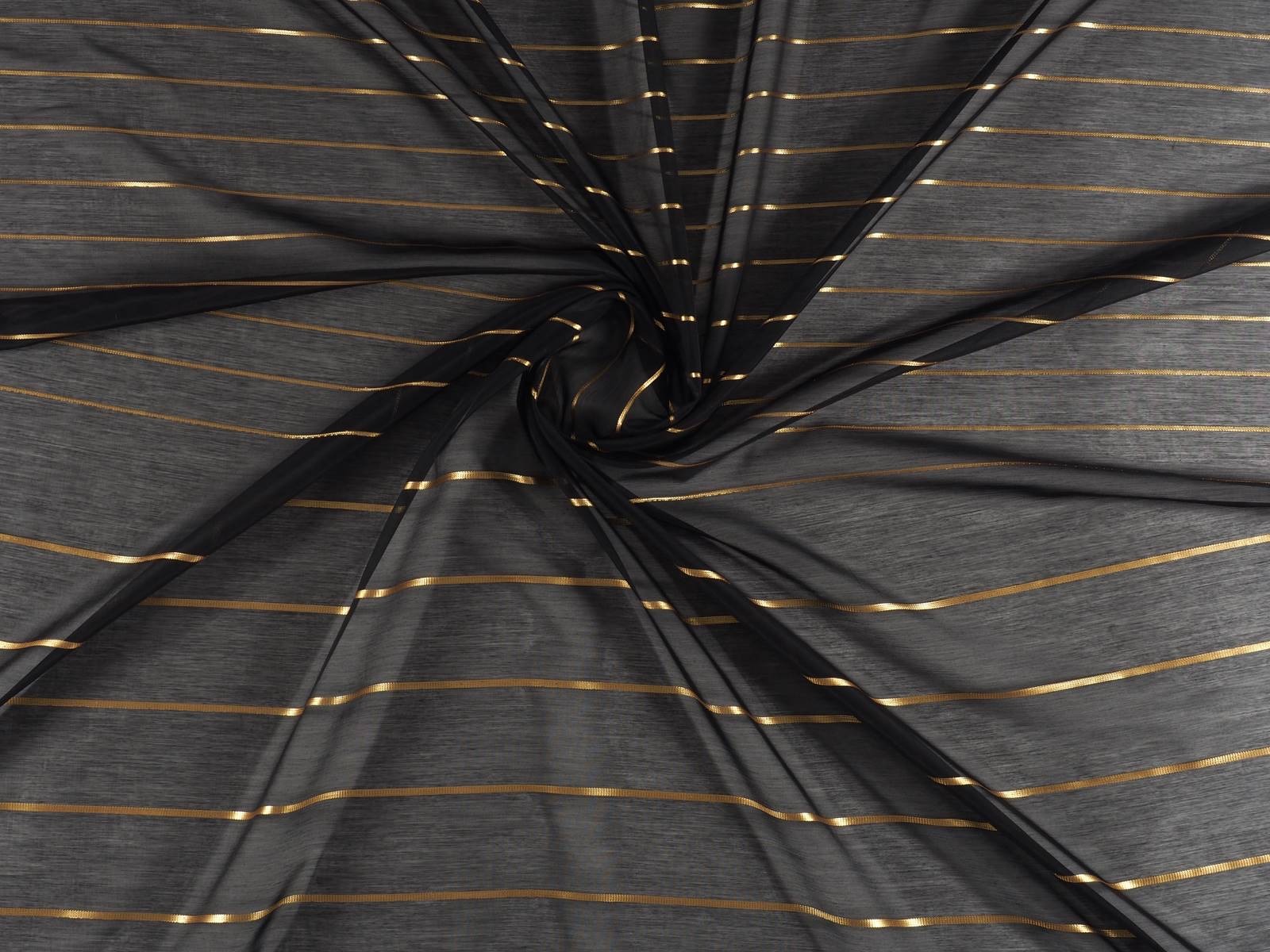
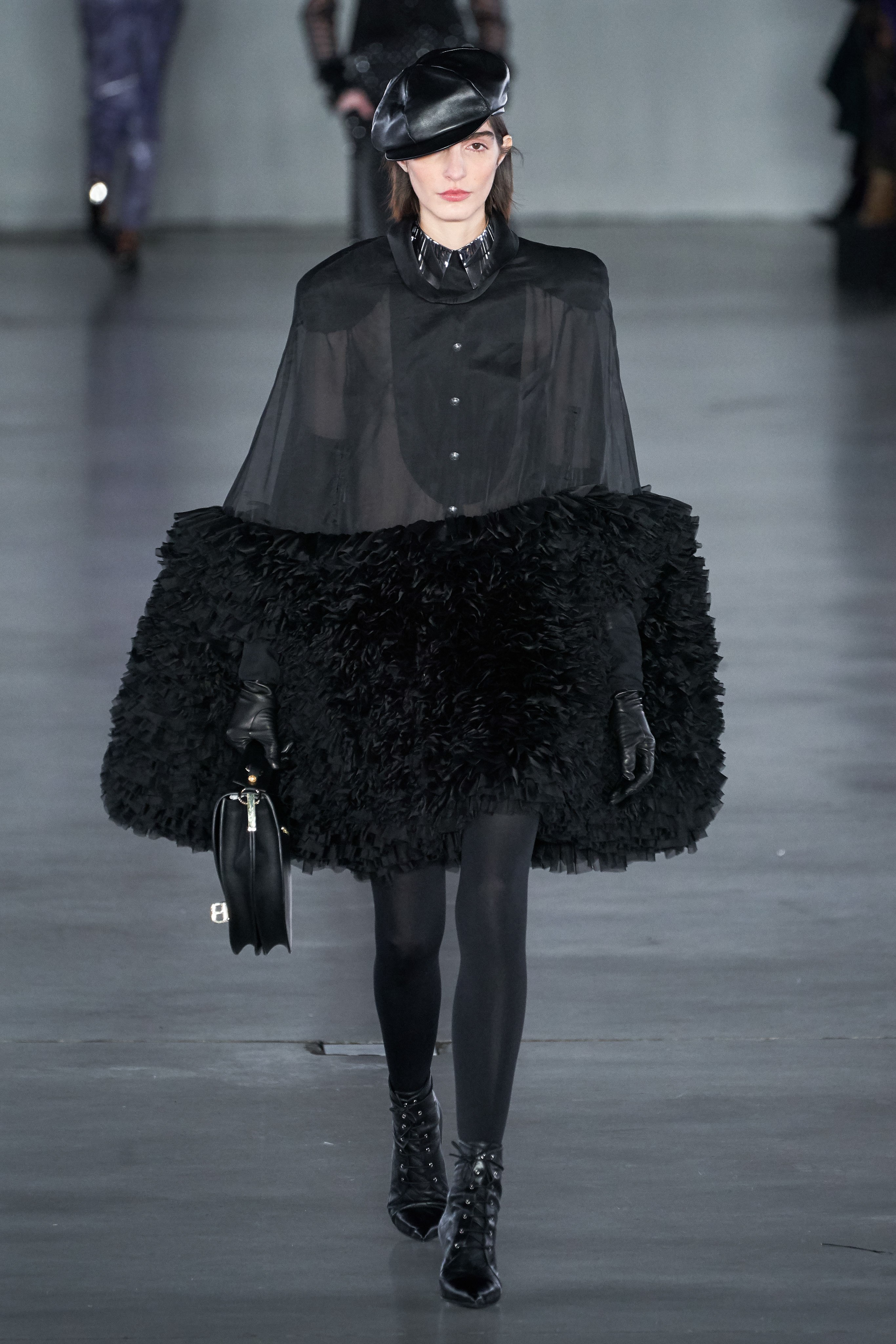
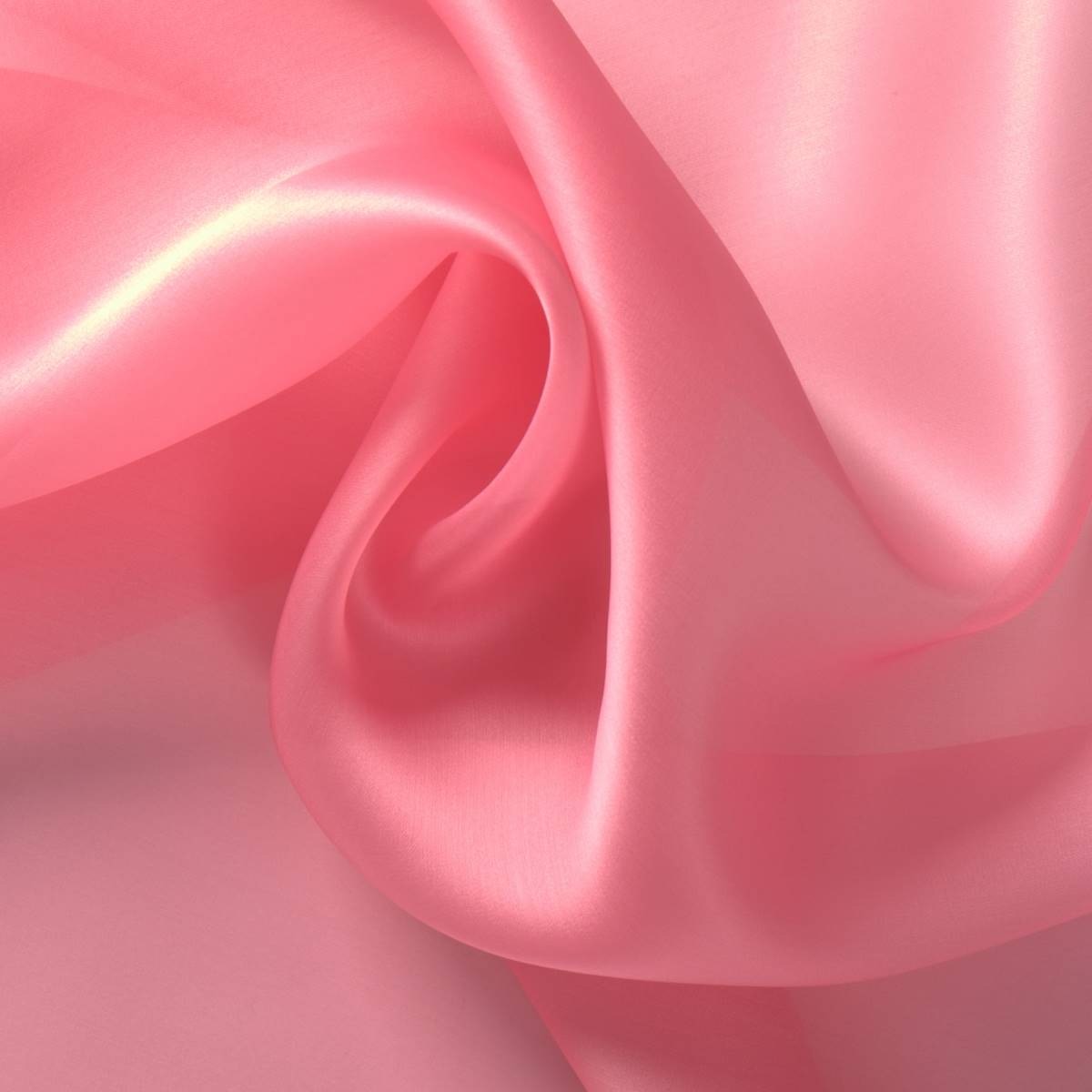
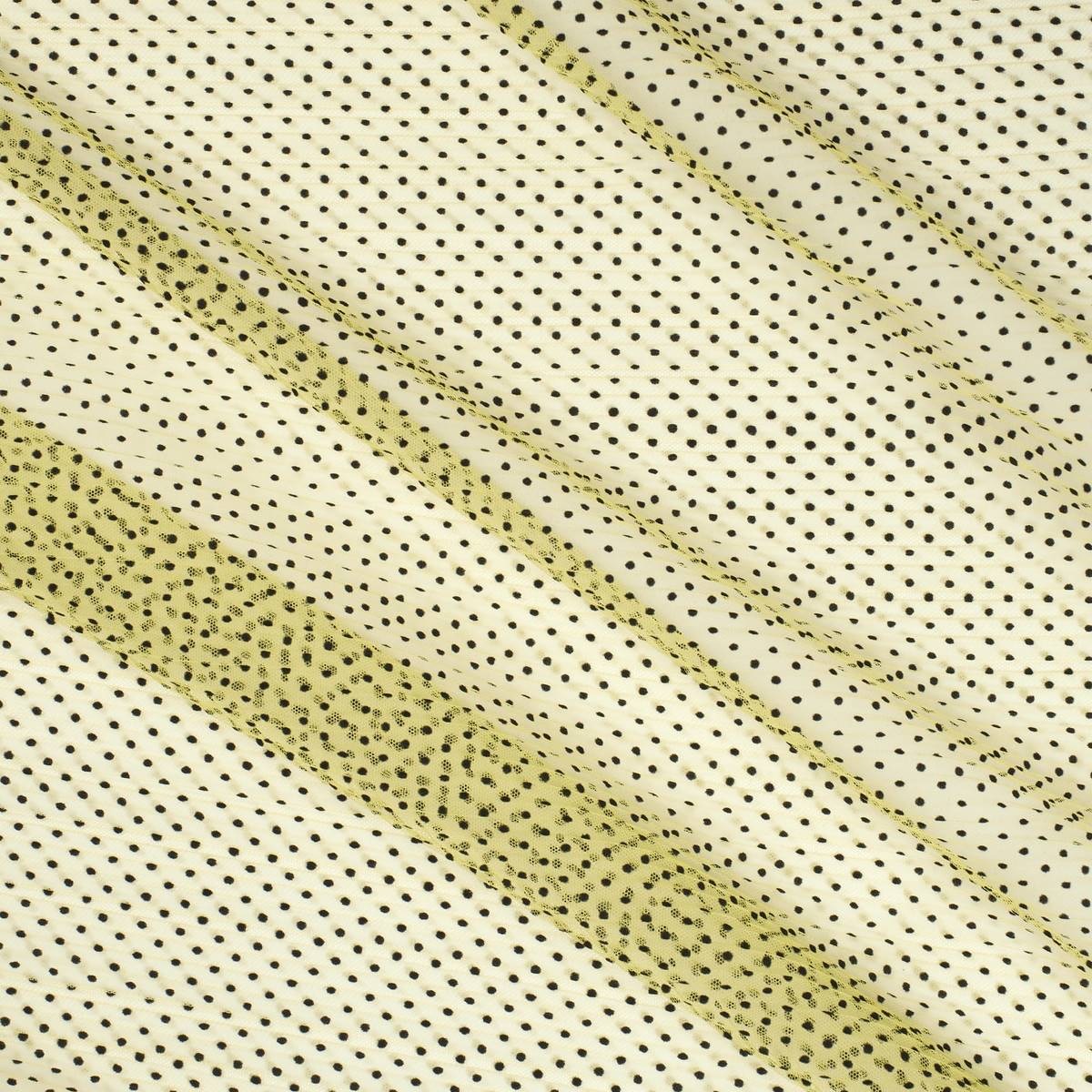
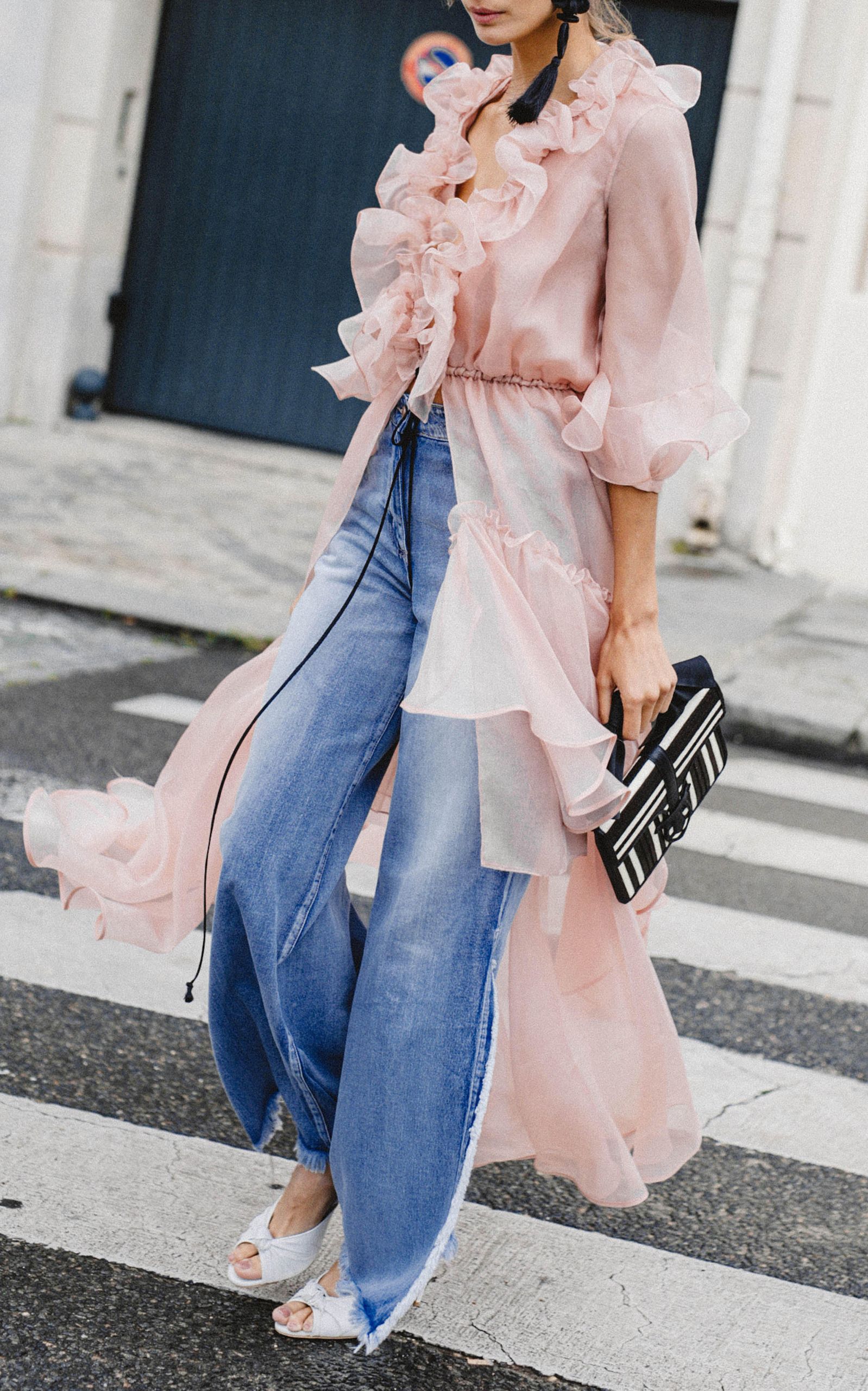

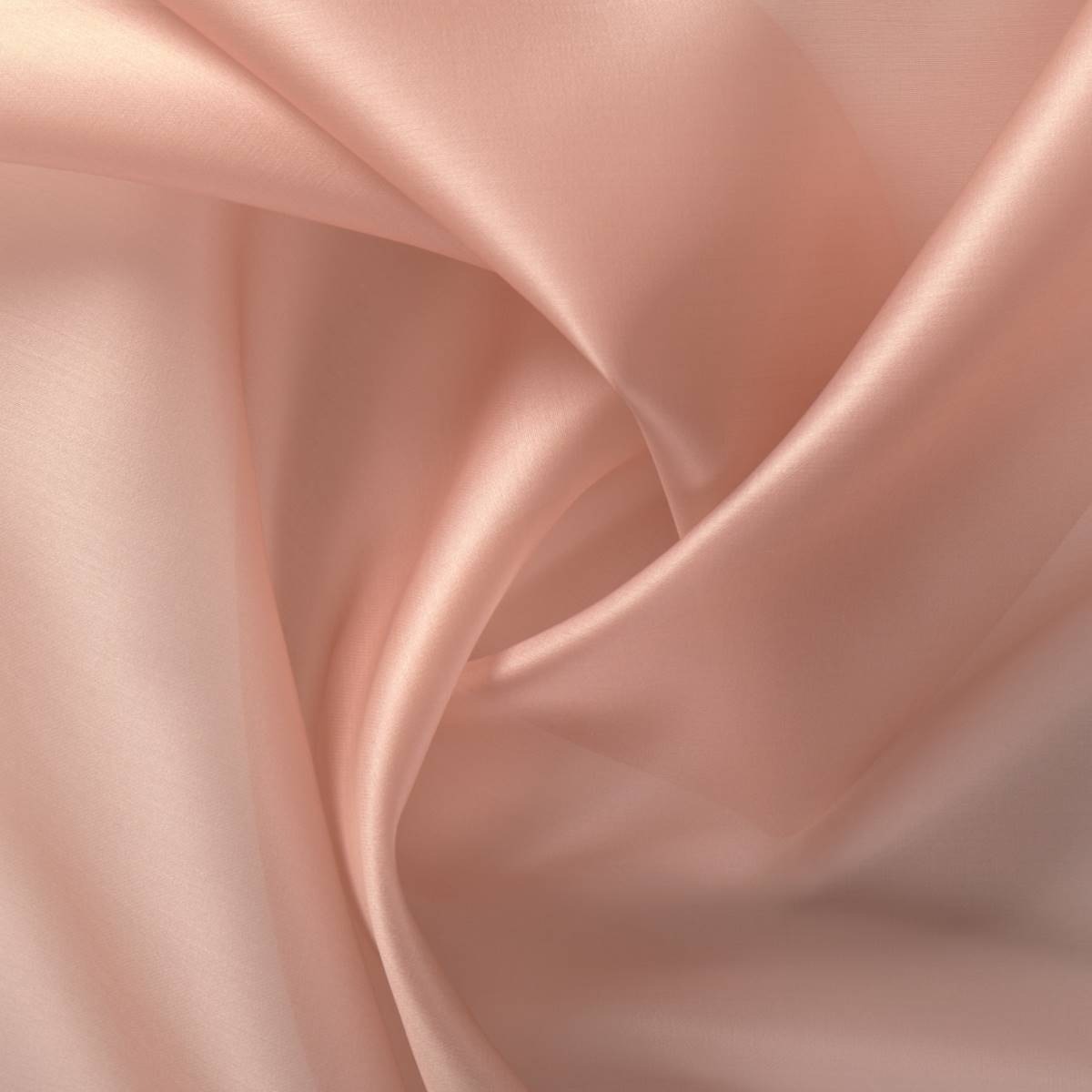
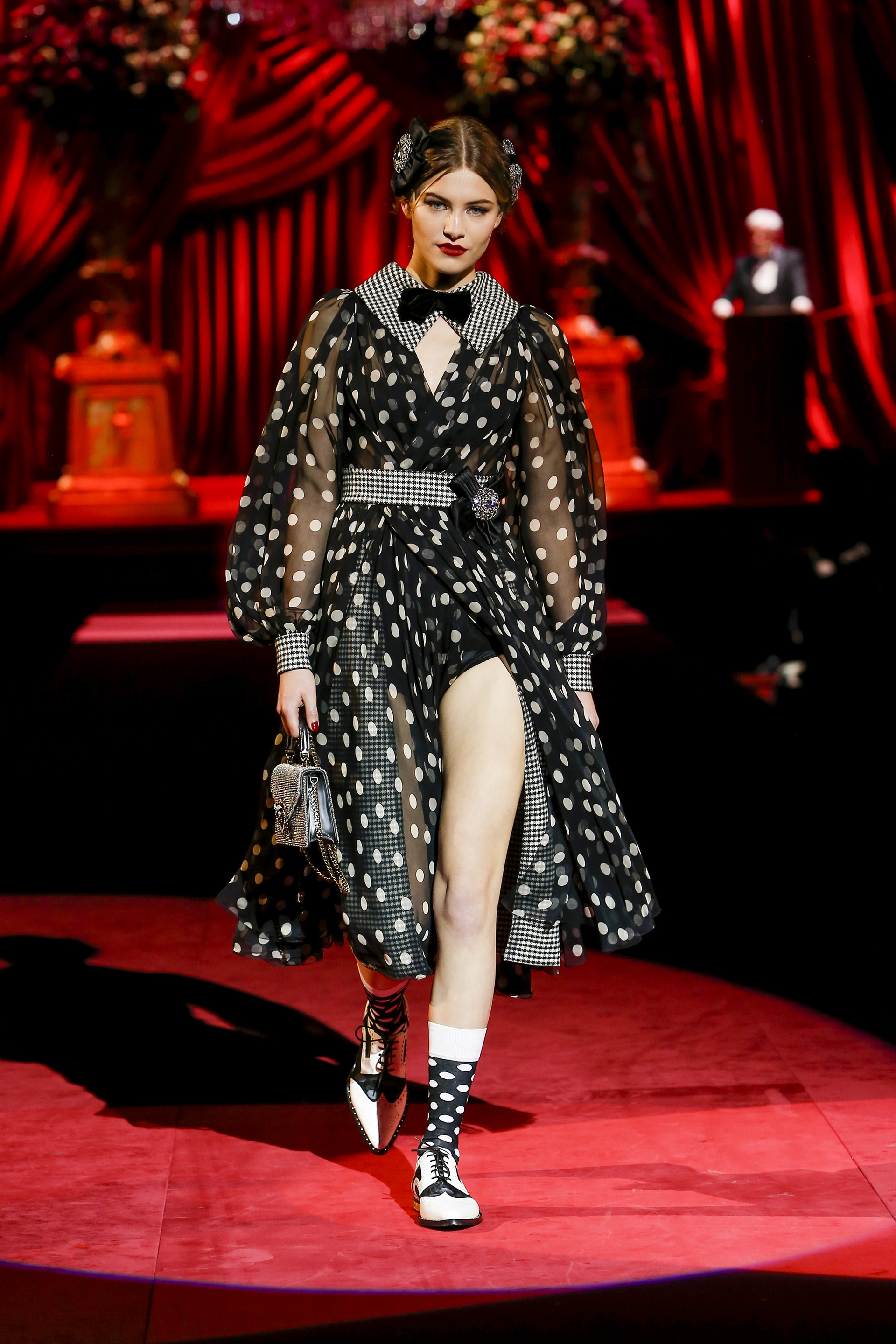
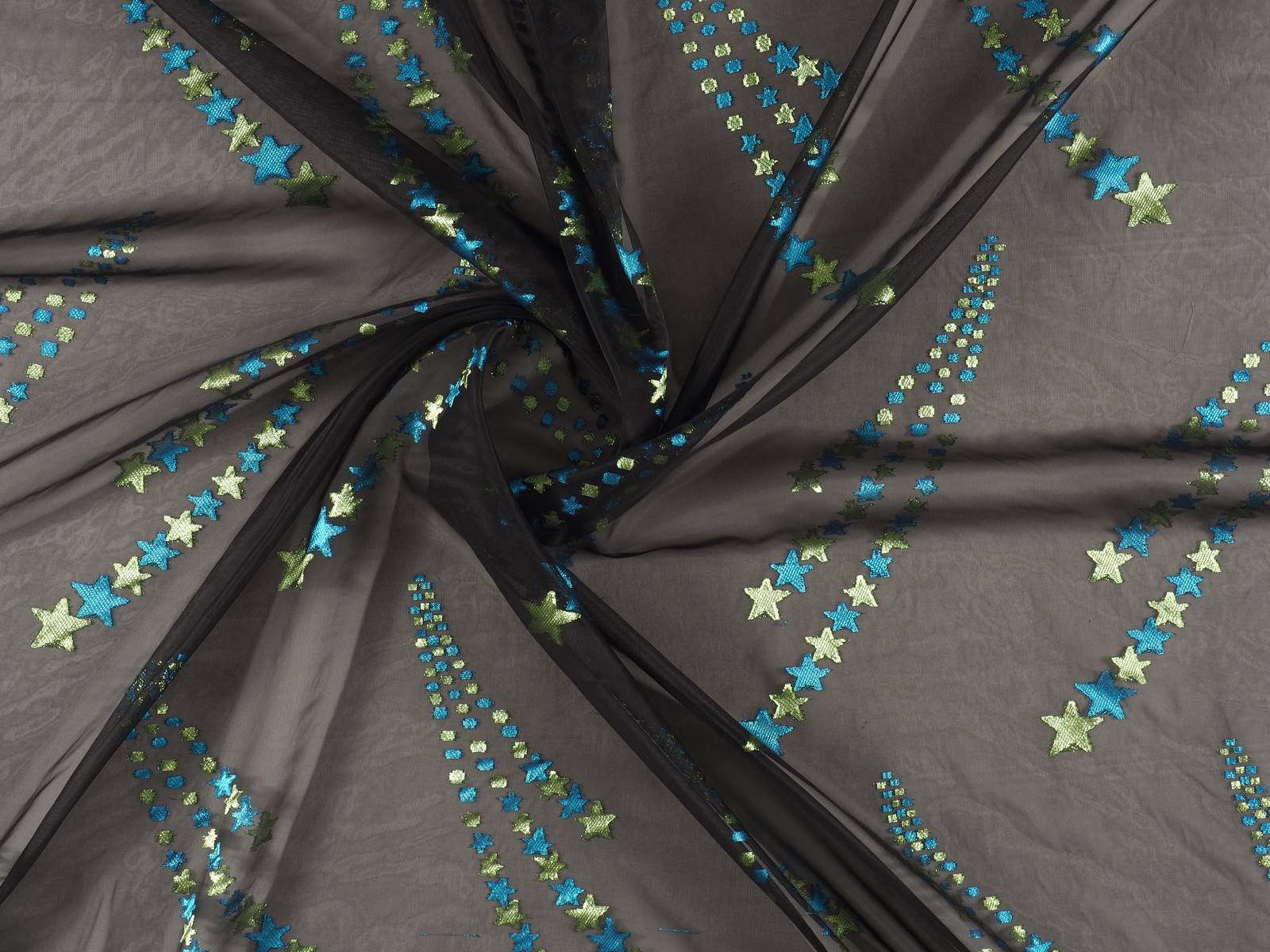

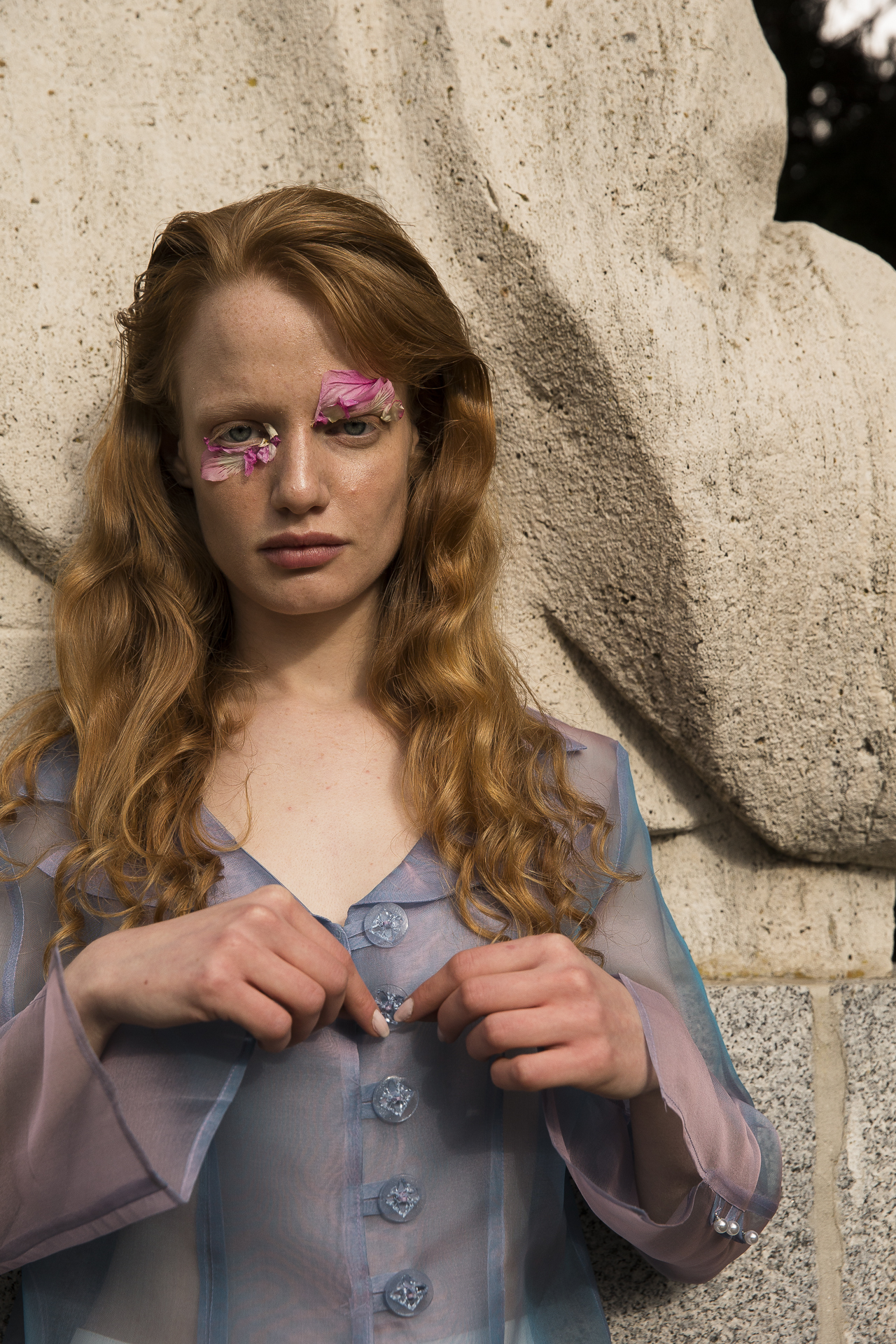
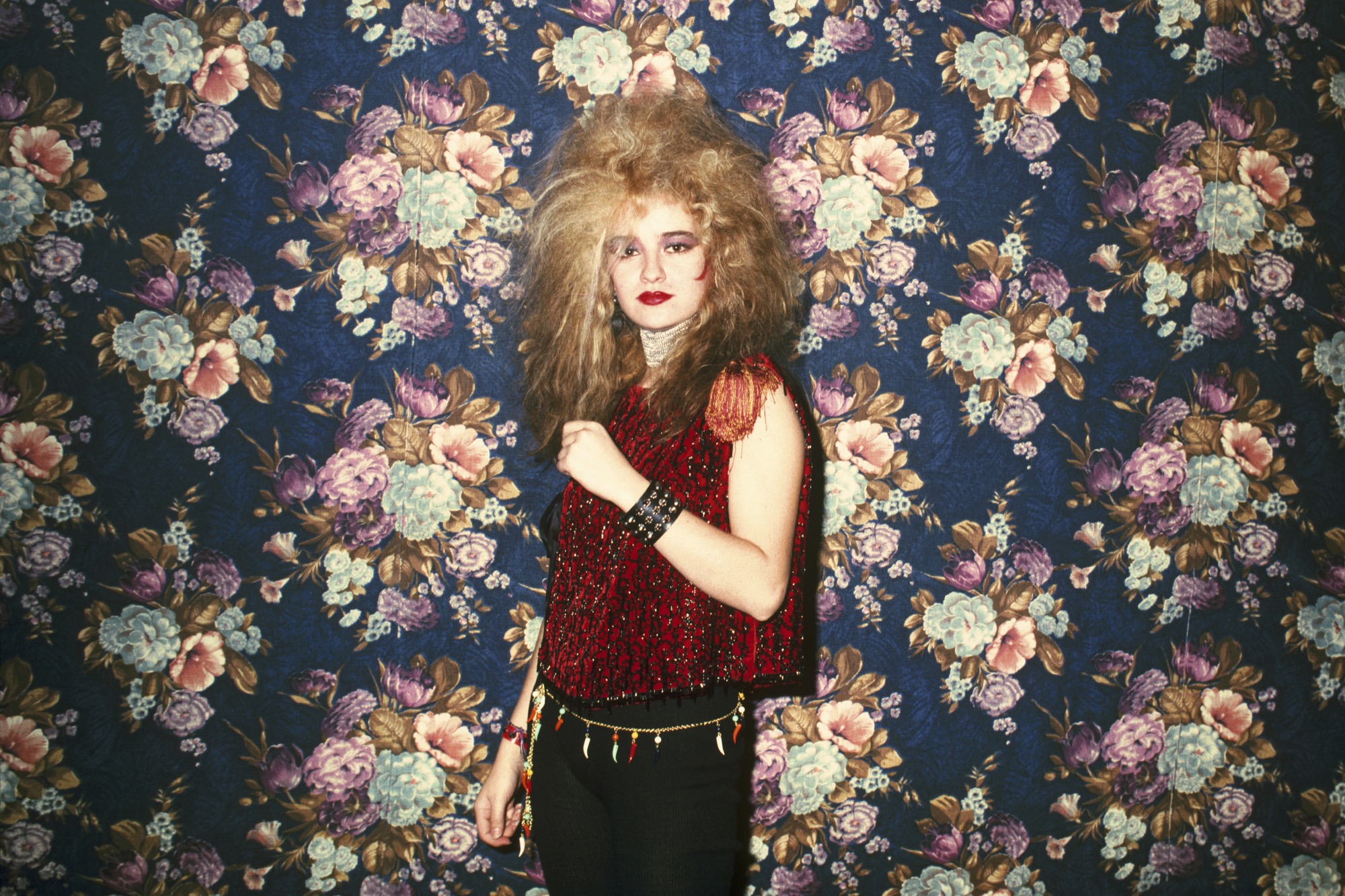
Madrid 1978. Spain was coming out of dictatorship and its capital experienced a prodigious decade that shook the cultural and artistic landscape. That revolution in technicolour that made Madrid the headquarters of fun and creativity was called La Movida. Do you remember it?
Now an exhibition organized by the Foto Colectania Foundation in Barcelona recalls those experimental years under a rebellious title: ‘La Movida. Chronicle of an agitation ‘. This recently opened exhibition offers an approach to this historical moment from the perspective of photography, addressing radically different areas and perspectives. The exhibition, presented in summer at the prestigious Les Rencontres d’Arles festival, focuses on the work of four photographers who immortalized some icons of La Movida: Alberto García-Alix, Ouka Leele, Pablo Pérez-Mínguez and Miguel Trillo. These professionals lived this cultural revolution in person, sometimes lived together, sometimes came across each other or simply found themselves in different environments, but the interesting thing about the exhibition is how each of them immortalized it from a different perspective, showing different faces of the same reality.

Thus the exhibition presents this polyhedral look at the movement, in which extraordinary photographs can be contemplated that bear exceptional testimony to the time. Authentic visual jewels such as García Alix’s vintage photographs that testify to how the street was transformed and also the characters that inhabited it; Ouka Leele’s dreamlike and coloured snapshots full of freshness and imagination; the rebellious perspective of Pablo Pérez-Mínguez in whose study all the main characters were photographed under the slogan “Everything goes” and the urban tribes of Miguel Trillo who portrayed the freedom of the street and the youth of the moment, grouped according to their way of dressing and their behaviour. The exhibition also includes a selection of materials such as vinyl, fanzines or posters, as well as a projection of musical performances that complement the personal universes of the photographers.

The uniqueness of La Movida
La Movida was a unique and spontaneous era of contemporary Spanish culture. It took place in Madrid at the end of the seventies and extended throughout the 80s, coinciding with the mayoralty of Enrique Tierno Galván. After several decades of dictatorship and ostracism the Spanish transition saw a new generation fascinated by modernity and the idea of the new, which would crystallize in creators from different fields such as music, fashion, film, painting or photography . This cultural heyday was distinguished in other European cities as a phenomenon that directly connected with the daily life of the moment.
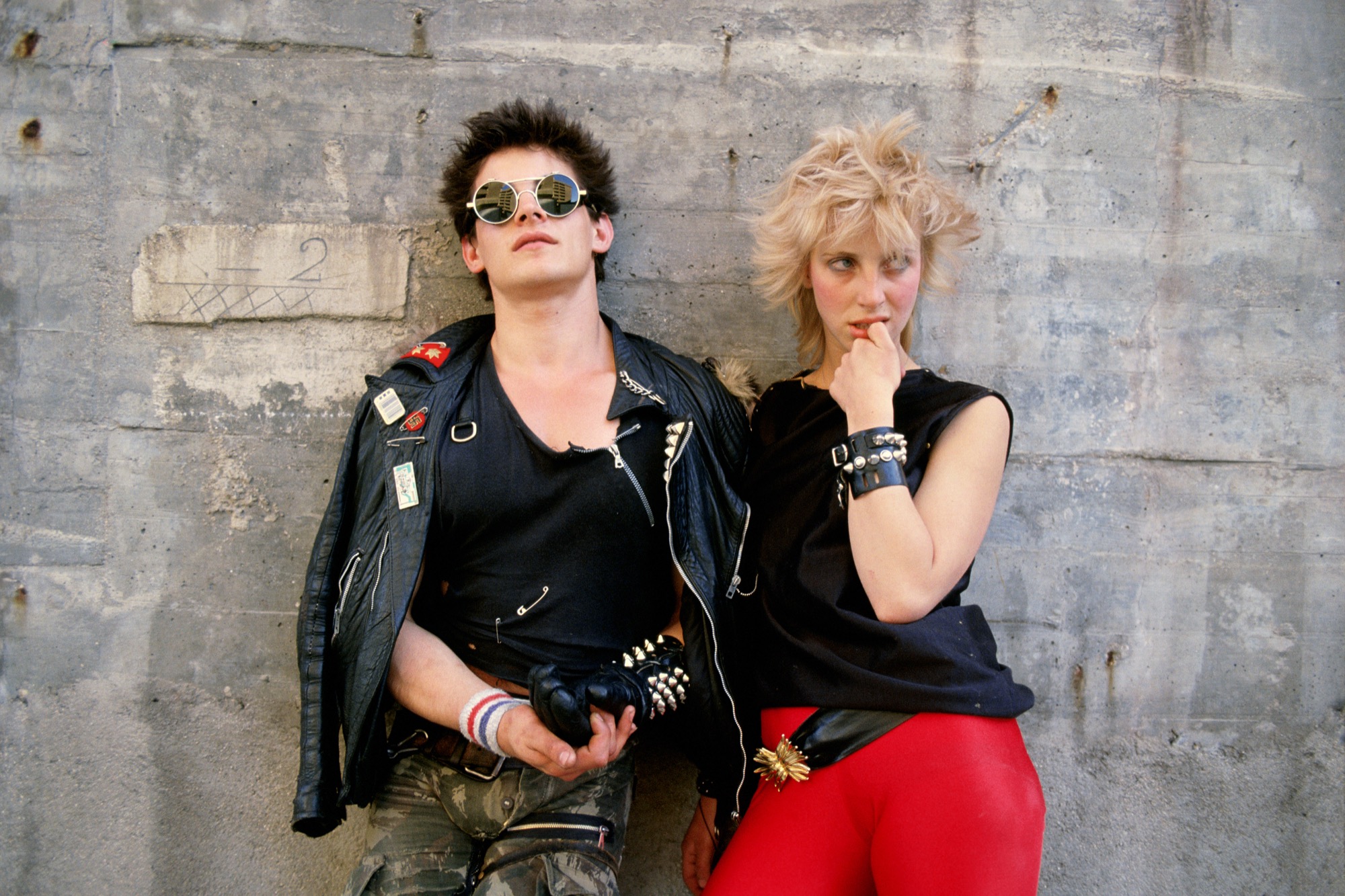
The exhibition ‘La Movida. Chronicle of an agitation ‘ can be visited at the Foto Colectania Foundation in Barcelona until mid-February. A look back at the past of the most fun and free city of the moment.
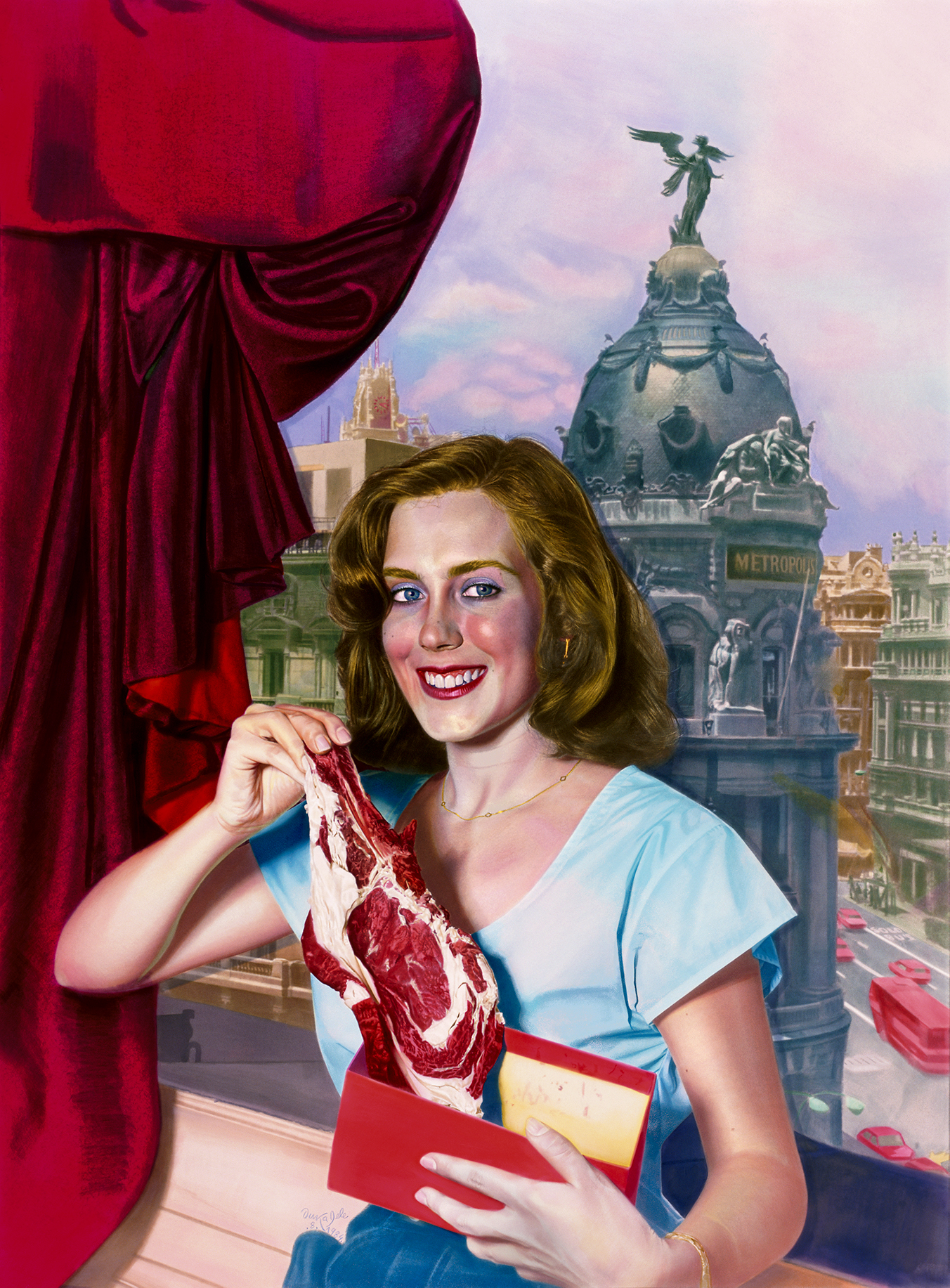
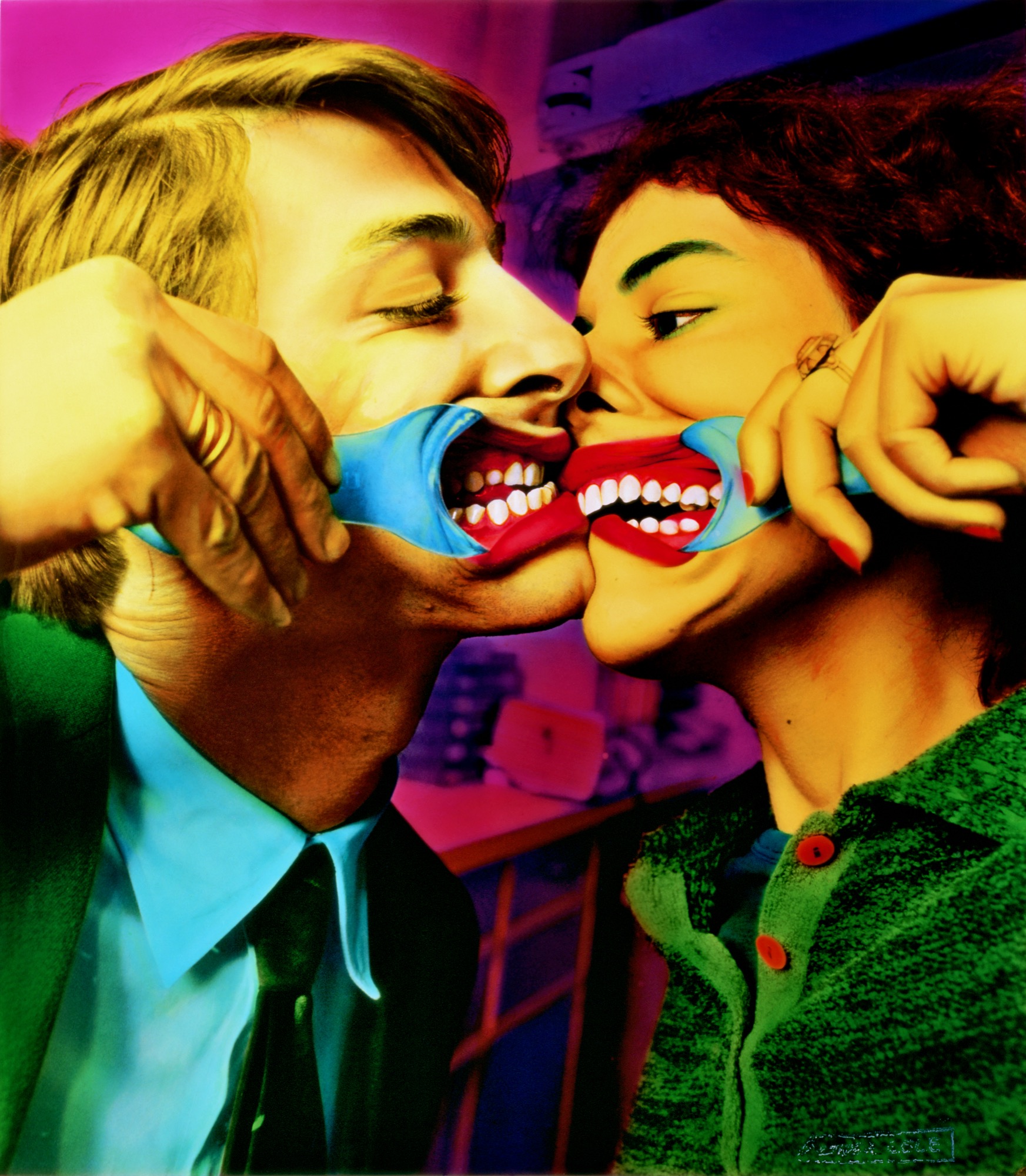


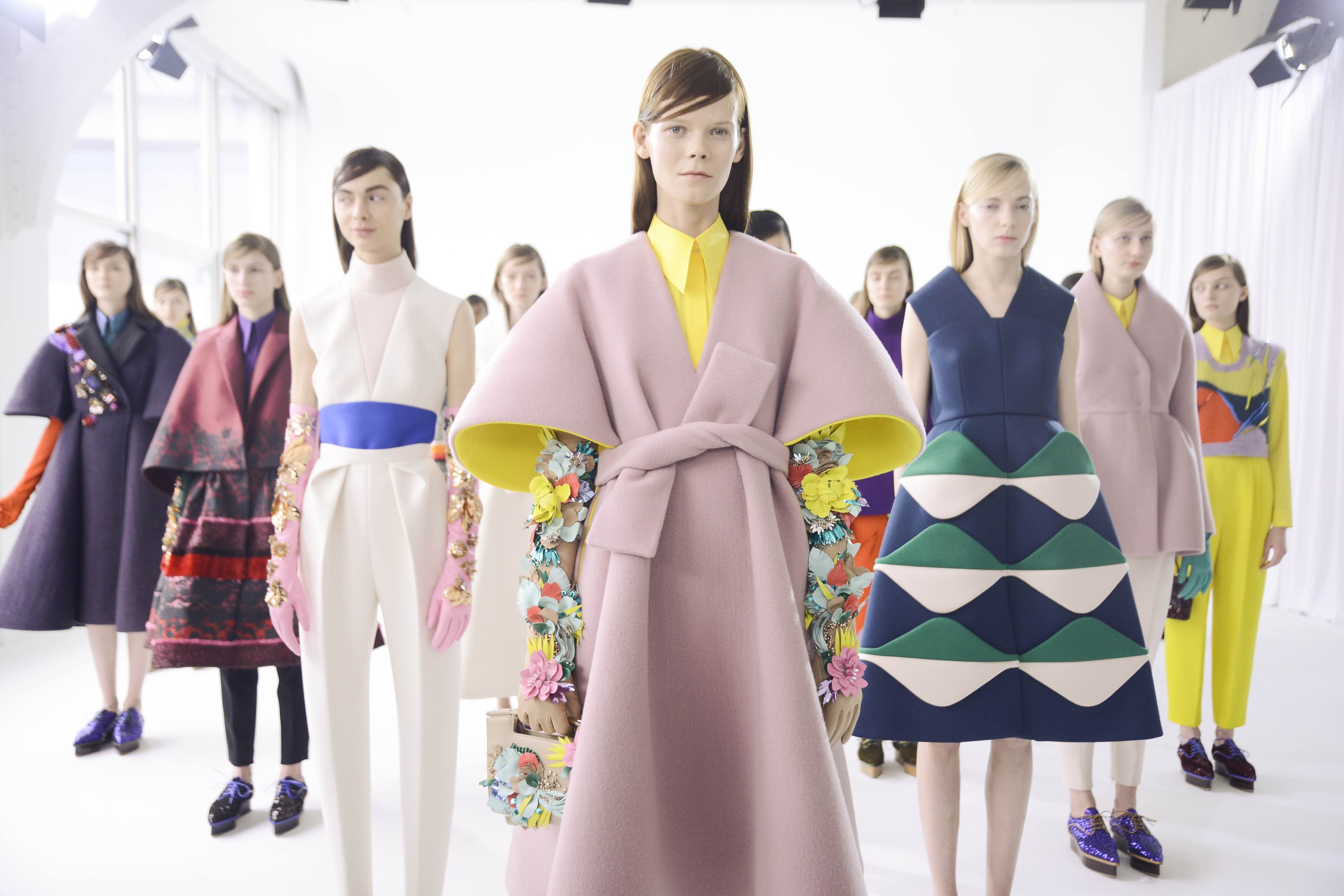
La “comunidad del color” crece edición tras edición generando una gran expectativa entre los profesionales del diseño que se marcan en el calendario, las citas que marca dos veces al año The Color Community. Como ya sabéis, se trata de una iniciativa dirigida por un grupo de profesionales que, desde diferentes disciplinas creativas, comparten un estudio global del color y la materia. Aunque en cada informe que se presenta participan varios colaboradores, el núcleo base lo forman tres profesionales: el arquitecto Pere Ortega; la diseñadora especializada en Colour & Trim, Eva Muñoz; y Rosa Pujol, Textil & Colour Stylist de Gratacós.
Como es habitual, The Color Community se celebra en la Antigua Fábrica Damm de Barcelona, un poderoso colaborador que cede las instalaciones y dispone de refrigerios para llevar a cabo la presentación del informe y un posterior afterwork. En esta decimotercera edición, se presentó la carta de colores que marcarán la temporada Primavera-Verano 2021. Es un informe orientativo que como cada año sirve de inspiración para los profesionales del sector.
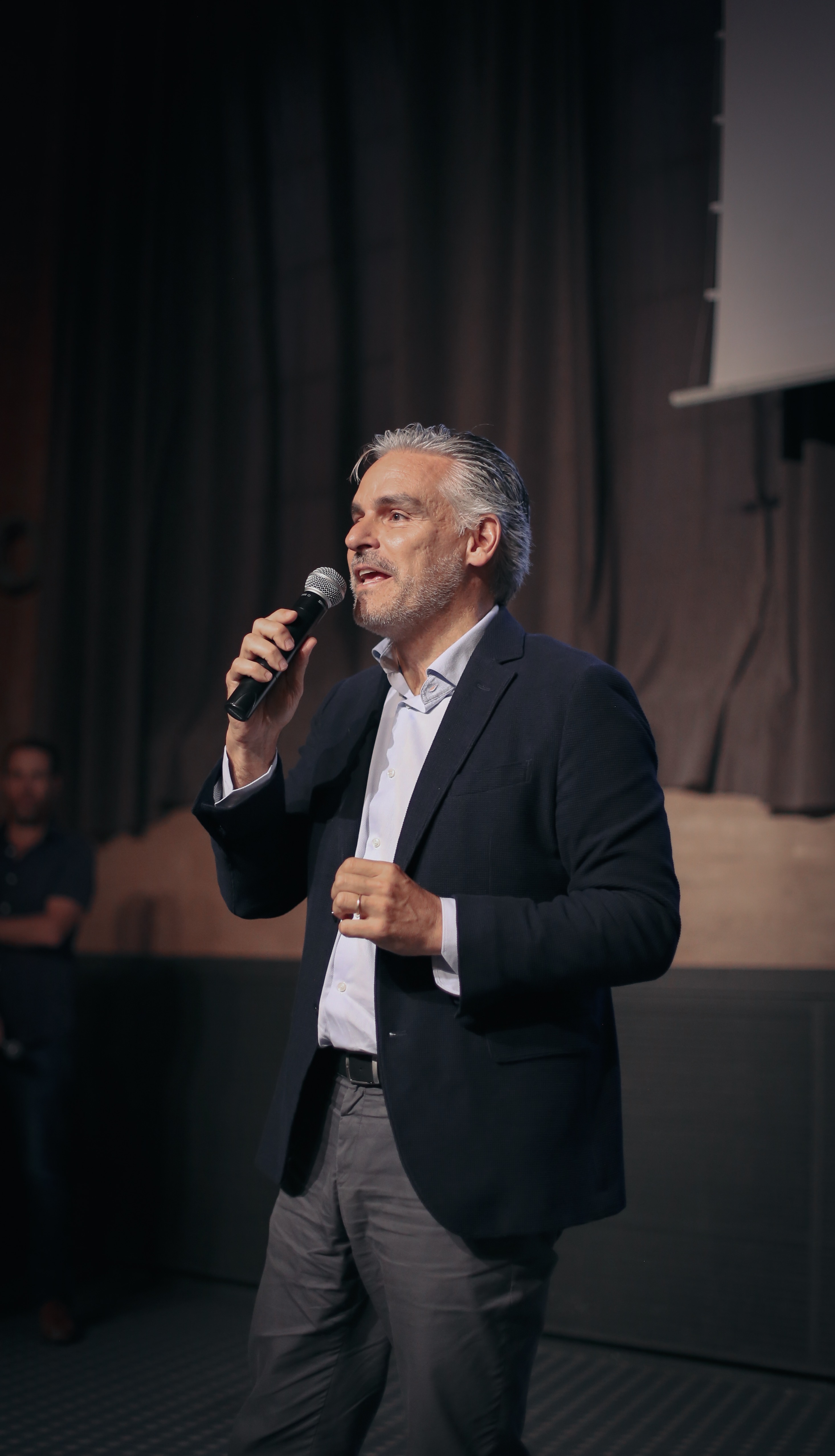
Juan Gratacós: “El tejido sin color sería aburrido”
En nuestro caso, esta cita es siempre imperdible. No solo por la participación de Rosa Pujol, encargada del departamento de diseño de la empresa, sino porque Gratacós se desvive por las gamas cromáticas. “Nos encanta el color y el tejido sin color sería aburrido”, comentó Juan Gratacós minutos antes de la presentación del nuevo informe.
Esta edición se inspira en el concepto de la adaptación con matices positivos. “Le sacamos la carga humilde o negativa a la palabra porque adaptarse no quiere decir conformarse, todo lo contrario”, detalló el arquitecto Pere Ortega en la presentación. Así, ‘Adapt’ se basa en la idea de ajustarse a un contexto determinado, utilizando un tipo de creatividad racional que permita buscar soluciones concisas y válidas. “Nos referimos a la creatividad inteligente que es fruto de una estrategia pensada y reflexionada que encaje con la situación actual. No tiene nada que ver con la genialidad del momento o un brillo puntual”, explicó. La adaptación como símbolo de la inteligencia, de la estrategia racional y la sabiduría popular.
Pere Ortega: “Entendemos la adaptación como un tipo de creatividad inteligente que es fruto de una estrategia pensada”.
La propuesta cromática ‘Adapt’ se estructura a través de cuatro gamas de color, texturas y materias bautizadas como, Afterwork, Baltic Sight, Natif y Modern. A continuación, os explicamos un breve resumen con sus inspiraciones.
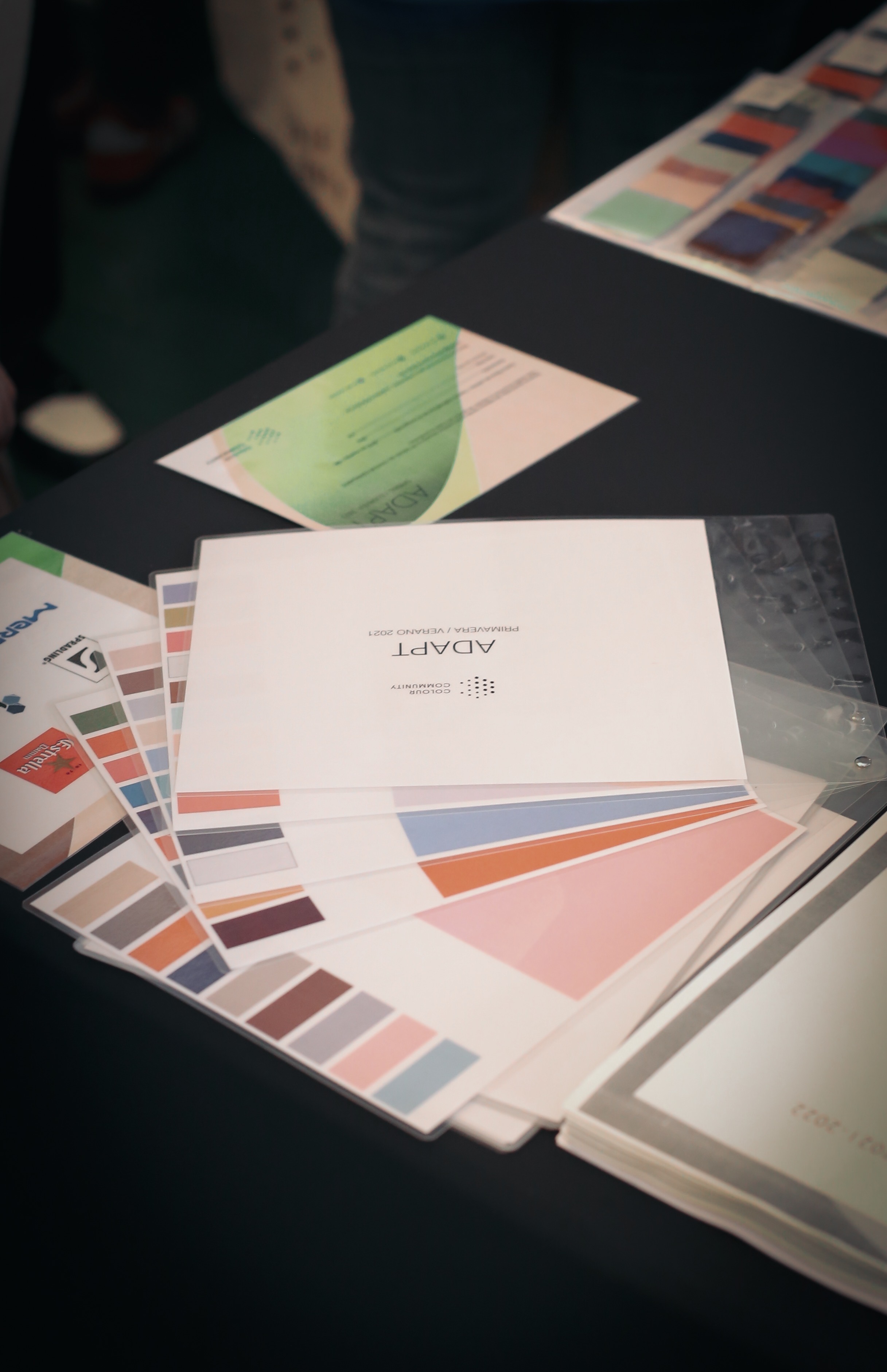
-
AFTERWORK
La primera inspiración se centra en el momento de ocio después de trabajar. Un espacio para el descanso, la diversión y el hedonismo, siempre compartido. Afterwork es una propuesta versátil, que se adapta en estos contextos festivos a través de tonos pastel como el rosa candy o el azul bebé que contrastan con algunos flúores que le dan ese punto de luz necesario en cualquier fiesta: se tiñen de verde lima, amarillo y fucsia. En esta inspiración se introduce el concepto del tono transparente a través de superficies vítreas y texturas y estampados que imitan el reflejo del agua.
-
BALTIC SIGHT
La segunda gama es más introspectiva y toma como fuente de inspiración el mar Báltico que baña los países del norte de Europa. Es una propuesta fría y racional que apela al confort y a la intimidad en esa búsqueda de los refugios interiores. La gama de azules se inspira en las aguas profundas en tonos fríos y grisáceos, verdes apagados y los tonos neutros como el blanco, el negro y el beige. Como nota de color juega con algunos tonos rojizos. La propuesta también hace un guiño a los patrones estructurados, las siluetas arquitectónicas, los estampados lineales y los accesorios verticales. Se trabaja el concepto de silencio.
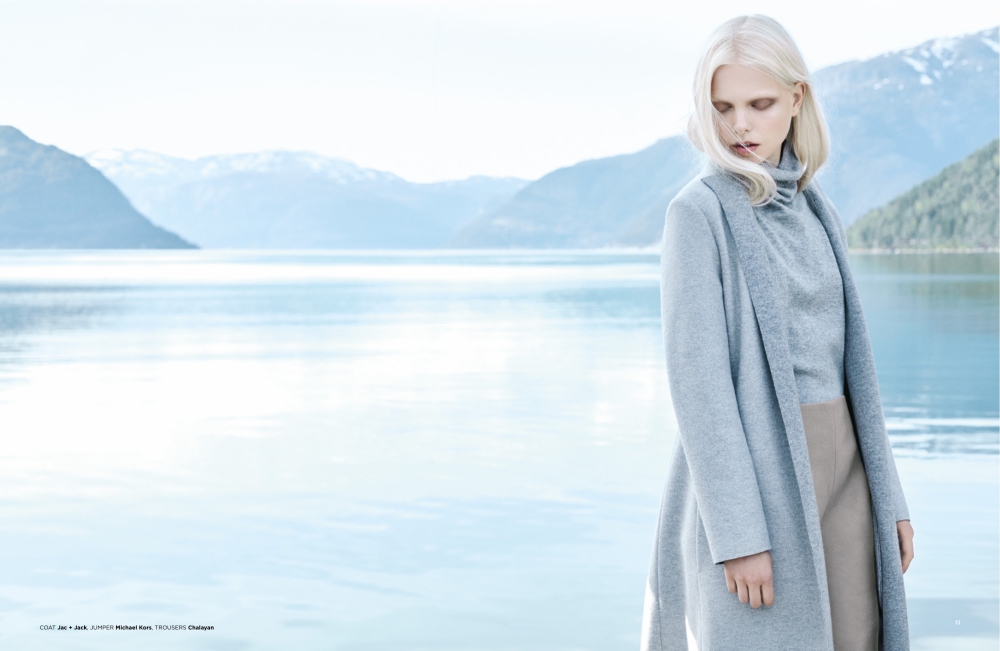
-
NATIF
La tercera inspiración es un homenaje a la autenticidad, a la tierra y a la naturaleza. Representa un giro hacia la artesanía y también quiere transmitir la multiculturalidad con diseños sin denominación de origen. Todo forma parte del todo. La paleta de colores de Natif es vibrante con tonos poderosos que van desde los naranjas saturados, los morados, los azules mágicos y los rojos tierra. Las tonalidades verde se vinculan con las hojas y los bosques. La singularidad cultural se consigue a través de los estampados florales y los que imitan el trazo manual, los motivos geométricos y los acabados rústicos.
-
MODERN
Por último, la cuarta inspiración representa un pasaje por las otras gamas. La ciudad y su vida interior es el motor de la creatividad y la gama de colores expresa como los individuos se adaptan a la ciudad, a la vez que se mimetizan en sus edificios, asfalto, huertos urbanos, zonas verdes… Forman parte de la urbe las 24 horas. Para expresarlo se utiliza una paleta cromática muy sensitiva con colores que aportan vitalidad. Los falsos crudos, los verdes apagados, el azul petróleo, el rosa pálido, el denim, el naranja excéntrico…conviven con siluetas minimalistas, materias tableadas y estampados lineales.
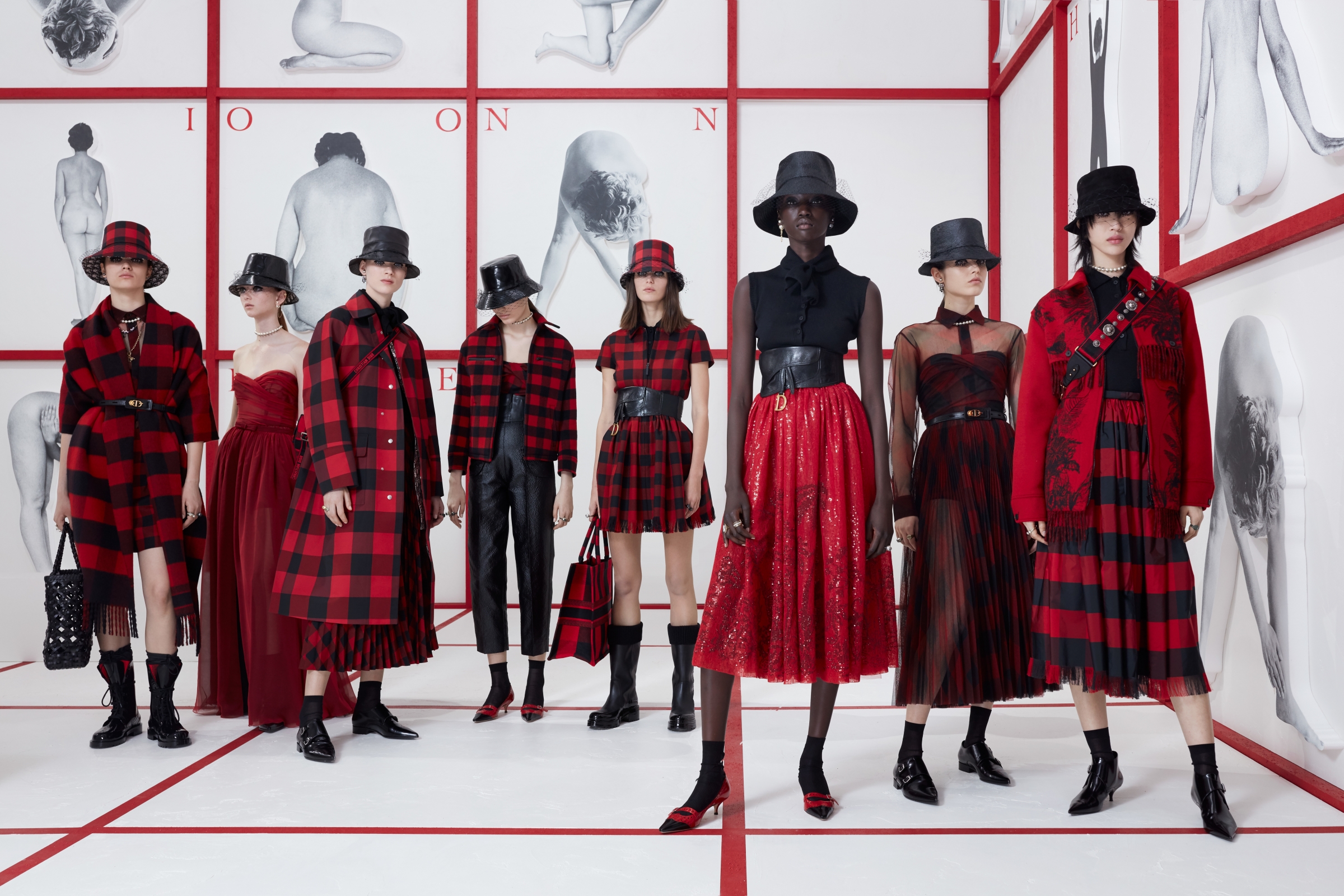
Checks have always been present in the history of contemporary fashion. Moreover, they are part of those unperturbed tendencies, oblivious to cycles, which are repeated and renewed without losing their identity.
A priori, when we talk of a check print the British style comes to mind with its classic costumes, the tartan reminiscent of the Scots or the vichy checks that refer us to the age of innocence. It is always time to opt for checks, whether in the winter or summer collections. The novelty is that today many checks break barriers and leave their comfort zone as they take over garments, accessories or complements which hitherto were less conventional.
We are going to analyze the three most common check prints on the cat-walks of the new Autumn-Winter 2019/2020 season:
Prince of Wales
It is a type of two-colour fabric design in the form of complex frames, sometimes with a third colour as a profile. It alternately combines large checks with a milrayas design along with smaller squares in crow’s feet. Frequently the different grey scales (or muted colours) are used as base colours and sometimes one more colour is added to that base tone, usually blue. The origin of this print is popular as it is a fabric used by the workers, although it was the Duke of Windsor (Eduard VIII) who ended up popularizing it in the 1930s and spreading it throughout the world.
When playing with the black and white binomial, this type of plaid print becomes a timeless classic, perfect in any wardrobe. This season, under a preppy style seen especially on cat-walks of Marc Jacobs, Prada, Givenchy, Balenciaga, Chloé and Marni, together with many others who opt for this pattern.
Tartan
It is perhaps the most identifiable picture. A fabric whose pattern is formed by horizontal and vertical lines that draw pictures of different colours. Of Scottish origin, tartan is associated with the clans that used them to distinguish themselves. Each family adapted particular designs, as well as colours that identified them as members of each clan. There are named tartans like McAndrew, McQueen, Douglas … even modern designs like the Royal Stewart, created by Vivienne Westwood. In its origin the tartan was made of wool, although today it is shaped through several fabrics. At present, with the appearance of new materials the word tartan has gone from defining the fabric to the design, regardless of where it is shaped.
 |
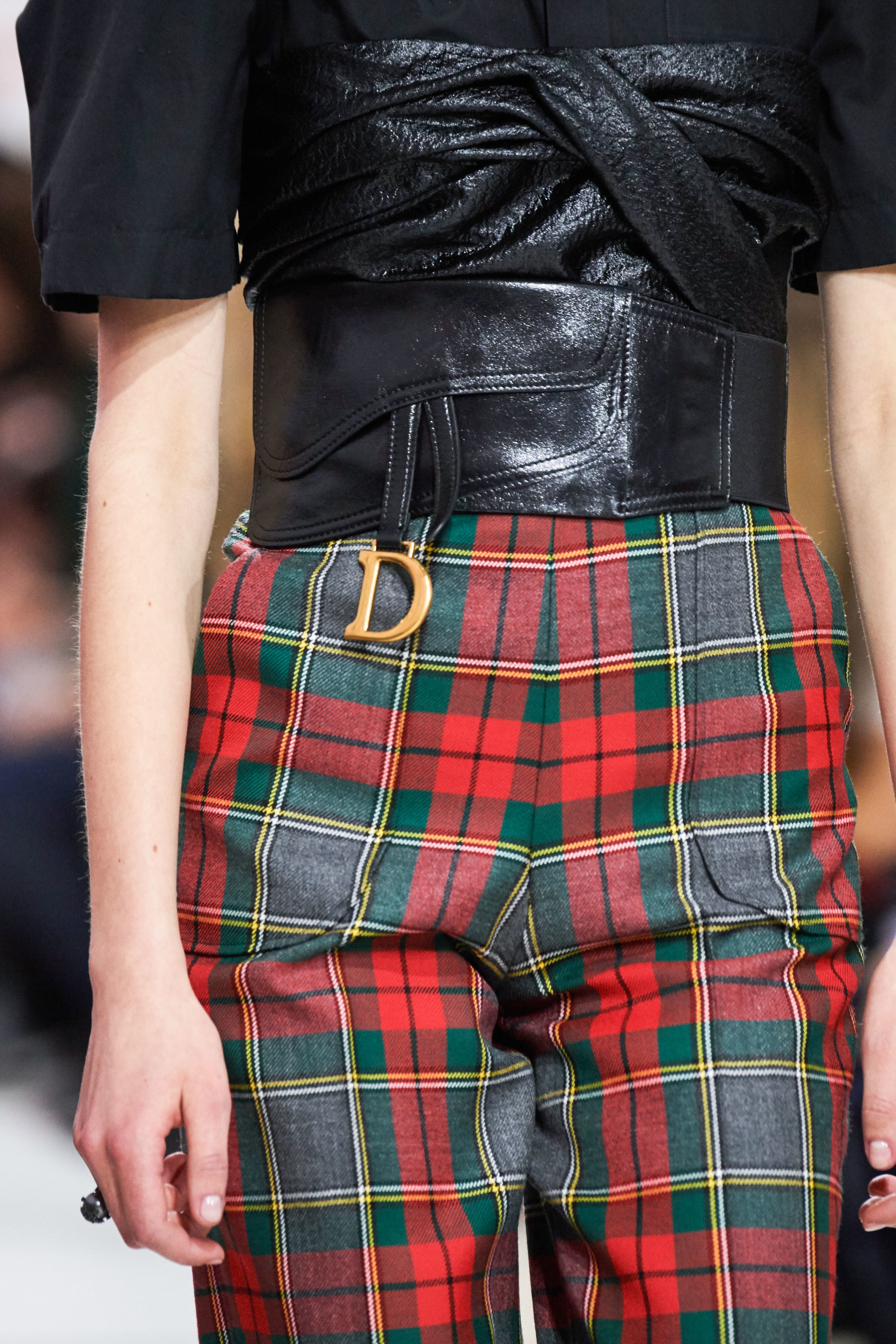 |
Tartan accepts countless colours and different combinations, the key lies in personal taste. The most common are the most classic in red or green or black and white and in XXL size. In the late twentieth century tartan was also associated with a more transgressive aesthetic and found adherents in the punk movement of the late 70s with designers such as Vivienne Westwood and grunge and its nineties counterculture. To cite some examples, at this time John Galliano and Alexander McQueen adapted it.
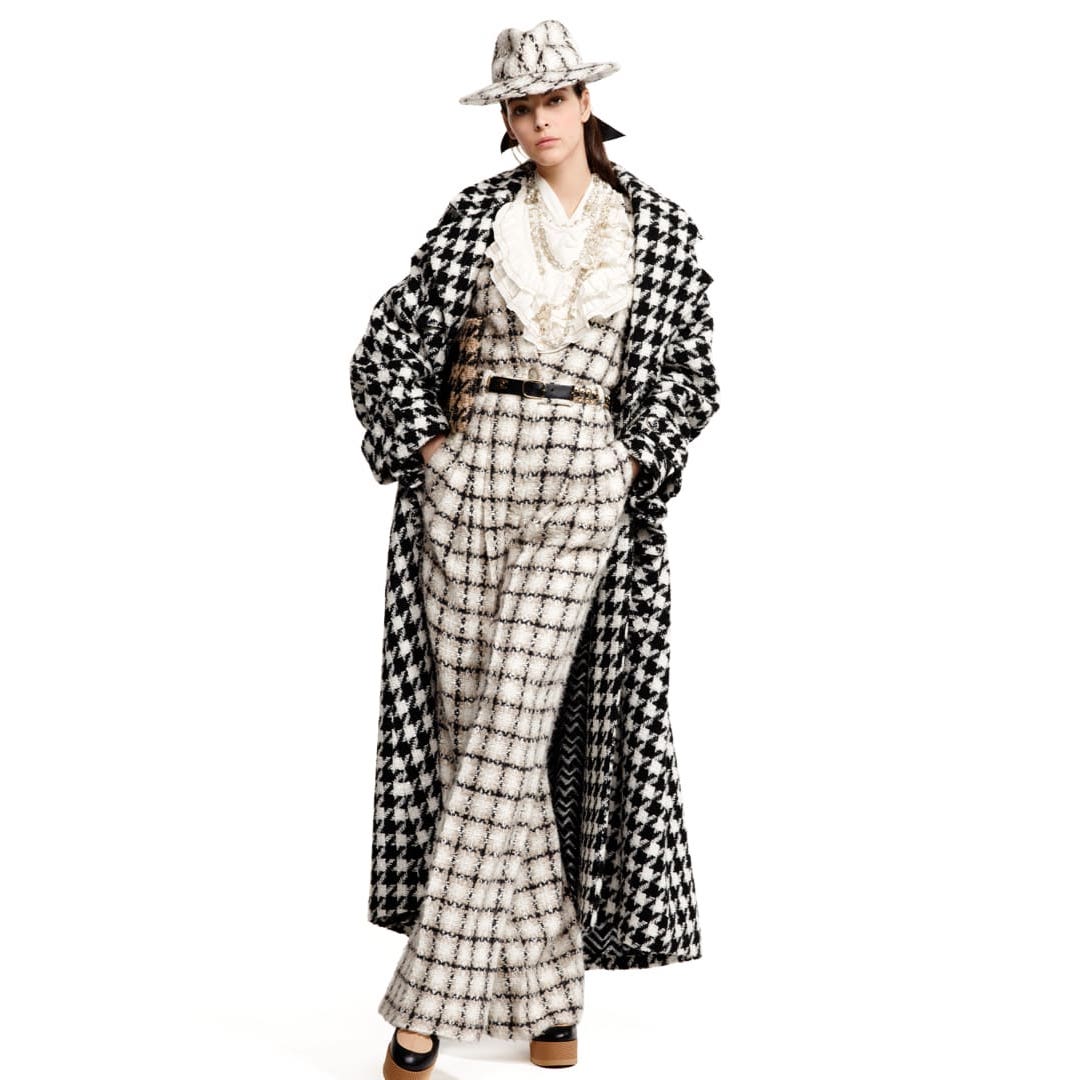
Window frame checks
We are talking about a type of simple frame that makes squares thanks to the fine lines that make it up. Thus on a dark background a light line is added that draws a broad picture. As a base the window frame can have a tartan (with finer wool) or a tweed (which gives it a more rustic look). This type of check became popular in the 30s in Britain when people began to look for more daring and informal prints that maintained that classical dandy image, but with certain licenses.
Today window frame checks are widespread and are used almost equally in winter and summer fashion collections. We refer you to the last collection made by Karl Lagerfeld for Chanel where you can observe these types of checks mixed with other fabrics and prints.
The current Gratacós collection also contains many plaid fabrics. Here are some references for you to get inspired.
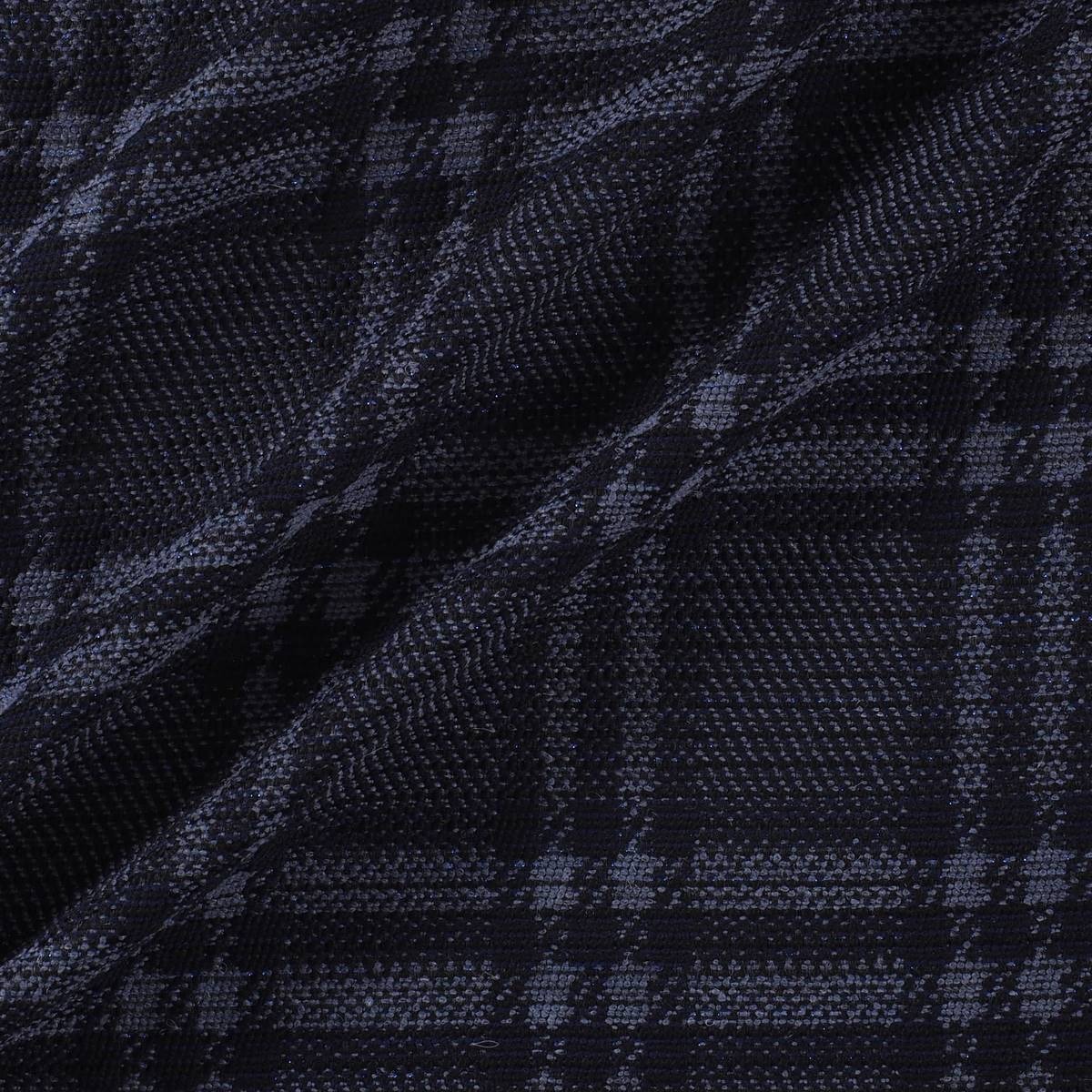
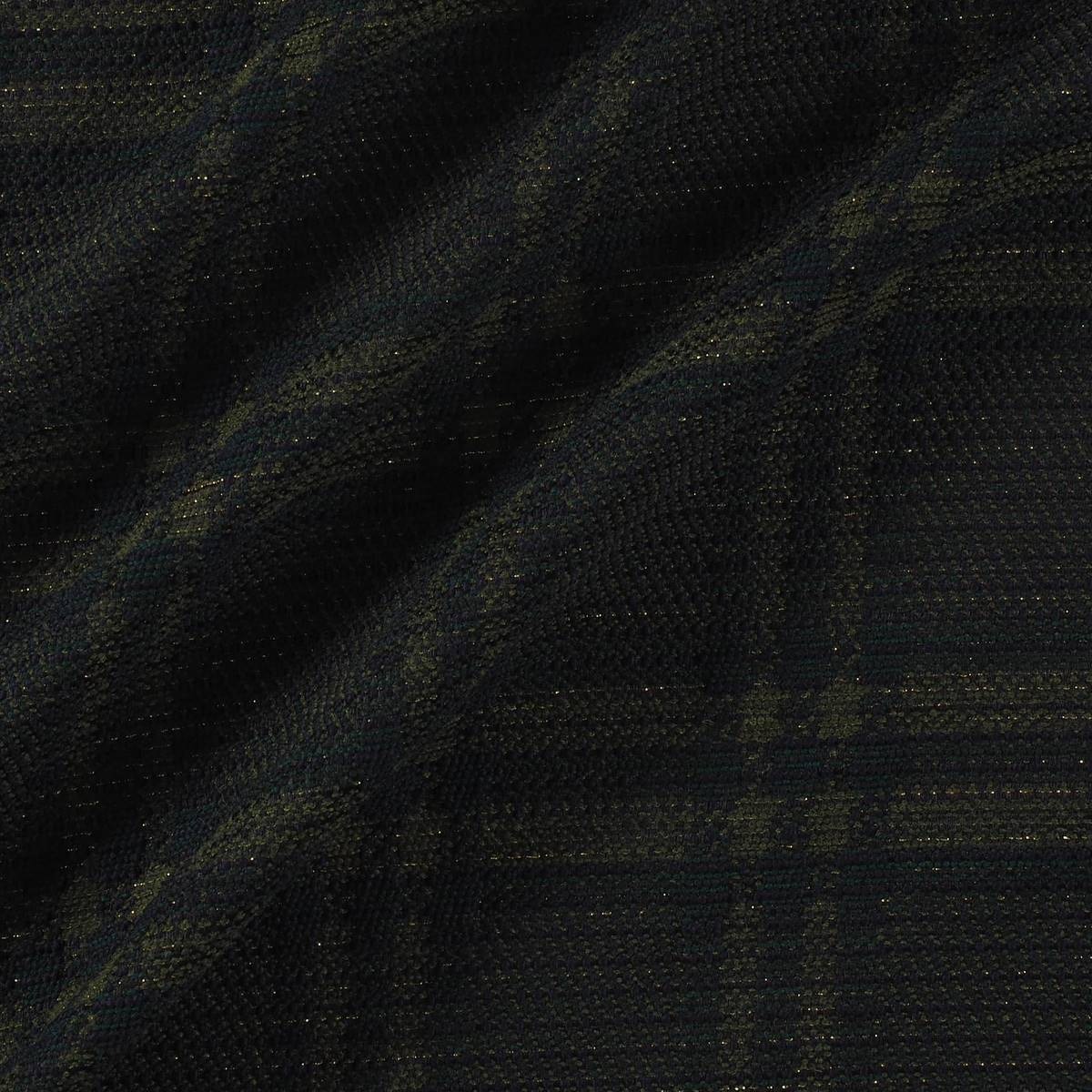
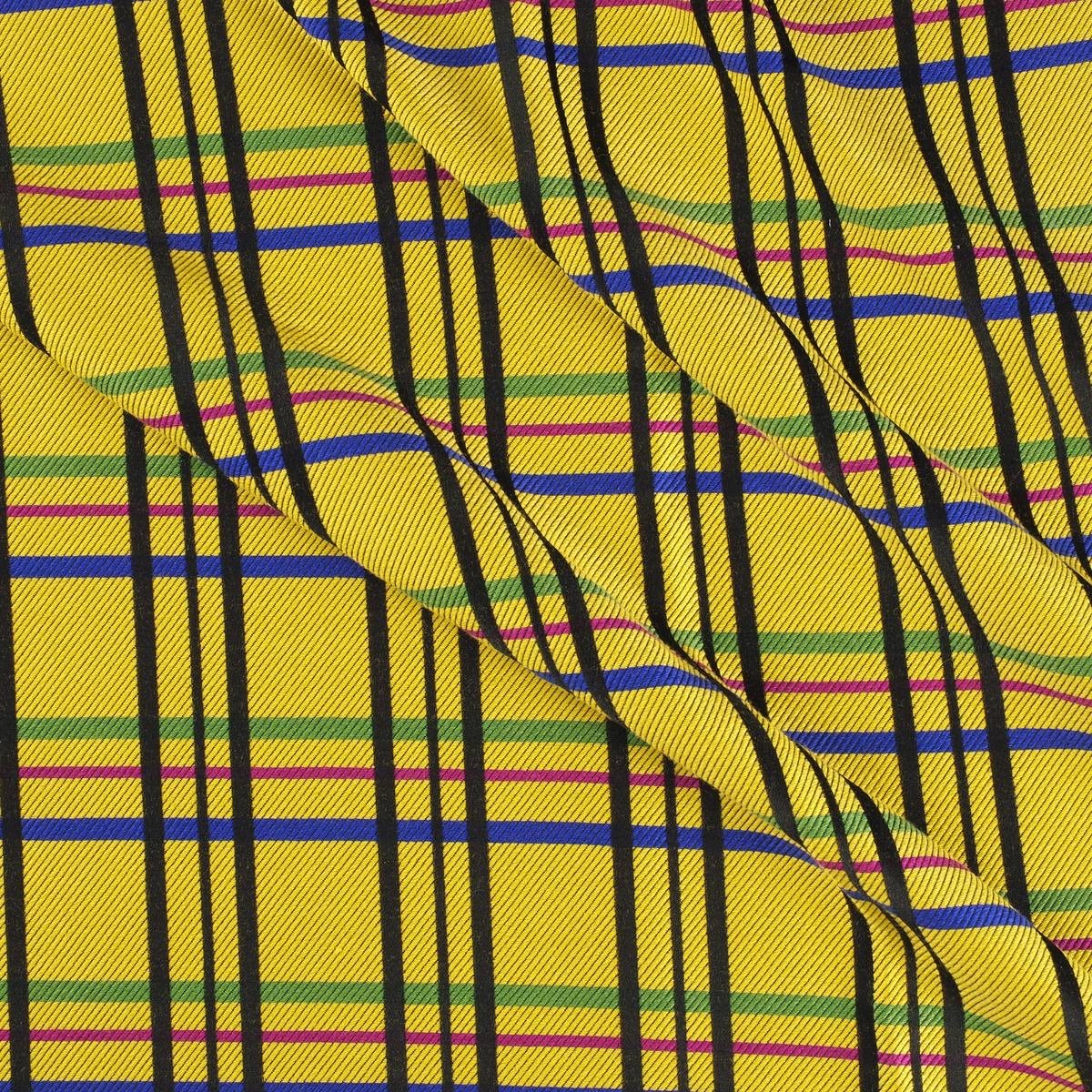
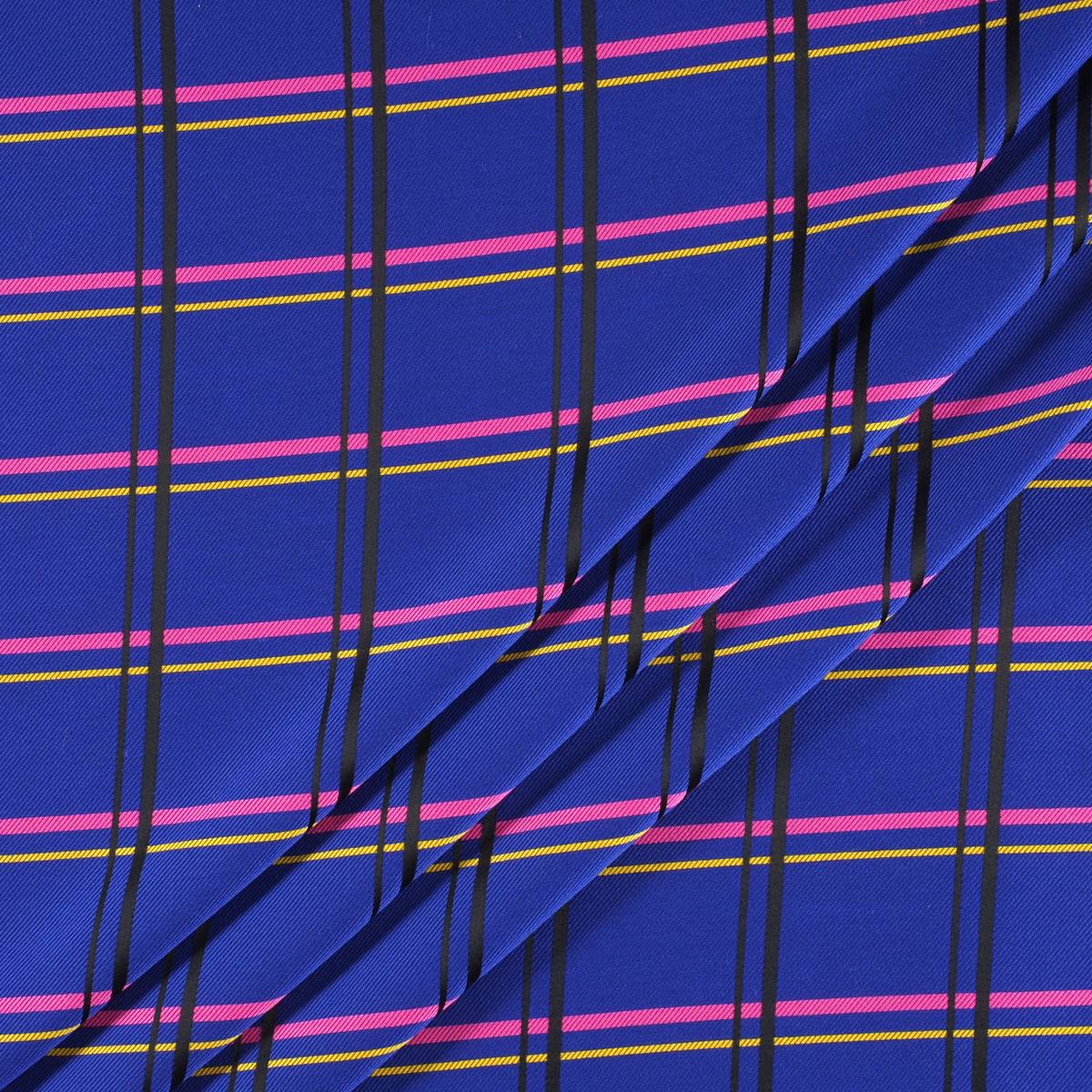
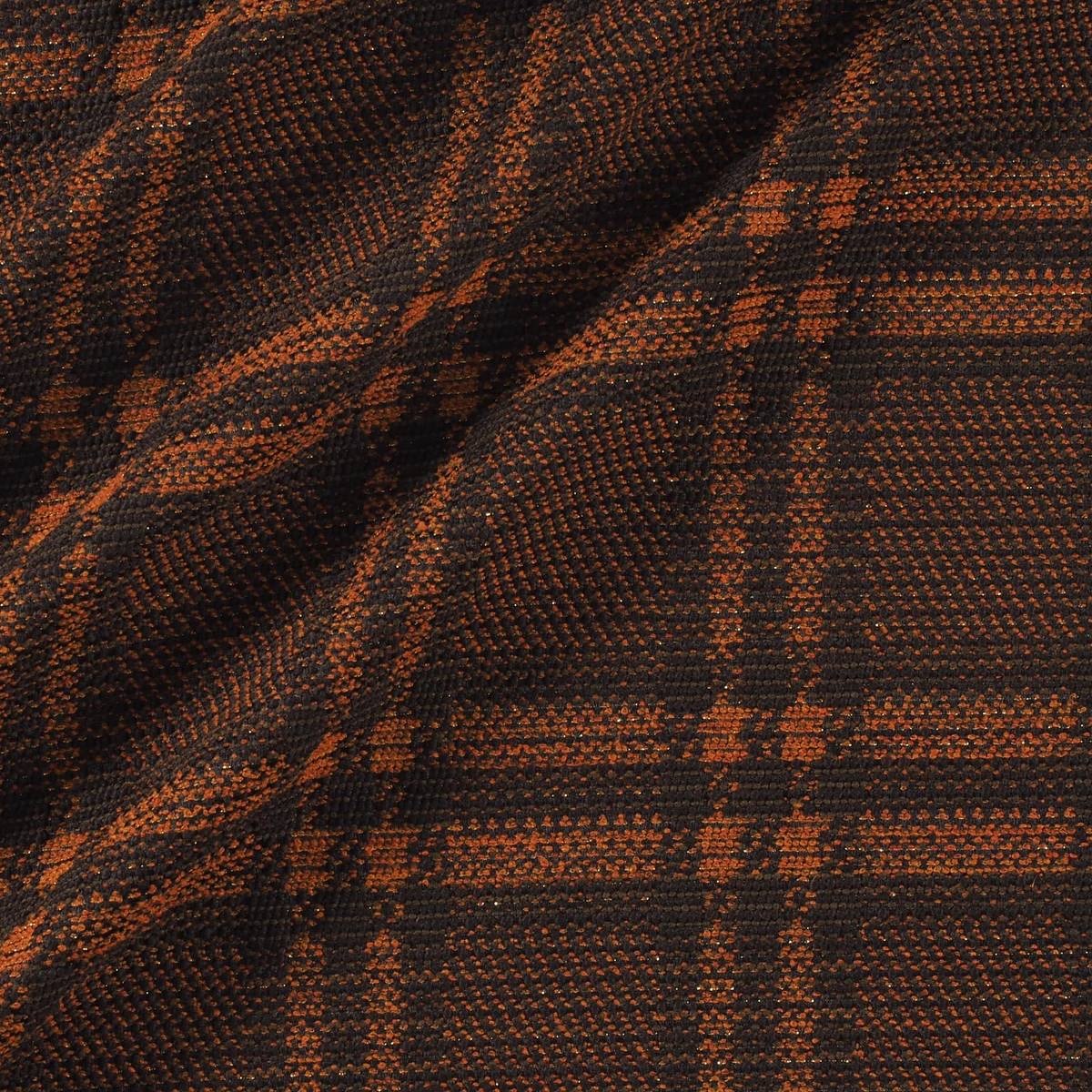
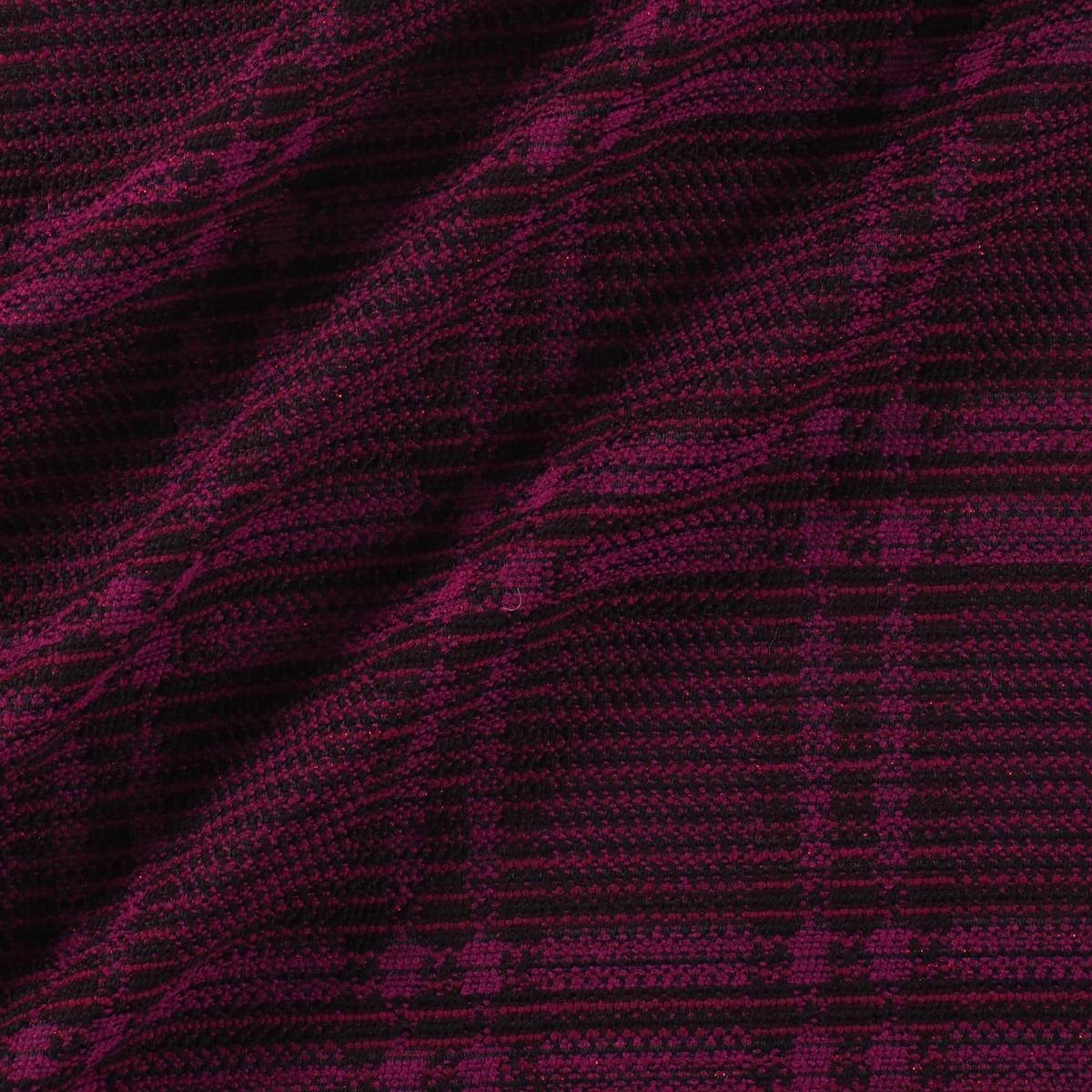
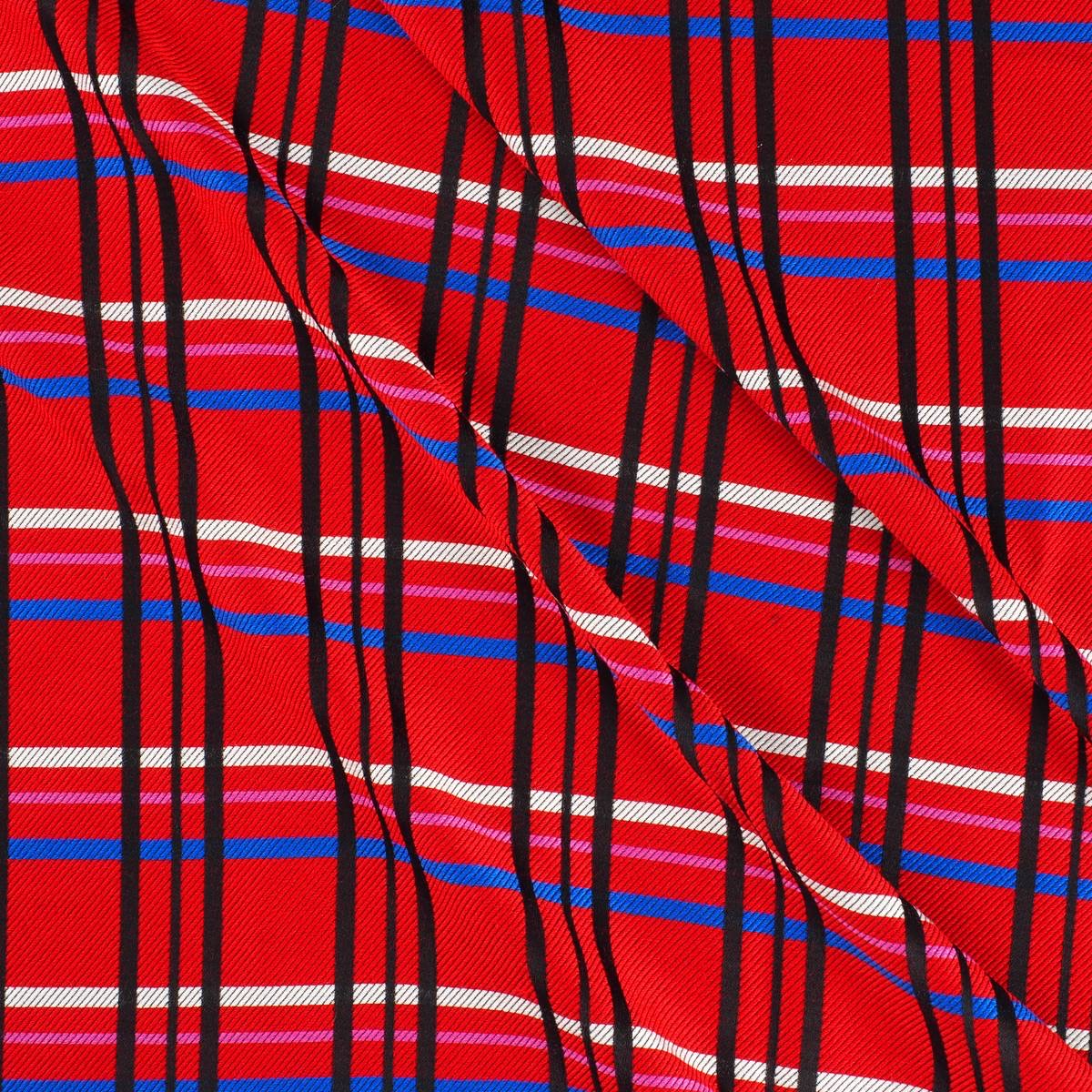
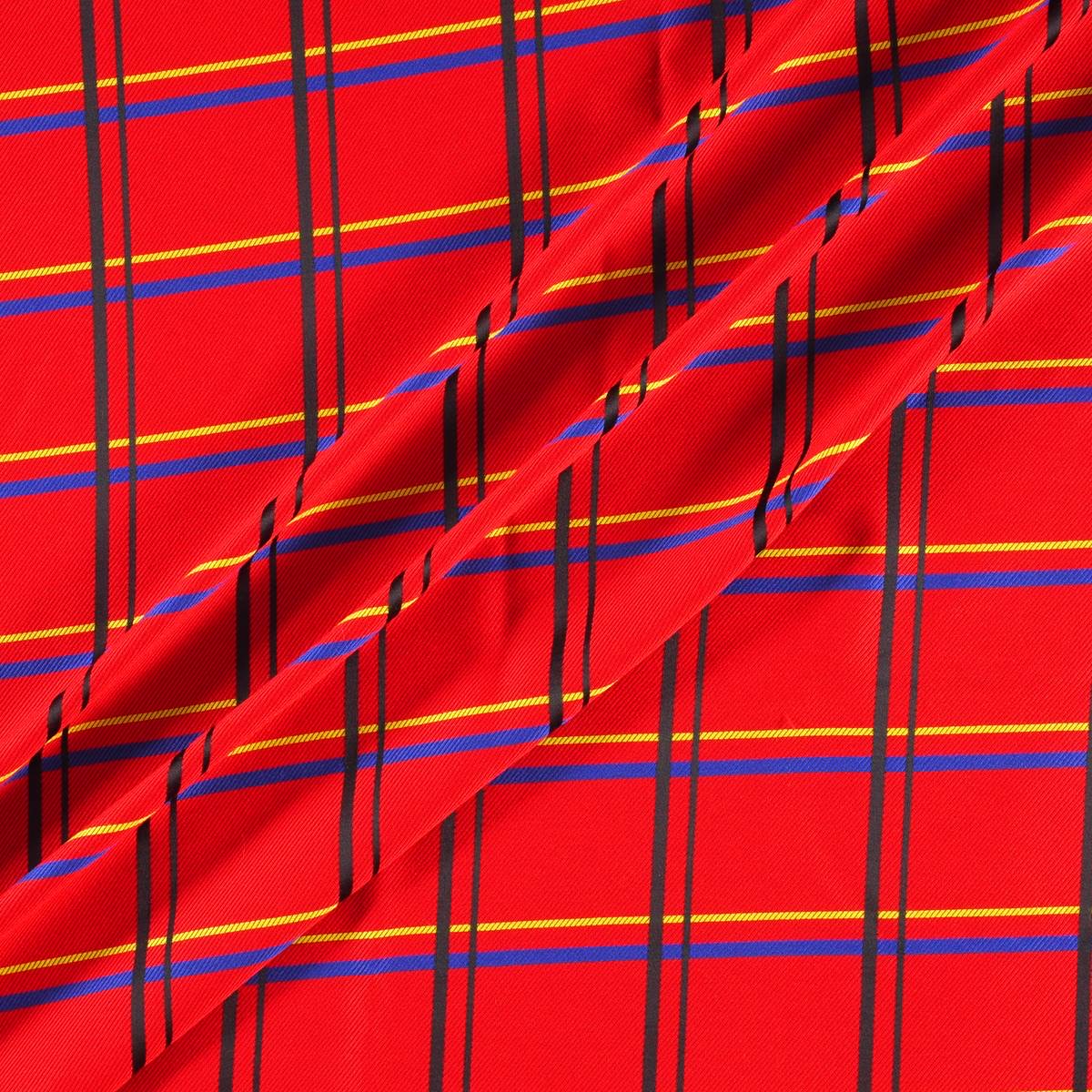
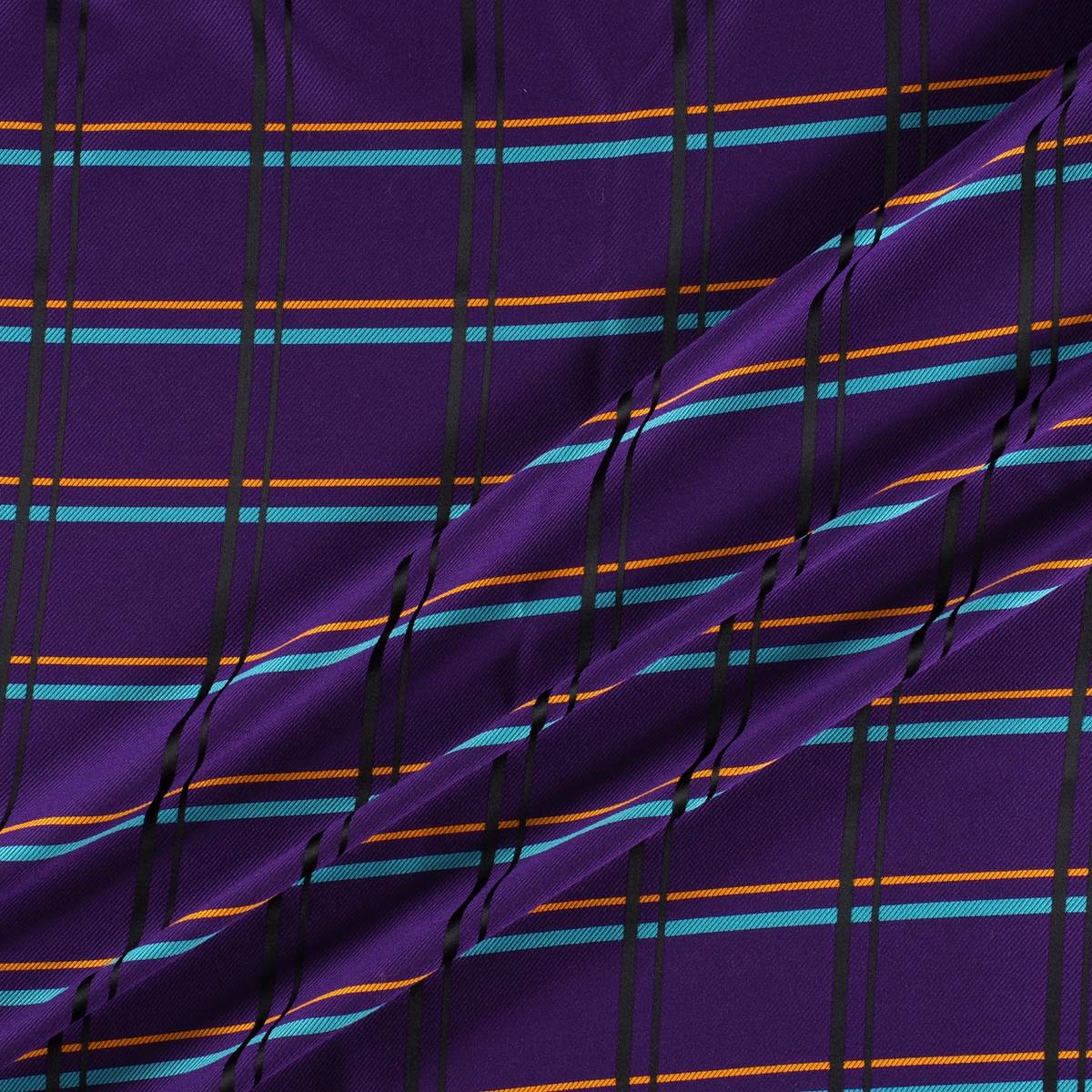
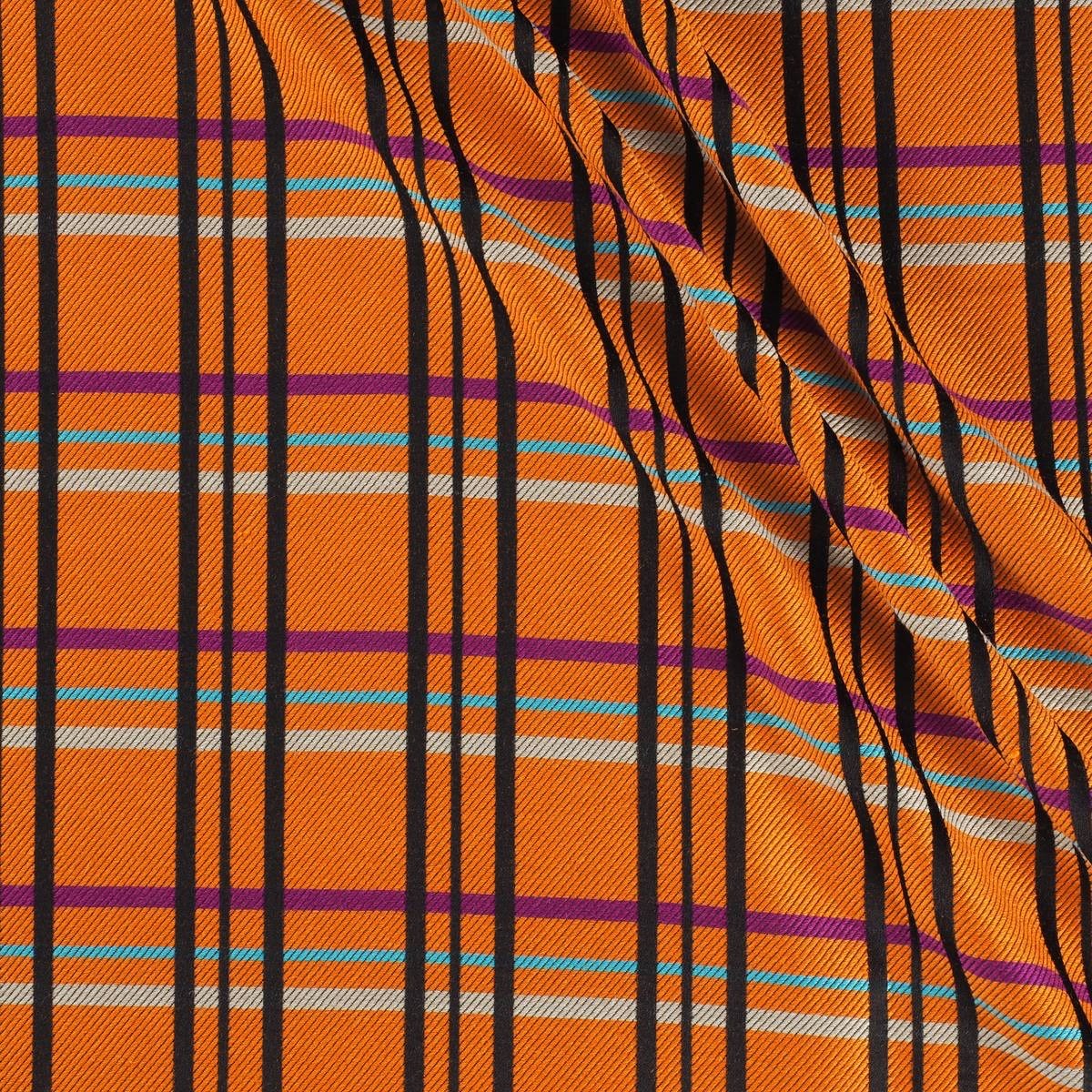
Jueves 26 septiembre 2019
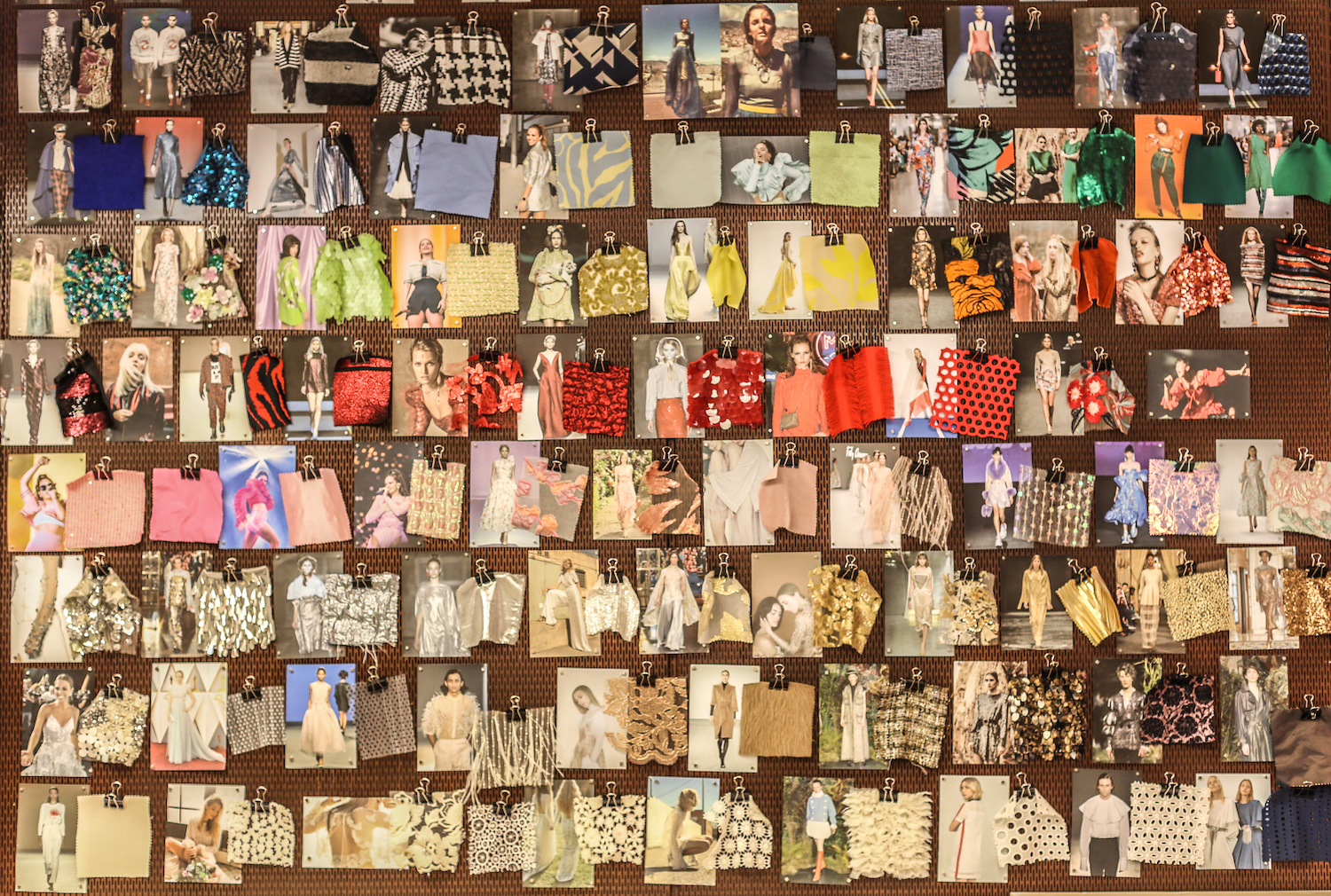
General concept
Technology and ecology. Are they two antagonistic concepts? Can they go hand in hand? At Gratacós we think so. Innovation and the latest technologies at the service of the new green economy, one that is at the service of sustainability in all its dimensions. A global strategy that affects companies in any sector and on which we at Gratacós have been working for many years in multiple ways, such as energy saving or the commitment to recycled packaging that complies with European regulations. Even so, it is in this Autumn-Winter 2019/2020 collection that the move towards sustainability is also affecting production processes, with the introduction of sustainable fabrics in our traditional seasonal catalogue.
In the era of fake news and information excess (which ironically generates more misinformation) we want to be more honest than ever. We have started on a path of transition towards sustainability, choosing recycled and regenerated fibres to produce sustainable fabrics that minimize the impact on the environment. In this collection we have introduced some rather anecdotal articles because we consider that it has been an experiment which seeks to mature processes. The idea is that through the ingenuity and creativity of the design department we will take new steps in future collections, but in advance we will supply you with abundant items made from recycled and regenerated raw materials. That is why we consider this to be the collection of change. From the beginning to this move towards greener technology and ecology which creates synergies for a more sustainable world.
That said, the proposal ‘ Technology vs Ecology ‘ was inspired in its day in a context of mutation and change that specifically affects the design department. It was not an easy collection to conceive because the global economic context was valued to create more contained (but no less creative )products for greater acceptance in a market that is unstable and low risk for a season that is born with a great difficulty in generating concepts. Even so, the collection was conceived from three points of view: a certain austerity with articles that cover the classics using new contemporary languages; a transeasonal vocation for an intelligent and flexible wardrobe with items that work during this interim period; finally, a line of items for special occasions with reflections and glitter that enrich the fabrics: beautiful jacquards, fancy threads, winter flowers, tartans, prints in vintage velvet … An evening creation interpreted freely and with some extravagance.
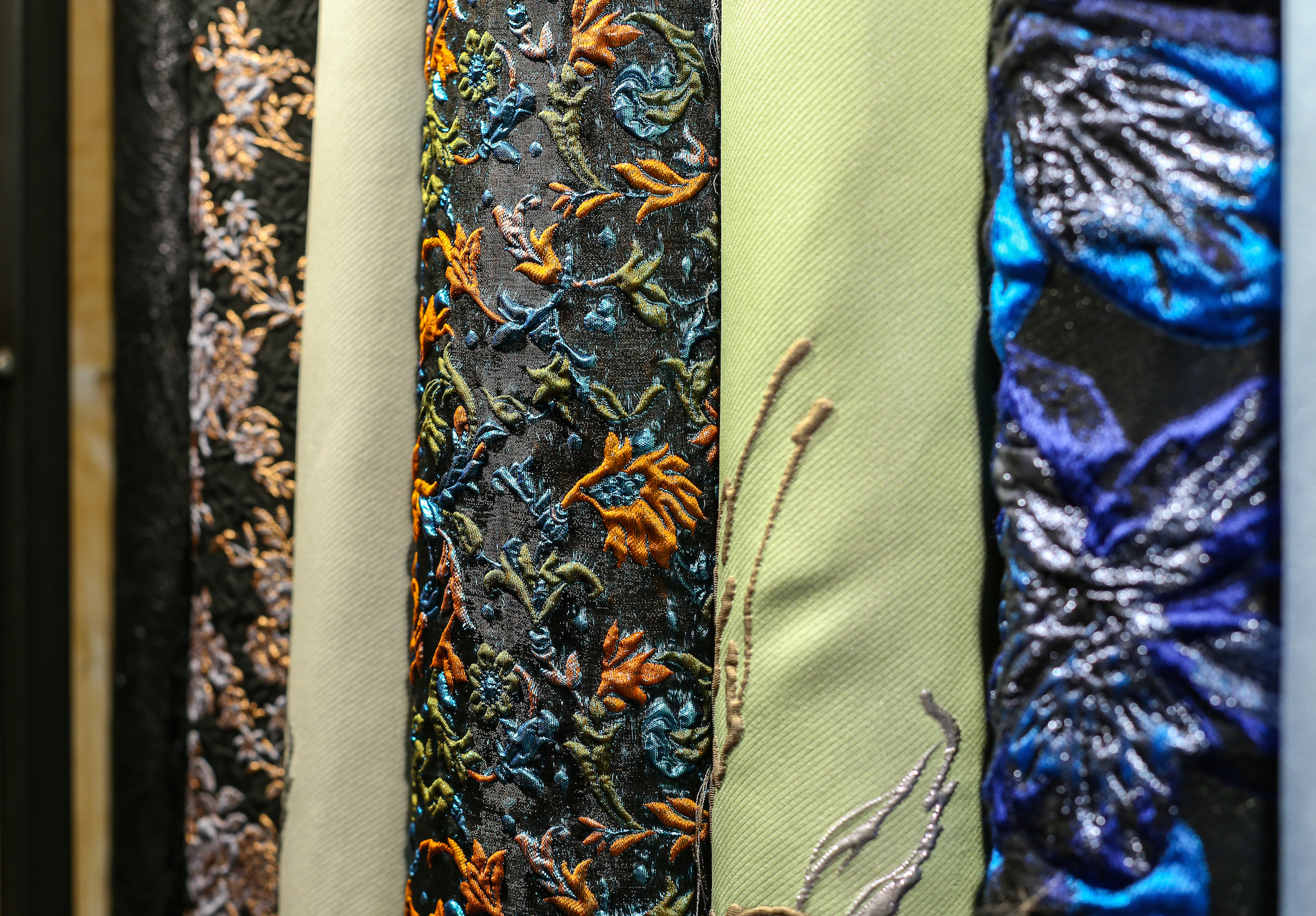
Fabrics
Given this sobriety and classicism, this collection has used noble materials for austere, serene and strident-free fabrics. Robust fabrics only in appearance with elaborate textures of strange touch where the glows merge with the matt. Velvets and silks become denser, but maintain lightness and softness to the touch to preserve a theatrical point without falling into excess. Tactile weaving designs and dark-coloured fabrics that play with well-studied points of light with dimmed brightness, but more rational than ever, have also been taken into account. Controlled light.
The Autumn-Winter 2019/2020 collection is also a collection rich in fabrics that mimic the fake fur or skin of animals with a clear cruelty-free spirit . Finally we have taken into account the fabrics that mimic manual techniques such as tie-dye , watercolours … It is obvious that they are manufactured via an industrial and digital process, but we try to make the final result seem handmade.
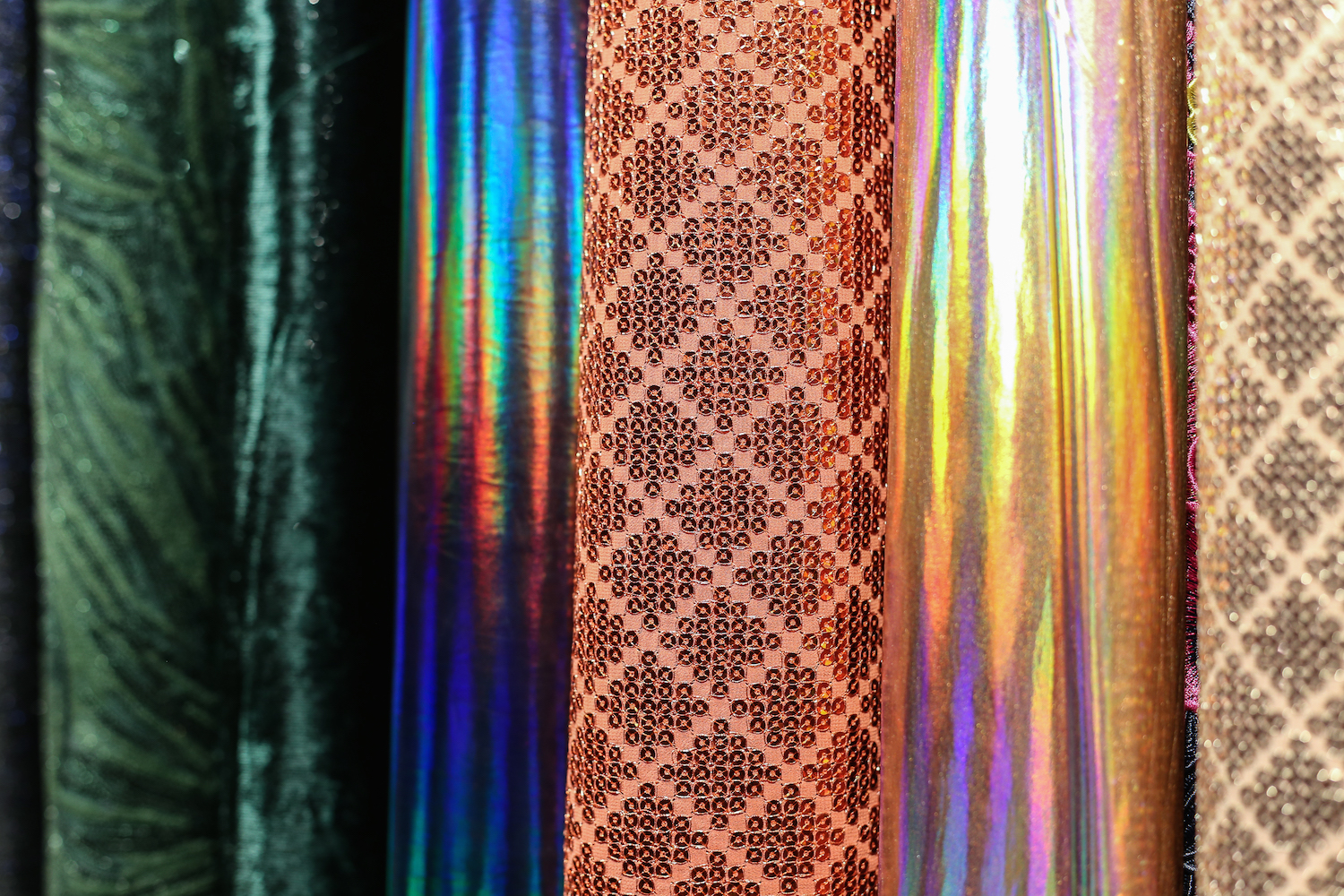
Designs
The designs also connect with nature from different angles: from floral elements, through spots and reliefs that mimic some minerals to prints that are reminiscent of of animal skins. The collection also includes the most basic linear graphics, pictorial motifs and a new reconfiguration of stripes and squares.
In fact, in general it is an eclectic proposal that mixes several codes, maintaining a basic tune: skin, manual-looking flowers, dimmed glosses, retro motifs inspired by the upholstery of the home, digitally printed tartans, surprising textures, night volumes …
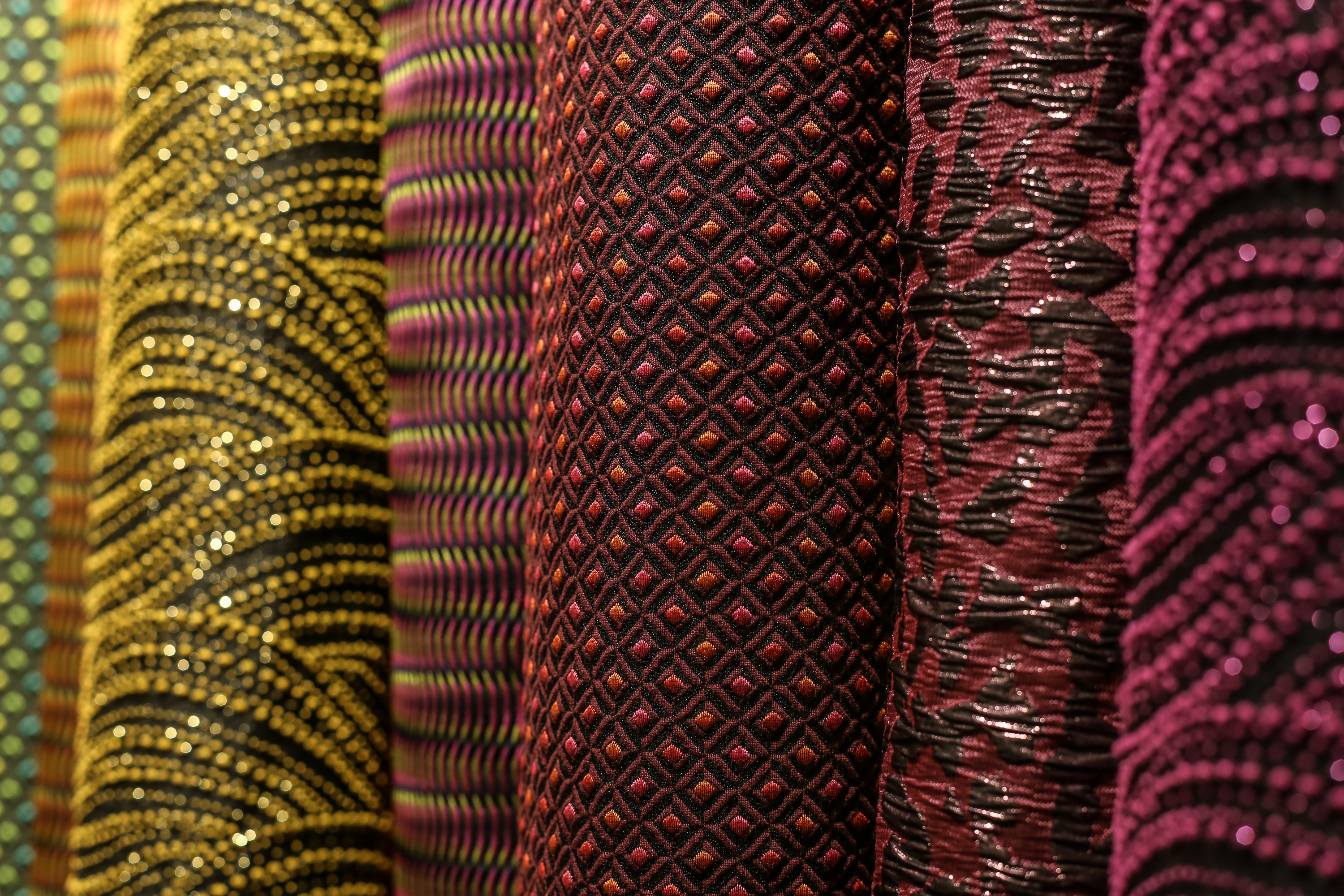
Colours
In chromatic matters there is talk of a dense but surprising collection where dark colours abound with small, carefully-worked glints that break with any monotony. A kind of poetic darkness. Black is a constant colour that articulates the winter creation. These muted winter tones refer to the beauty of imperishable classics. Sensual and elegant colours where textures and volumes become more evident.
Beyond the dark range there are other more cheerful tones such as some brush-strokes of winter blue, bright reds, caramelised bricks, cold turquoises with mustards, seductive greens (now paler compared to other seasons) and a palette of pinks in soft shades. There are also orange and strawberry nuances that seek harmony and contrast with the rest of the colours in the collection. All this colour flirts with the metallic shades, especially matt gold.
At Gratacós we hope you like this new feature and we invite you to come and see it in our store in Barcelona.
